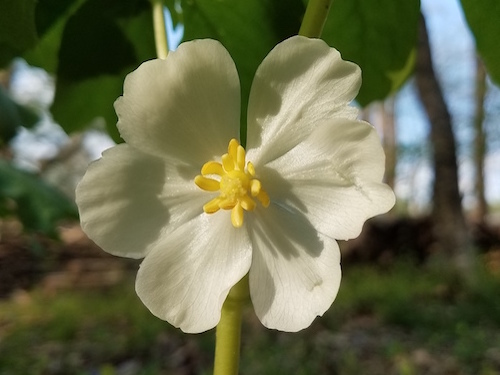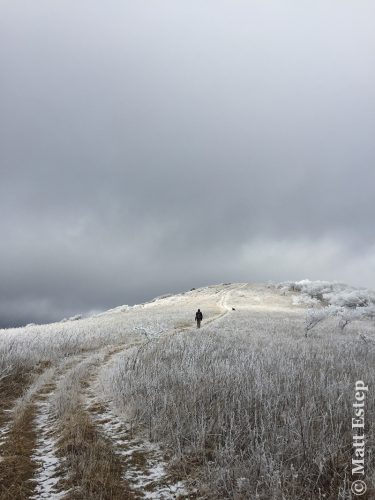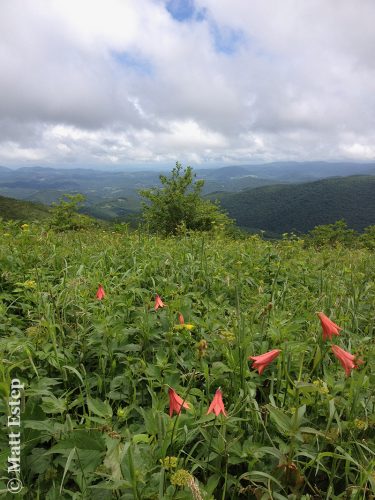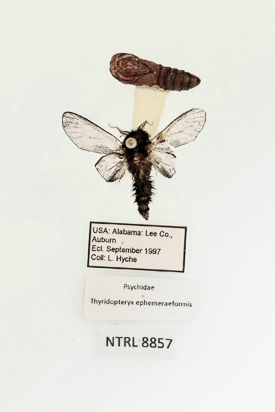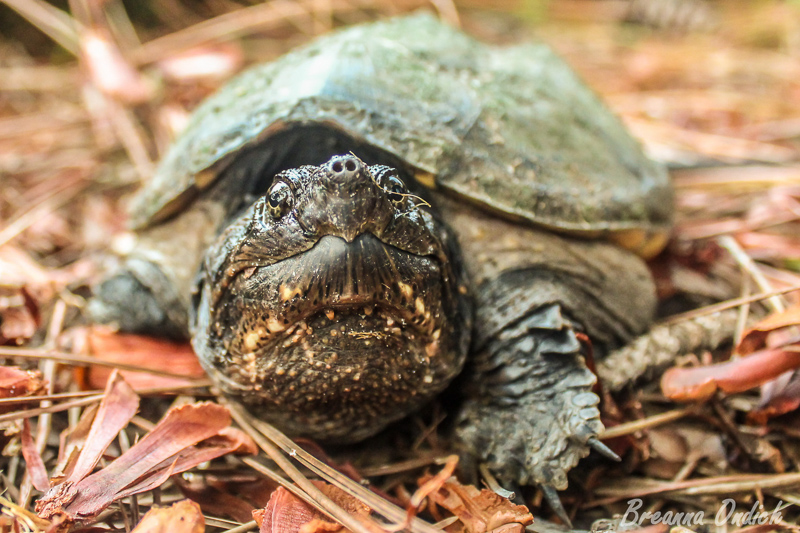 Common Snapping Turtle. Photo: Brianna Ondich.
Common Snapping Turtle. Photo: Brianna Ondich.
By Peter Hortensius, Naturalist Center Intern
In January 2022, the largest Common Snapping Turtle (Chelydra serpentina) known from North Carolina passed away after spending the last decade of its life at the NC Museum of Natural Sciences. Hearing about its death made me recall a memorable experience I had with a snapping turtle in 2019. While riding my bike around Wilmington, I saw a large object in a nearby pond. I pulled over and realized that it was a Common Snapping Turtle. The turtle was marked with scars and must have had a long, eventful life. The encounter rekindled my childhood love of turtles. Shortly after, I visited the NC Museum of Natural Sciences and observed the record-setting turtle on display. I was lucky to get a glimpse of the animal before it passed away. It was a reminder about how big these creatures can get and how they should be treated with respect, as they play an important role in North Carolina’s ecosystems.
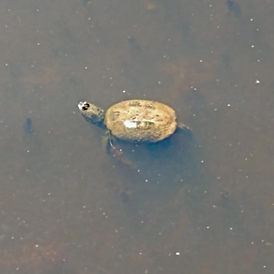 Snapping turtle. Photo: Peter Hortensius.
Snapping turtle. Photo: Peter Hortensius.Common Snapping Turtles are smaller, but more widespread, ranging across most of the eastern US and into parts of Canada. While alligator snappers lurk at the bottom of the water, common snappers are more active predators. They swim in shallow rivers and ponds hunting for fish and are assisted by a snake-like neck that extends up to half its body length to catch their prey.
Common Snapping Turtles are crucial to their local ecosystems as both predator and scavenger. Being opportunists, these reptiles feed on anything they can snap their jaws into. They primarily eat fish, frogs, insects, aquatic plants and other reptiles. They are more than willing to feed on carrion given the chance.
Despite their reputation for being aggressive, they only display this orneriness when they are on land. While in the water they usually swim away from danger. Unlike some other turtles, common snappers can’t fully tuck their head and limbs inside their shells. Their aggression is a defense mechanism to compensate for these vulnerabilities.
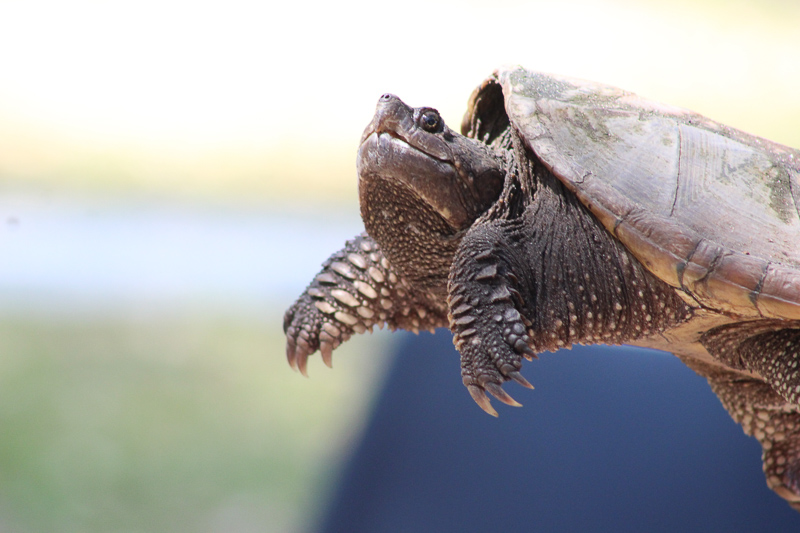 Snapping turtles should only be handled by professionals. Photo: Brianna Ondich.
Snapping turtles should only be handled by professionals. Photo: Brianna Ondich.
Snapping turtles typically come to land to find new waterways, look for mates or lay eggs. This is when they are most frequently encountered by humans and when conflicts may occur. People without experience handling these creatures often underestimate how long and flexible their necks are. Their jaws are powerful enough to severely injure a finger. Considering the numerous bacteria that live in their environment, the risk of infection from such a wound is also high. If you encounter a snapping turtle, give it space and it will likely move along its way. If the turtle must be moved, try using a shovel to relocate the animal.
Most land encounters occur in the spring when turtles are looking for mates or laying eggs. On average, females lay 25 eggs, however clutches of 80 eggs have been recorded. The fate of most hatchlings is grim; few survive to adulthood. Laying dozens of eggs ensures that at least some hatchlings survive. As juveniles they are vulnerable to animals like alligators, birds and otters. When they reach a certain size, they have no natural predators.
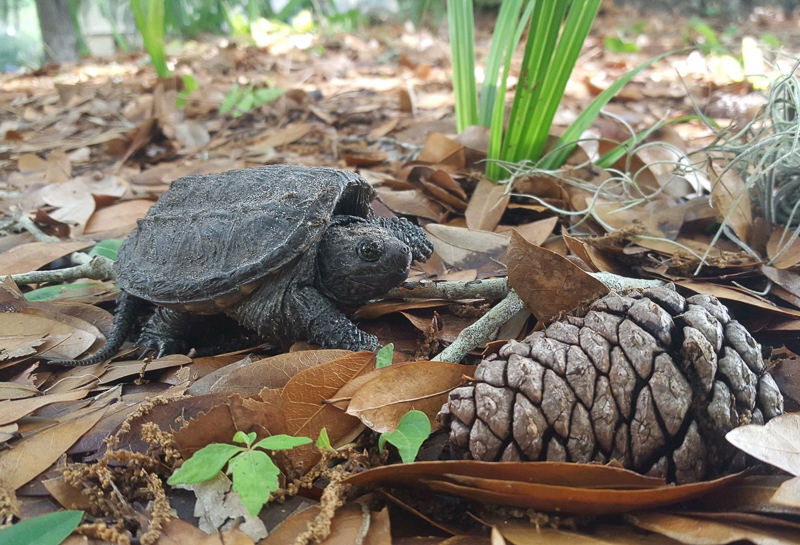 Hatchlings are most vulnerable to predation Photo: Brianna Ondich.
Hatchlings are most vulnerable to predation Photo: Brianna Ondich.
In terms of conservation status in the United States, the Common Snapping Turtle is labeled as “Least Concern.” In North Carolina, they are widespread and common. Despite the Least Concern label their numbers have declined over recent decades. The main threat comes from habitat loss, the pet trade and road mortality. Females are especially vulnerable as they can be hit by motor vehicles while crossing roads in search of nesting sites. Snappers are also hunted for their meat and eggs, which is made into turtle soup, and considered a delicacy in some states. These hunting pressures have resulted in further declines.
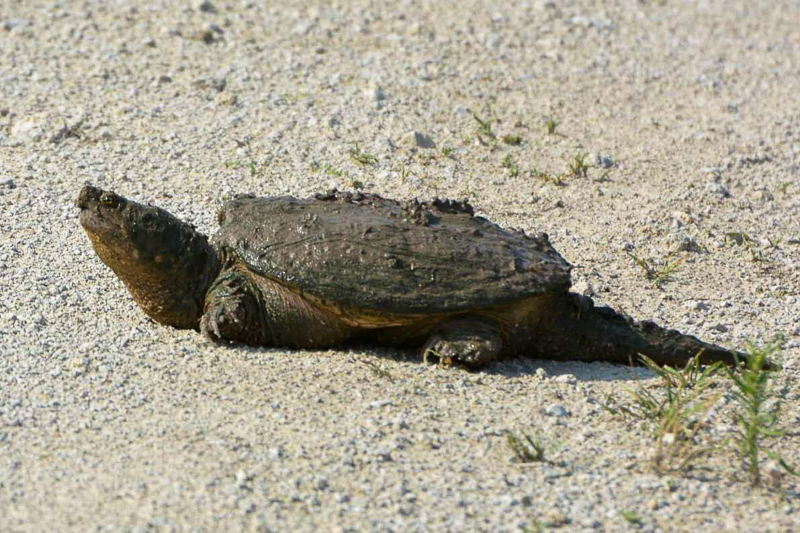 Roads are one of the biggest hazards for snapping turtles. Photo: Lance Paden.
Roads are one of the biggest hazards for snapping turtles. Photo: Lance Paden.
Fortunately, snapping turtles are still commonly seen in the wild. I’ve been lucky to have several encounters in the wild with this species; encounters that have fostered a deep respect for these underappreciated mud monsters. If you can’t find one of these turtles in the wild, visit the downtown Raleigh location of the NC Museum of Natural Sciences. The passing of the Museum’s record turtle was a sad loss, but thankfully he was not the last. The Museum has another Common Snapping Turtle currently on display so that guests can get an up-close glimpse of this remarkable species.
For more information about our upcoming activities, conservation news and ground-breaking research, follow @naturalsciences on Instagram, Twitter and Facebook. Join the conversation with #visitNCMNS.
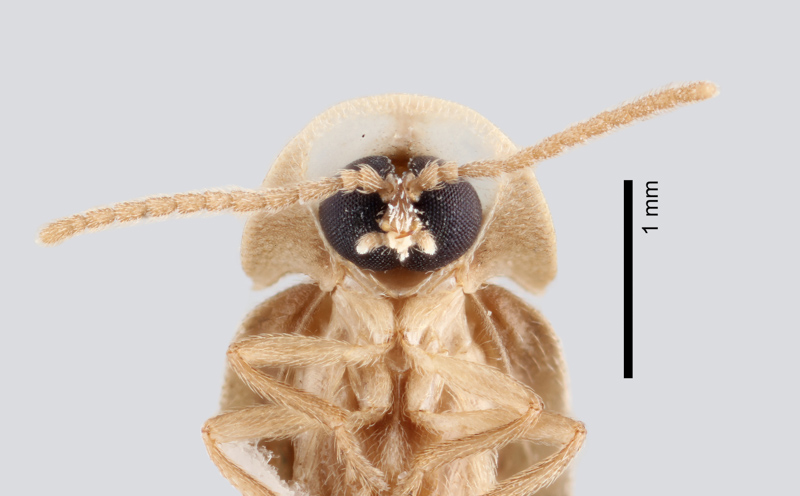 Piedmont Ghost Firefly male. Photo: Matt Bertone.
Piedmont Ghost Firefly male. Photo: Matt Bertone.
Jerry Reynolds, Head of Outreach
Chris Goforth, Head of Citizen Science
Want to go on a ghost hunt? Well, now’s your chance!
You may recall reading the Nature Now blog on Ghost Hunting from June of last year.
To summarize last year’s ghost hunt, we were searching for a “new” firefly related to the Blue Ghost Firefly (Phausis reticulata), famous in our mountains for its seasonal light shows. This new little firefly may be an undescribed species and was only known from one population in Chatham County when Dr. Clyde Sorenson, Professor of Entomology at NCSU, began his search last year. Dr. Sorenson thought that this “Piedmont Ghost Firefly” surely must occur in other areas of the Piedmont. And he was right! He found the firefly in more locations in Chatham and Wake County. Then both Dr. Sorenson and Jerry Reynolds found the ghost fireflies in separate forested tracts behind their homes in Johnston County, once they had looked!
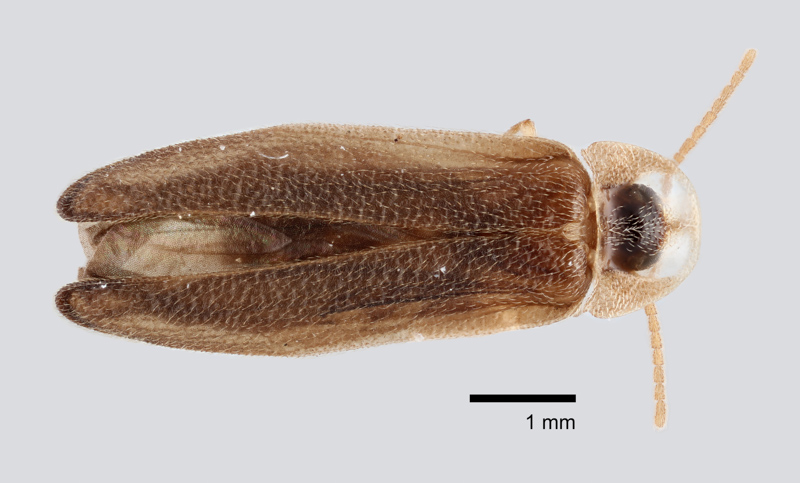 Piedmont Ghost Firefly, male, dorsal view. Photo: Matt Bertone.
Piedmont Ghost Firefly, male, dorsal view. Photo: Matt Bertone.
Where else does this firefly live? Could this firefly’s range even continue further east into the coastal plain of North Carolina? Could it be more common and widespread in North Carolina, but has just been overlooked by the biologists who study such things? John Connors, an experienced naturalist and former Museum educator, saw them regularly when he led night walks in Durant Park decades ago, but he assumed entomologists were aware of them and didn’t make a big deal about it at the time. He just didn’t know that no one else knew they were there!
 Piedmont Ghost Firefly male, ventral view. Photo: Matt Bertone.
Piedmont Ghost Firefly male, ventral view. Photo: Matt Bertone.
There are many questions about this mysterious little firefly and you can help us answer some of those questions. All you need to do is go out at night and look for them! We’ll tell you when and how to look. As for where to look, we will make some habitat suggestions but you can pick where to look. We hope to cover a wide geographic area to map out where they occur and where they don’t. Even if you don’t see them where you look, that is important information to us too. And you get to spend a nice evening outside enjoying the dark!
How are you going to know if you see them? That’s the easy part! Many of our other fireflies in North Carolina are identified by their different flash patterns, which can be a bit daunting, until you learn them. For this ghost firefly, you either see them or you don’t. Unlike other fireflies in the area, males fly just a couple of feet off the ground with their light continuously on, sometimes up to a minute or more. Females cannot fly, and glow continuously from the leaf litter, trying to attract the males to their location. The ghost firefly’s light is fairly dim when compared to the bright flashes of our other fireflies, appearing bluish green or blue to most observers.
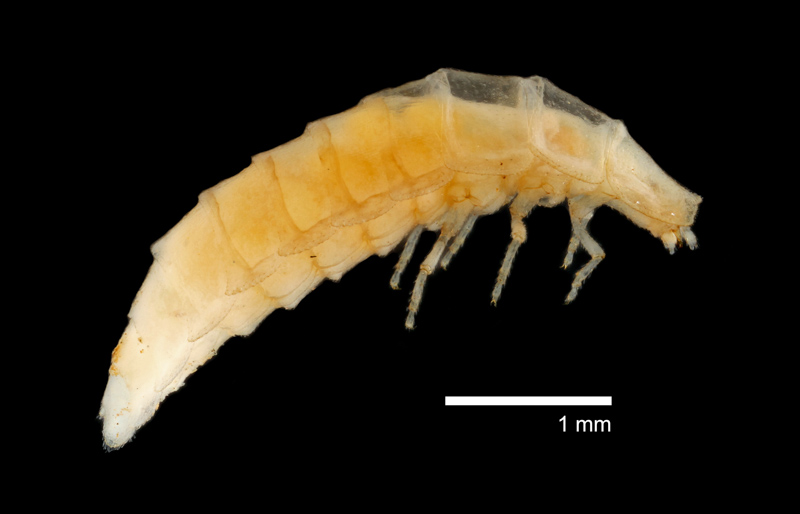 Piedmont Ghost Firefly, adult larviform female. Photo: Matt Bertone.
Piedmont Ghost Firefly, adult larviform female. Photo: Matt Bertone.
You might think you are hallucinating when you first see the dim bluish light of a ghost firefly, but there’s no doubt if you keep looking. No other firefly will appear this way. We will provide directions on how to document your observations, including the location and viewing conditions at the time. We look forward to your observation reports and to learning more about this mysterious firefly that has been living in our area for years hiding in plain sight!
Please join us on our Carolina Ghost Hunt and haunt some woods near you!
For more information about our upcoming activities, conservation news and ground-breaking research, follow @NaturalSciences on Instagram, Twitter and Facebook. Join the conversation with #visitNCMNS.

If you walked out your door right now, how many species do you think you could observe? 5? 10? 20? It’s likely far more than you’d expect — and we have a great opportunity that can help you find out! The City Nature Challenge is an international, biodiversity-focused citizen science event that runs April 29 through May 2, 2022.
Anyone can join the City Nature Challenge! Visit North Carolina’s City Nature Challenge website for information about our five participating regions.
We urge all participants to follow current public health guidelines provided by the North Carolina Department of Health & Human Services.

How to Participate
In order to participate, you’ll need to head outdoors to find and photograph as many different wild species as possible in your local area.
You’ll upload your sightings through the iNaturalist app. (Register for a free iNaturalist account). You may also upload photos to the iNaturalist website.
This event aims to document the incredible biodiversity you can encounter in your everyday life, especially in urban and suburban areas where wild species are often overlooked.
The 2022 City Nature Challenge is expected to have over 300 participating cities on every continent!
Three Reasons to Participate in the City Nature Challenge
- Learn and Explore
Learn more about the species that live around you. This event provides the perfect opportunity to explore! The iNaturalist platform has powerful image recognition software built into both the app and the website, so you can identify the species you photograph as you submit observations. In the past, participants have tried to document as many species as they could in their own yards or neighborhoods, while others traveled to interesting natural places in search of more adventure. Whatever your approach, any photo taken during the four days of the City Nature Challenge and uploaded to iNaturalist by Sunday, May 8, will count toward your local area’s observation totals. - Support Science
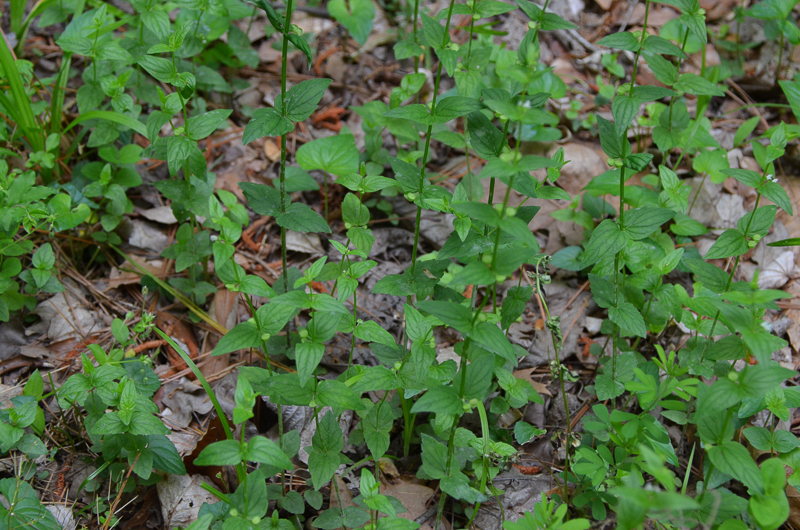 Veined skullcap. Photo: Jennifer Tredway.
Veined skullcap. Photo: Jennifer Tredway.
While the City Nature Challenge is fun for participants, there are other benefits that reach far beyond this event. All submissions made to iNaturalist are accessible by scientists who use data from the site in their research. By 2021, nearly 1,000 peer-reviewed publications had made use of iNaturalist observations. In 2019, one Museum volunteer participating in the Triangle Area photographed a seemingly random plant she saw in a park in Raleigh, NC. Her observation marked the rediscovery of the Veined Skullcap (Scutellaria nervosa), a plant that had not been seen in Wake County since 1967! Local native plant experts quickly put conservation efforts into place to help protect this species for future generations. - Show Off North Carolina
From the mountains to the sea, North Carolina is a beautiful state, rich in its biodiversity. You can help show it off on the international stage by participating in the City Nature Challenge this year. You can play a role in not only highlighting the natural world but promoting conservation of its species as well. Show us your most amazing discoveries along the way by sharing on social media: just tag us @naturalsciences.
The Museum and City Nature Challenge
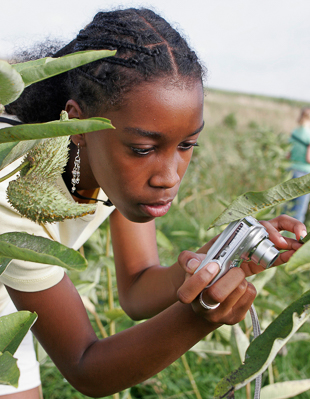
This is the sixth year the Museum has participated in the City Nature Challenge.
Staff at the Museum’s Prairie Ridge location have led the charge in the Triangle area since 2017, engaging hundreds of local citizen scientists in the challenge each year. This region has set an ambitious goal to surpass 20,000 observations this year (in 2021, 15,375 observations came from the Triangle area).
The Museum’s Whiteville branch joined the challenge last year and heads the NC Coastal Plain region. Last year, the region contributed 2,359 observations. Both branches are thrilled to be collaborating with North Carolina’s other three regions in order to observe and document as much of our state as possible this year!
In 2021, there were over 31,000 observations made in North Carolina. Can you help get us to 35,000 in 2022?
Museum Virtual Resources
Register for Join the City Nature Challenge on Tuesday, April 26, at 7:00pm for a virtual training program, oriented for participants age 13 and older, hosted by Museum staff. Learn how to participate in this event in North Carolina, including how to make iNaturalist observations, how to take a great photo for science, and where to look for species anywhere!

IMPORTANT NOTE about participants under 13: children under 13 are not allowed to create their own iNaturalist accounts, but they can participate by creating an ecoEXPLORE account.
You can also watch Prairie Ridge’s City Nature Challenge video tutorial on their Facebook page at any time.
For more information about our upcoming activities, conservation news and ground-breaking research, follow @NaturalSciences on Instagram, Twitter and Facebook. Join the conversation with #visitNCMNS.
 Panoramic view from the top of Rich Mountain Bald (within Tater Hill Plant Preserve). Grandfather Mountain and the ski slopes can be seen in the background. Photo: Matt C. Estep.
Panoramic view from the top of Rich Mountain Bald (within Tater Hill Plant Preserve). Grandfather Mountain and the ski slopes can be seen in the background. Photo: Matt C. Estep.
By Sophia Kirn, Senior at Appalachian State University and Naturalist Center Intern
As a student at Appalachian State University, one of the biggest pastimes I like to participate in is hiking! Taking advantage of the gorgeous views is a cheap, fun way to take a break from schoolwork. Some of the best views of the beautiful Blue Ridge Mountains can be seen from mountain balds along hiking trails. A mountain bald is a high elevation clearing (around 5,000 to 6,000 feet in elevation), usually on a mountain summit, crest or outcrop where there is heavy grass, shrub and vegetation growth, with few or no trees. The phenomenon of mountain balds has been recorded for hundreds of years; trees should grow there, and often grow in the surrounding areas, but they don’t grow on the mountain balds, and scientists aren’t exactly sure why.
Winter wonderland – Rich Mountain Bald (within the Tater Hill Plant
Preserve). Photo: Matt C. Estep.
There are many theories about how the unique plant diversity of mountain balds came to be, with the leading hypothesis being that the mountain balds were created and influenced by the grazing habits of prehistoric megafauna, specifically large herbivores during the Pleistocene. The balds were later kept clear and further influenced by Native Americans and early European settlers using them as livestock pastures. Another hypothesis is that some balds could have been of natural origin, since trees are slow to take hold there even without regular grazing or clearing. Some studies are attempting to analyze the soil content to see if it has anything to do with the unique mix of plant species that grow there. No two mountain balds are the same, so the origin of each one could be completely different!
Mountain balds are an important home for a variety of both common and rare plant species that don’t grow well at lower elevations or under dense tree cover. The special geology of mountain balds is also incredibly important in supporting the rare plant life that grows there. The balds in southern Appalachia sit on a rock type called amphibolite, which is mineral-rich and leads to more neutral soil on the mountain balds that supports a wider variety of plant life.
Most mountain balds are characterized by tall grass such as Flattened Oat Grass (Danthonia compressa), which is a common pasture grass throughout the Appalachian region. While the Appalachian mountain balds are blanketed in snow now, spring will bring about many different flowering plant species, such as Catawba Rhododendron (Rhododendron catawbiense), which gets beautiful pink and purple flowers in the spring, and Flame Azalea (Rhododendron calendulaceum) which blooms red, orange, and yellow.
Gray’s Lily (Lilium grayi) – Rich Mountain Bald (within the Tater Hill
Plant Preserve). Photo: Matt C. Estep.
One important Appalachian mountain bald is Rich Mountain Bald, located on Tater Hill in Watauga County, near Boone, NC. Tater Hill is also an NC Plant Conservation Preserve, which is a protected area (not open to the public) that has threatened and endangered plant species growing in their natural habitats. Tater Hill is specifically classified as a high elevation wetland, and also has a mountain bog on the protected land, so it is an incredibly important habitat for many moisture-loving, threatened plant species, such as Gray’s Lily. Gray’s Lily (Lilium grayi) is an endangered wildflower species that only grows at high elevations in moist environments, and it grows particularly well in open meadow-type ecosystems, making Tater Hill and the Rich Mountain Bald a perfect home. Many of the plants on the balds have been growing there for centuries, such as Blue Ridge St. John’s Wort (Hypericum mitchellianum), which has been used historically by Native Americans to treat mental health issues such as depression and anxiety.
Mountain balds are critical for plant diversity and offer an important window into the past. Since there is no regular livestock grazing happening on the balds now, the majority in North Carolina are maintained by park and forest services for recreational use. Max Patch, Richland Balsam, Black Balsam Knob and Andrews Bald are a few mountain balds open to the public and accessible via relatively short hikes on existing trails. These balds are popular destinations because of the unobstructed view they offer of the mountains around them, especially at this time of year. Go visit one and see what you can find!
For more information about our upcoming activities, conservation news and ground-breaking research, follow @NaturalSciences on Instagram, Twitter and Facebook. Join the conversation with #visitNCMNS.
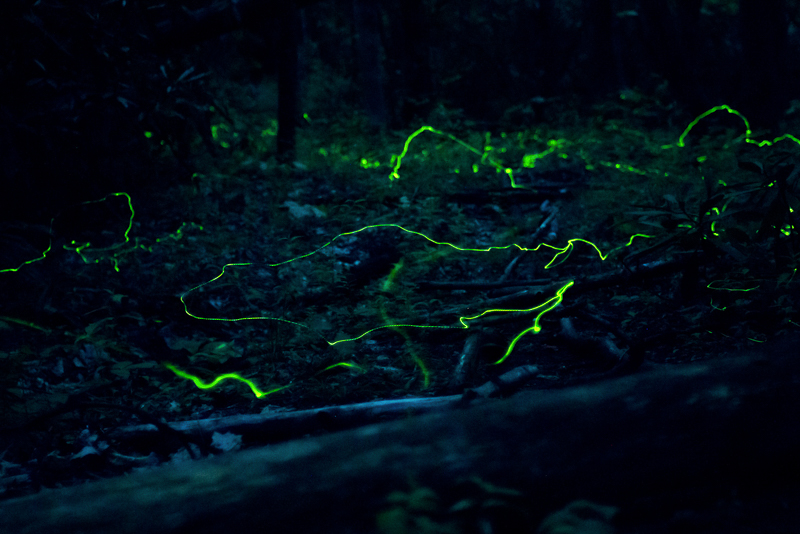 Blue Ghost Fireflies dance above the ground in a moist area near a stream in Pisgah National Forest in late May. Photo: Jordan Mitchell.
Blue Ghost Fireflies dance above the ground in a moist area near a stream in Pisgah National Forest in late May. Photo: Jordan Mitchell.
By Jerry Reynolds, Head of Outreach
Earlier this year Dr. Clyde Sorenson, a professor at North Carolina State University, contacted me to help recruit people for a ghost hunt. (Who you gonna call? OK, not that kind of ghost hunt!) Dr. Sorenson, an entomologist, was in search of the Blue Ghost Firefly. The Blue Ghost Firefly, Phausis reticulata, is well known in the mountains for putting on a light show each year. Along with the Smokies Synchronous Firefly, Photinus carolinus, it draws so many spectators that some places have a lottery system to keep the crowds manageable.
The firefly that Dr. Sorenson is looking for may be a new species in the Piedmont of North Carolina related to the Blue Ghost Firefly. He knew of only one population of this Piedmont Blue Ghost on private land in Chatham County. Thinking they should occur elsewhere, he wanted help looking for them. Dr. Sorenson put out a call to “Help Us Find the Piedmont Ghosts!” on social media.
Who doesn’t love a ghost hunt, particularly if it involves fireflies?
First, let’s set the record straight – fireflies are not flies! They are beetles which produce light in order to find appropriate mates in the darkness, ensuring future generations of fireflies. There are about 35 species of fireflies in NC. They vary morphologically, but more importantly for insects that mate in the dark, they vary aspects of their flashing behavior. Flash duration, frequency, brightness, location and timing are all specific to a species. This “light code” is how they find the right mate for reproduction.
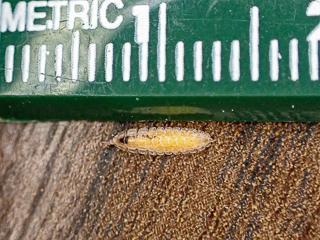
Female Piedmont Blue Ghost with ruler. Photo: Jerry Reynolds.
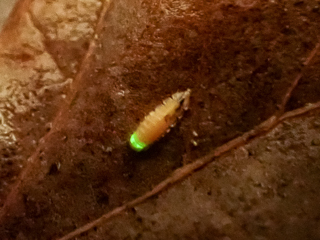
Female Piedmont Blue Ghost glowing. Photo: Jerry Reynolds.
The Blue Ghost Firefly is very small (about the size of a grain of rice) and produces a dim but continuous green light. The dim green light appears blue or blue green to most people in the darkness of the night. The dim lights must have appeared somewhat ethereal to first observers — ghostly apparitions in the darkness — leaving them thinking they were seeing things! Only the brave stuck around in the dark woods to discover the real source of the light.
Female Blue Ghost Fireflies are wingless and differ in appearance from the males: they have a ghostly transparent exoskeleton resembling the larval form of the firefly. Since females can’t fly, they crawl to the top of the leaf litter and turn on their light hoping to attract the attention of males flying low, searching for the female’s dim beacon. If all works out, enough of them will mate each year to continue the cycle of life. Males and females die a few weeks after mating. The female’s last act in life is to guard the 20 to 30 eggs that she laid.
Back to our ghost hunt! On May 1, Dr. Sorenson posted success on social media — four new sites in Wake and Chatham Counties! One of these sites was in Durant Park in North Raleigh, discovered by retired Museum educator John Connors. John was Raleigh City Parks’ Naturalist in the mid-80s, and led night hikes for 5th graders. After reading Dr. Sorenson’s original post, he remembered seeing tiny faint fireflies on those night hikes almost forty years ago. He was intrigued by them and even called them little phantom fireflies. But he never tried to identify them or bring them to anyone’s attention at the time. He and Dr. Sorenson met at Durant Park a few weeks ago and found that John’s phantom fireflies are still there!
A Ghost of a Chance
Wow, this was all great news! I commented on Dr. Sorenson’s post, asking if he thought they might occur in our part of Johnston County. (We live in neighboring subdivisions in Johnston County.) He quipped, “It’s worth looking!” Well, my “looking” was mostly scanning my backyard from the deck. Knowing how close Dr. Sorenson lived to me, I thought, if he hasn’t seen them at his house, it’s very unlikely I would have them at mine. I did see fireflies in the backyard, but only the brighter and more common species.
Another week passed and I was sitting in my recliner after supper scrolling social media posts when Dr. Sorenson posted “Any luck?”, referring to his, “It’s worth looking!” comment. I immediately responded, “You would know if I did!”, not wanting to admit that I hadn’t really looked very hard. I felt bad after sending that evasive reply. Yes, I looked into the yard occasionally, but hadn’t really looked seriously for them. I pried myself from the comfort of the recliner, grabbed a red flashlight (red light preserves night vision) and headed outside. I crossed the small stream behind my backyard and began making my way upslope in the woods. I wanted to make it to the top of the wooded slope to verify they weren’t there, just so I could return to the comfort of my recliner with a clear conscience.
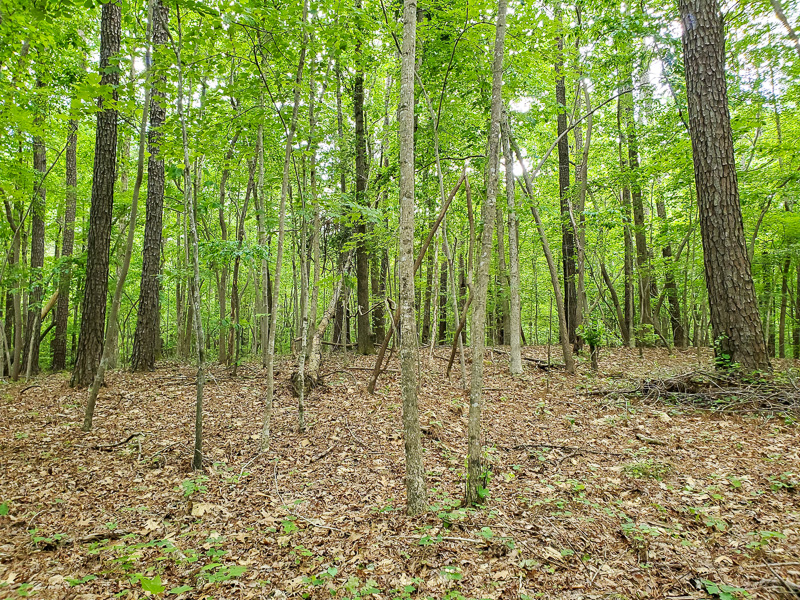 Piedmont Blue Ghost "Haunted Woods." in Johnston County, North Carolina. Photo: Jerry Reynolds.
Piedmont Blue Ghost "Haunted Woods." in Johnston County, North Carolina. Photo: Jerry Reynolds.
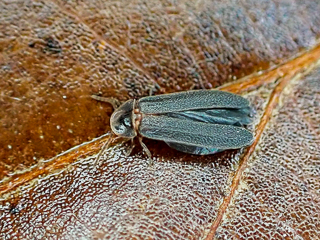
Male Piedmont Blue Ghost firefly. Photo: Jerry Reynolds.
I was almost to the top when I thought I saw something! I stopped in my tracks! Did I really see something or were my eyes or mind playing tricks on me? There it was again! A dim bluish light moving low just ahead of me! Really? Then I looked upslope a bit more—the wooded hilltop was dancing with about two dozen dim bluish lights wavering just above the ground — Blue Ghosts! I saw females in the leaf litter along with males flying overhead. Some males were getting caught in spider webs, so I grabbed one of those and carried it back home as proof that I really saw them.
I never expected to find them behind my house. I was eager to reach Dr. Sorenson, finally connecting with him by phone later that night with my positive report — the first for Johnston County. Dr. Sorenson had made numerous trips to other counties to search for the fireflies, but he had never looked for Blue Ghosts in his own backyard. He finally did after learning of my success and found them behind his house too!
Dr. Sorenson thinks this Piedmont Blue Ghost is a new species of Phausis and may be more common than originally thought. They have a short mating period and display such dim lights that the fireflies would only be noticeable in dark woods away from the glow of houses and streetlights. People who do see them may think they’re just another firefly, which they are. But one that is not well known to science, and that has been hiding nearby, dimly lit, but in plain sight.
If this Piedmont Blue Ghost behaves like the mountain form, then there may be another period of mating activity in June. You can join us in our Blue Ghost hunt by looking in some dark woods near you, generally beginning about 45-60 minutes after sunset. They will be active maybe for a couple of weeks and generally for only about 15–30 minutes each night. Please do join us on our ghost hunt!
If you think you have seen ghost fireflies, particularly in the Piedmont, please consider joining our Carolina Ghost Hunt to learn more about them and how you can help us!
More information about how to participate is available at this website: https://carolinaghosthunt.org/
For more information about our upcoming activities, seasonal news and ground-breaking research, follow @NaturalSciences on Instagram, Twitter and Facebook. Join the conversation with #visitNCMNS.
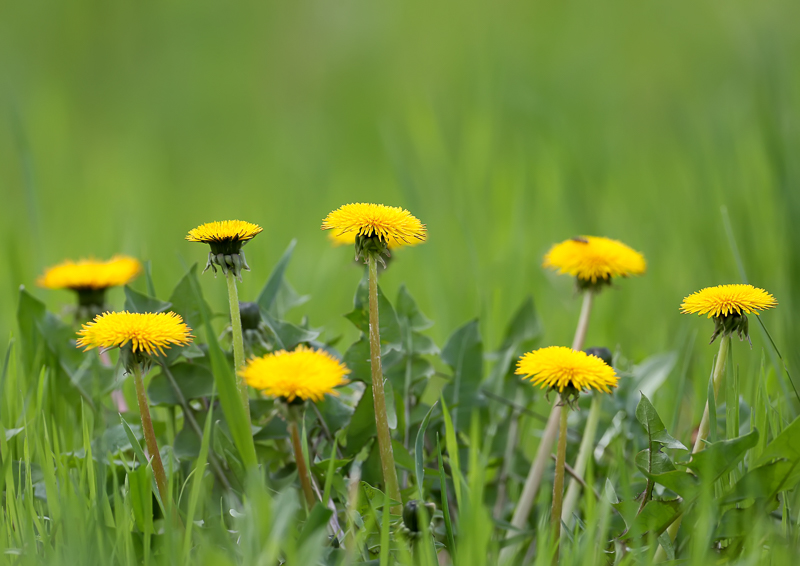
By Jerry Reynolds, Head of Outreach and Dandelion Seed Dispersal
Talking politics in a mixed crowd can stir up some strong opinions and make for lively discussions. Bringing up the dandelion in a mixed crowd can stir up similarly strong opinions and perennial arguments. What’s so divisive about such an innocent-looking plant that has people butting their heads against each other?

Most people recognize a dandelion with its bright yellow flower and it may well be the first plant that you paid attention to as a kid. What kid (young or old) can resist picking the white “puffball” seed head (also known as the clock) of the dandelion and sending those delightful “seed parachutes” flying into the wind with a strong puff? I also challenge you to go into the lawn section of a hardware store and not find a dandelion on the label of some weed killer! Yes, most people consider it a weed. The colorful, distinctive and persistent dandelion is the poster weed of the herbicide industry.
So, what’s the deal with the dandelion and our love/hate relationship with it? The Common Dandelion, Taraxacum officinale, now commonly found in the United States, is not native. This species, originally native to Europe, was brought to the United States by the European settlers. One source says that it was on the Mayflower in 1620 when that group sailed to North America. Somehow it was very fitting to be on the “Mayflower,” but perhaps they should have changed the name of the ship to the “Willflower” once they realized the dandelion was on board! The Common Dandelion, with human help, has now spread across most parts of the world. And it is just one species of a large and taxonomically diverse group of dandelions.

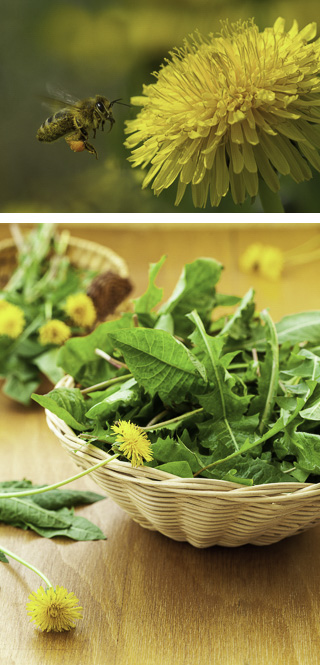
I challenge you to go outside in your yard or the nearest patch of lawn or other area not covered in concrete or asphalt and not find a dandelion. In some cases, you can even find them in the cracks of concrete or asphalt! The invasive status of the non-native dandelion is the sore point for many purist botanists and lawn lovers. Yes, it’s not native and it does adapt well to our disturbed landscape. If you love the green lawn of a non-native grass then why hate the dandelion, a non-native herb? Isn’t that a double standard for grasses and herbs?
I will always favor native species over introduced species, but I favor the dandelion high on the list of non-native plants. Regardless of how it got here, I think that it is a delightful plant. It’s attractive and certainly a fun plant to interact with. I wonder how many botanists were inspired at an early age by this cool plant. What other plant can you think of that a very young child would be so motivated to investigate?
They do flower early, so they are a source of nectar for some insects when no other food is available. The leaves are munched on by other animals, including humans. Wild food foragers enjoy creating tasty salads with leaves from the Common Dandelion. Finish that off with a glass of dandelion wine, made from the flowers, and you too may develop a warm spot in your heart for this non-native plant.
[How do dandelion seeds disperse so widely? Watch this Nature video to find out!]
About those puffballs; it is hard to resist sending those seeds (actually single-seeded fruits called achenes) flying into the air with their delicate “parachutes” keeping them aloft for great distances. This certainly has helped with their widespread dispersal across our landscape. Each puffball can have over 100 parachute-rigged seeds attached until launched into the air by a strong breeze or a puff from a playful human. Each plant can produce up to 5,000 seeds per year. Interestingly, I rarely see a dandelion on my hikes through relatively undisturbed natural areas. They need open sun, so they do best in lawns and other land that has been cleared of the native vegetation. And we just keep on creating new habitat for them to flourish in.
I accept and welcome this naturalized member of our plant community. There are other invasive plants that I do not welcome as warmly and will make every effort to squash them where they root. But I like dandelions and welcome them to my part of the disturbed landscape. They add a nice touch of color and a different form in a sea of non-native narrow-leaved grasses.
Whether you like them or not, they are here to stay. And that’s just dandy with me! No lying!
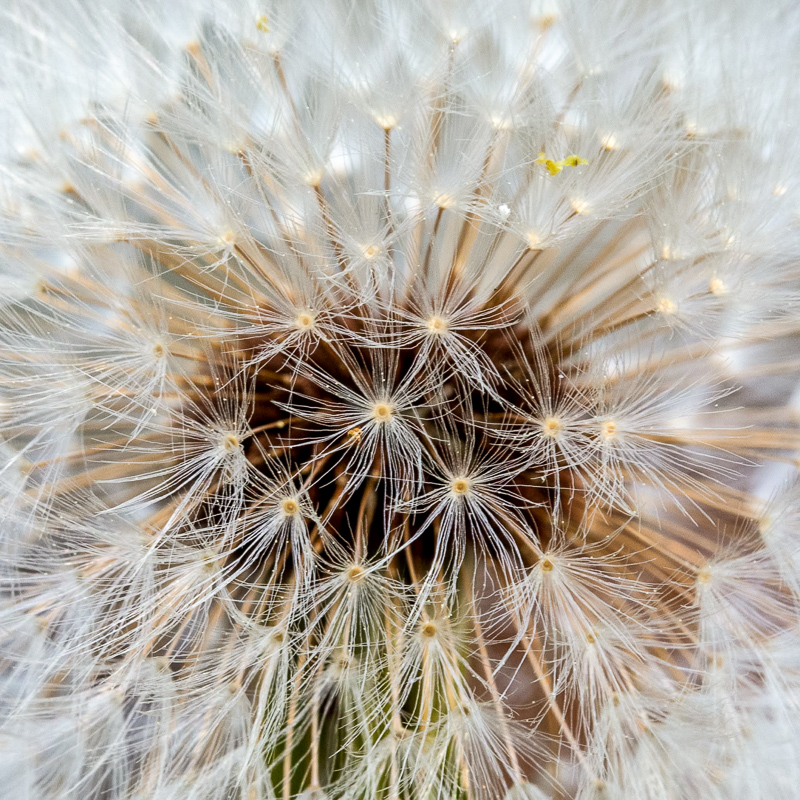
For more information about our upcoming activities, seasonal news and ground-breaking research, follow @NaturalSciences on Instagram, Twitter and Facebook. Join the conversation with #visitNCMNS.
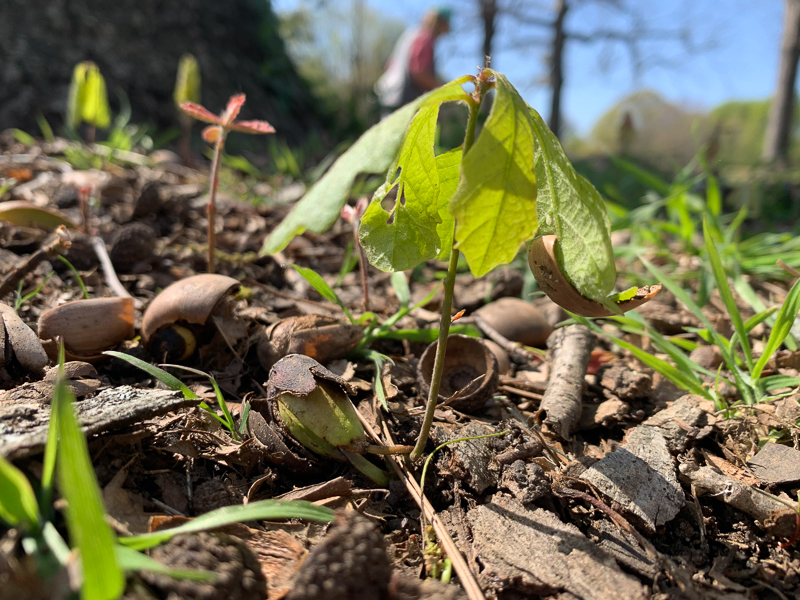 A White Oak sapling and sprouting acorn. Photo: Dr. Bronwyn Williams.
A White Oak sapling and sprouting acorn. Photo: Dr. Bronwyn Williams.
Contributed by Naturalist Center intern Sam Coley
Imagine you’re an acorn that just dropped from the branch of a huge White Oak tree (Quercus alba). Your first question might be, “What am I? What even is an acorn?” If you’re having an existential crisis about being an acorn, don’t worry! An acorn is simply the fruit or nut of an oak tree; each acorn contains a single seed encased in a tough outer shell. The genus Quercus is divided into two groups: the white oaks and the red oaks. Oak species from both groups are found throughout North Carolina.
If you have pollen allergies, you are familiar with the first step of creating an acorn. Oak trees have separate male and female flowers. Pollen from a male flower (the pollen-producing or male parts are called catkins) is transferred via wind to a female flower. If pollination and fertilization occur, a baby acorn is created. After about five months for white oak trees and six to seven for red oaks, the mature acorns are ready to fall. If you remember, I said you’re a White Oak acorn so that means you dropped off the tree in the last few days of August or in September. Once on the ground, acorns lie dormant until the following spring.
Acorns face many challenges once they’ve dropped and most do not go on to produce huge oak trees. When an oak tree drops its acorns, they usually don’t travel very far. Even small acorns are heavy and normally end up lying in piles around the base of the oak tree. This is a problem for acorns for a couple of reasons. First, acorns need sunshine to start growing and they can’t get much under the shady canopy of a large oak. Second, there may be a high concentration of acorns in a small area. These acorns need more space to start growing first into seedlings, and if lucky, into a large tree. So, who comes to the rescue? Squirrels!
 Eastern gray squirrel burying an acorn in fall.
Eastern gray squirrel burying an acorn in fall.
These little rodents allow for the easy transport of acorns throughout an ecosystem. They can even help new oak trees spread uphill. Why would a squirrel want to help move acorns around in the fall? Well, their reasons are purely selfish; the squirrels are hiding all those acorns from other animals so they can store and consume them later. Acorns are packed with nutrients and, in addition to squirrels, animals such birds, raccoons, opossums, bears and white-tailed deer love to eat them. Over the course of the winter months, squirrels will go back to these hidden caches to snack on all those delicious acorns. But squirrels are forgetful and may lose over 70% of the acorns they hide.

A mature White Oak tree. Photo: Sam Coley.
Oak trees can help keep squirrels in line by controlling the number of acorns they produce each year; this phenomenon is referred to as masting. Masting is a cyclical pattern of seed production where every 2 to 5 years, trees over a large area synchronize an overproduction of nuts, fruits or berries. Scientists still aren’t sure why oaks vary their acorn production every few years. One theory suggests that oaks occasionally produce a large crop to ensure that some of the acorns can survive predators, essentially producing too many acorns for all the squirrels to eat. Producing that many acorns forces the trees to cut back or stop acorn production completely the following years while they build up resources for another mast year. During low or zero acorn production years, squirrel (and other rodent) populations may noticeably decline because squirrels live almost exclusively on acorns in the winter and early spring. However, squirrels can resort to other food sources like other types of nuts, insects or plant material.
Now it’s springtime and, because you are a White Oak acorn, you will start germinating or growing immediately. Red oak acorns, on the other hand, must wait a whole extra year before they germinate and start to grow! Red and white oak acorns first extend a long taproot down into the soil before the shoot starts growing upwards, so saplings can be difficult to transplant. It will be a very long time before you are an old enough White Oak tree to produce your own acorns—maybe up to 20 years! Mature oak trees are not only beautiful but play an essential role in the health of our environment. Please let a few of those forgotten buried acorns become future oak trees!
For more information about our upcoming activities, conservation news and ground-breaking research, follow @NaturalSciences on Instagram, Twitter and Facebook. Join the conversation with #visitNCMNS.
By Jerry Reynolds, Head of Outreach
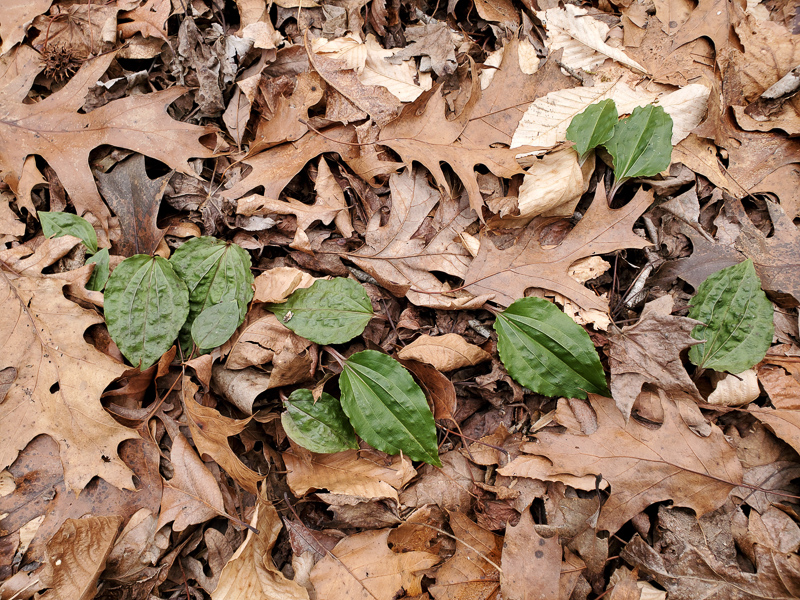 Cranefly Orchids on the winter forest floor.
Cranefly Orchids on the winter forest floor.
Spring is right around the corner, but there are still plenty of days to enjoy the winter forest landscape. Now is a great time for a walk in the woods illuminated with full sunlight coming through the mostly leafless forest canopy. Of course, all those leaves that were once in the canopy are now on the forest floor crunching under your footsteps. If you pay attention to your path, you might see some green leaves mixed in with the tan and brown leaves of now-dormant trees. If so, you may have found one of our native orchids.
The Cranefly Orchid, Tipularia discolor, is common in forests across North Carolina but is seldom recognized by most people walking in the woods. This is a very non-assuming orchid, unlike some other orchids that dazzle us with their flashy beauty when in bloom. This orchid also has an interesting lifestyle that further cloaks its existence. You may be thinking by now that this is a very hard wildflower to identify. Surprise! This is actually one of the easiest orchids to find and identify.
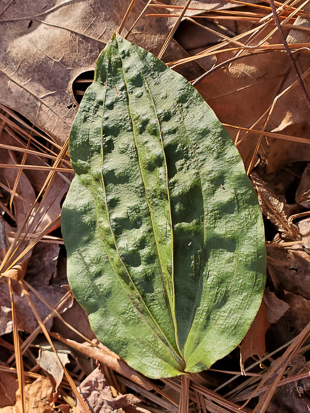
Cranefly Orchid leaf.
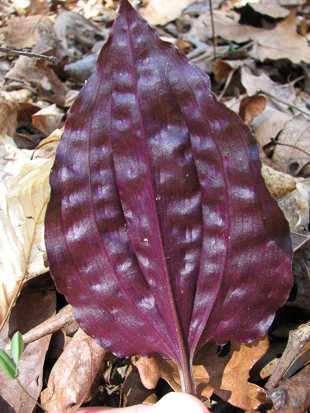
Cranefly Orchid leaf showing purple color on underside.
The green leaf of the Cranefly Orchid may appear singly or in a small group. They can vary in shades of green and some have dark spots or bumps, mottling the surface. Their elliptical shape and parallel leaf veins make them easy to discriminate from the heart-shaped leaves of heartleaf (Hexastylis) that you also might find on the forest floor. The identification cincher is that when you turn the leaf over, most will be a rich purple underneath. Expert naturalist Jesse Perry would demonstrate this characteristic in the field by saying the Cranefly Orchid leaf is green on the top but turning it over, “it’s discolor underneath,” having some fun with the scientific name.
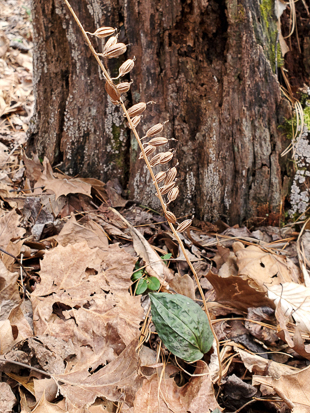
Old flower stalk still standing with a winter leaf.
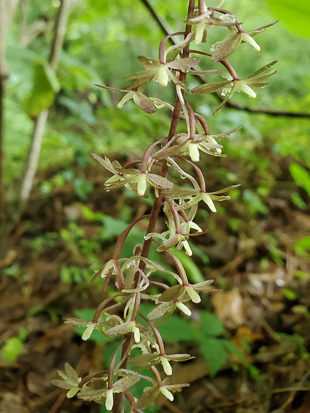
Small flowers of Cranefly Orchid in summer.
You can find them in the dead of winter when all other wildflowers are completely hidden from view, patiently waiting for their moment in the light. The green leaves of the Cranefly Orchids that you find mixed in with the dead leaves on the forest floor have been there all winter. They emerged from the forest floor when the tree leaves were falling from the trees. The Cranefly Orchid is taking advantage of the full sunlight reaching the forest floor during the winter to produce their food through photosynthesis while most other plants are dormant. You can sometimes see old flower stalks from the previous summer still standing with the green leaves in the winter.
By summer the orchid’s leaf has withered away. Its winter task is done. A single stalk with 20-40 small flowers will sprout where the green leaf once was. The pale yellowish-green flowers are about an inch long, not attracting much attention on the forest floor. They superficially look like small craneflies, hence the name. Many people would walk right by this plant in full flower and not even notice it. Some would not realize that it is even a green plant since the leaf is usually gone.
Get out in the woods in the remaining days of winter and look for Cranefly Orchids. Just pack some patience, as you will have to wait until summer to see it in bloom.
For more information about our upcoming activities, conservation news and ground-breaking research, follow @NaturalSciences on Instagram, Twitter and Facebook. Join the conversation with #visitNCMNS.
By Jerry Reynolds, Head of Outreach
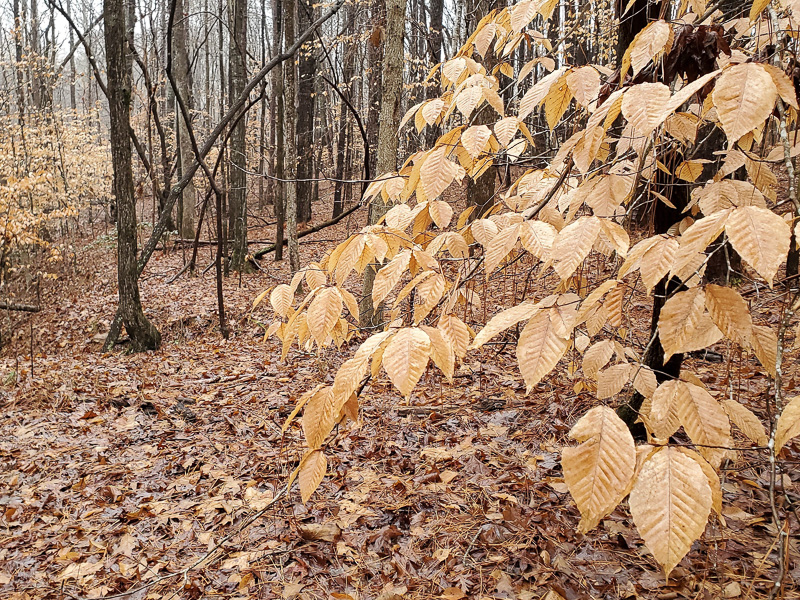

Massive root base of American Beech tree.
The American Beech (Fagus grandifolia) is one of my favorite trees in the winter forest landscape. The American Beech is a magnificent tree year-round, but it really stands out from the crowd during the cold winter months. As you might guess by its name, the American Beech is native to much of eastern North America. Adult trees can be massive with trunks over three feet in diameter. The current National Champion tree in Virginia has a trunk diameter of almost six feet!
The smooth light gray bark of the American Beech makes them stand out from the other trees in the forest, which usually have darker and highly textured bark. Adult trees may look like they have been used for paintball target practice as their smooth trunks are frequently splotched with crustose lichens of varying shades of gray. Unfortunately, these smooth-barked trunks are also disfigured in parks as some people insist on memorializing themselves by carving initials, heart shapes and dates with their pocketknives. I really wish those people would leave the trees alone so that others may enjoy the natural beauty of this grand tree.
 Mosaic of Crustose Lichens on smooth bark of American Beech.
Mosaic of Crustose Lichens on smooth bark of American Beech.
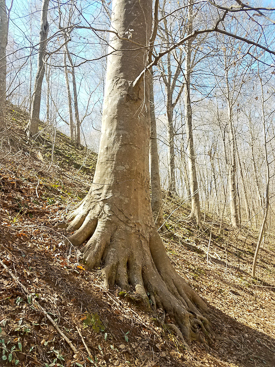
American Beech well anchored on steep slope.
The American Beech is most often found in moist woodlands along streams and creeks. They take well to the slopes, anchored in place by their spreading root system. Others may be rooted closer to the water where they may eventually fall into the stream as it makes its natural lateral migration in the floodplain. They are slow-growing trees, reaching sexual maturity around 40 years of age and can live for 300-400 years.
You can impress your friends by identifying this tree in the woods along the interstate as you speed by in your car at 70 miles per hour. Unlike most of our other deciduous trees, young American Beech trees hold on tight to their leaves through most of winter. Most deciduous tree species develop an abscission layer at the base of the leaf stem in the fall. When the leaf shuts down from its photosynthetic work, this layer seals the leaf from the tree and facilitates its separation from the branch. Young American Beech trees do not develop this abscission layer thus the leaves remain attached for most of the winter. This is called marcescense and is a juvenile trait of American Beech trees. Mature trees usually do shed their leaves in the fall. The golden leaves still attached to the juvenile beeches in the forest understory stand out in the otherwise leafless winter forest landscape.
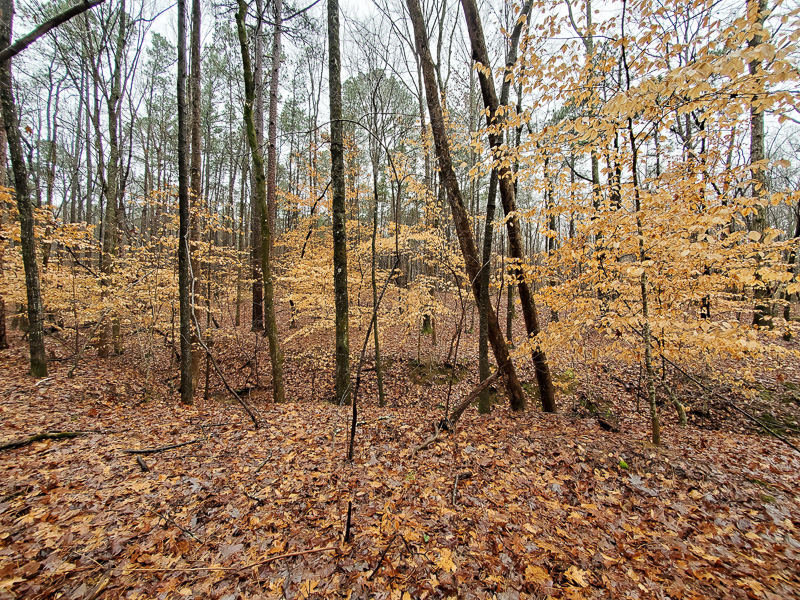
If you are able to take a closer look at the branches of an American Beech, you will see that the winter buds are slender and pointed unlike the short fat buds of most other trees. While checking out the winter buds, give a leaf a tug and see how well it is attached. The fruits are nuts in a soft spiny husk and are an important food for some native wildlife. Older trees can be hollow, and often serve as refuges for wildlife too.
Now would be a great time to get outside and see if you have any American Beech trees near you. I hope that you are now inspired to leave the warmth of your house and enjoy the beech life near you!
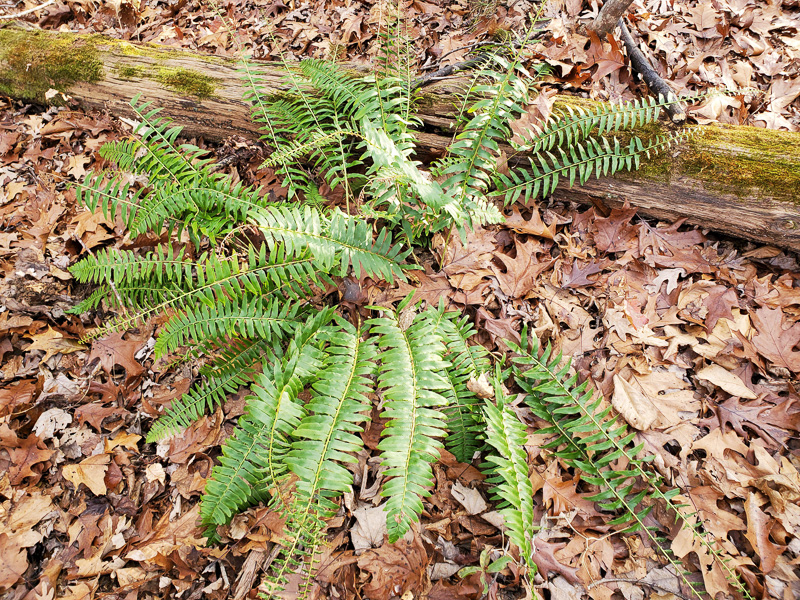
Christmas Fern (Polystichum acrostichoides) is a wonderful fern to enjoy during the Christmas holiday season. It is a common fern found in much of eastern North America. It loves the moist shaded slopes of woodlands, particularly along streams. It is one of our few evergreen ferns, making it easy to find and identify in the winter. If you find a large fern in a North Carolina forest during the winter season, it is almost certainly a Christmas Fern. Being so prominent during the Christmas season is why they are called Christmas Ferns.
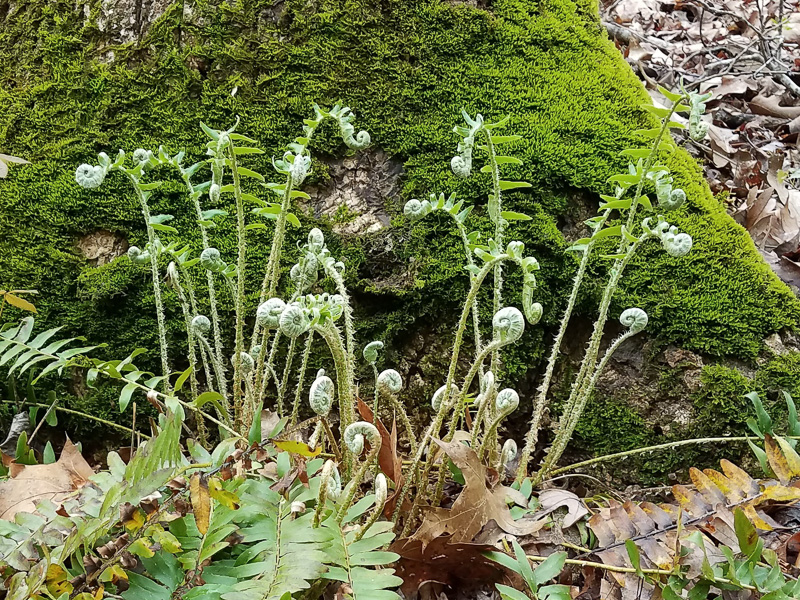
The Christmas Fern is a member of a large group of ferns called Shield Ferns (Polystichum) with about 500 species worldwide. Polystichum is one of the ten largest fern genera known and is remarkable for its worldwide occurrence. Of the 100+ fern species in North Carolina, the Christmas Fern is our only representative of this genus. But it does occur throughout most of the state, so everyone can enjoy this gift all year long.
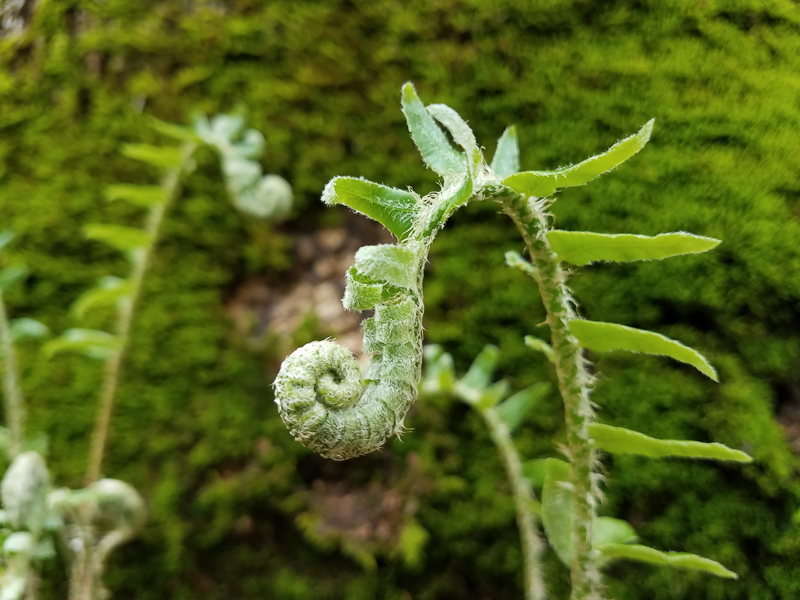
Christmas Ferns send up new leaves called fronds from a central rhizome in the spring. The emerging fronds are called fiddleheads because of their violin head resemblance. Packed into the fiddlehead is a whole fern frond that slowly unfurls as it grows to full leaf. In the case of the Christmas Fern, these fronds are pinnate. This means that there is a central leaf stalk with leaflets attached along two sides of the stalk.
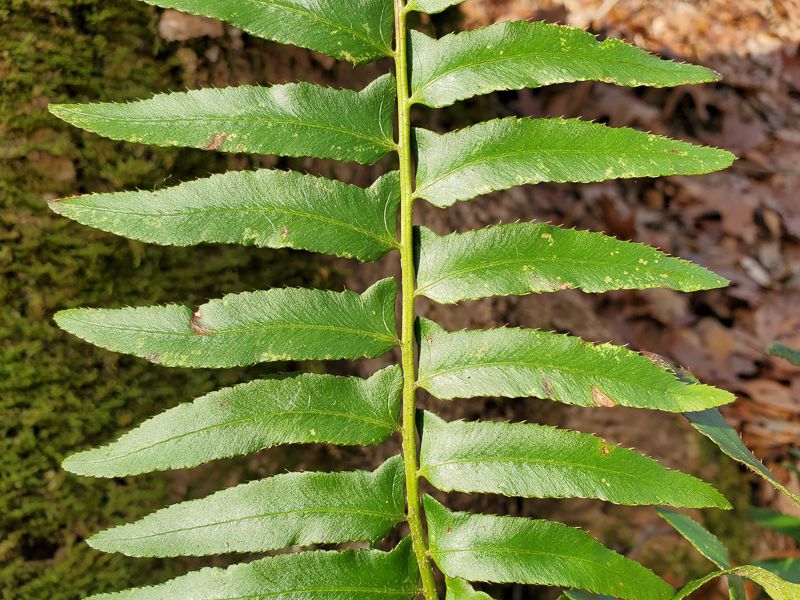
Christmas ferns have one more Christmas-related feature that makes it easy to distinguish them from other ferns. Each leaflet has a small lobe at its base, making the leaflet look like a Christmas stocking!

Among the new fronds in the spring will be fertile fronds for reproduction. Ferns are more primitive than our flowering vascular plants. They reproduce by producing spores instead of seed-bearing fruits that are produced by flowering plants. The fertile fronds of Christmas Ferns have sori (groups of spore-producing sporangia) on the underside of the terminal leaflets of the fronds. Sori are usually brown in color and are easy to see on the Christmas Fern. The fertile part of the frond withers away in the winter. The fronds that we enjoy in the winter are non-fertile fronds and remnants of the fertile fronds.
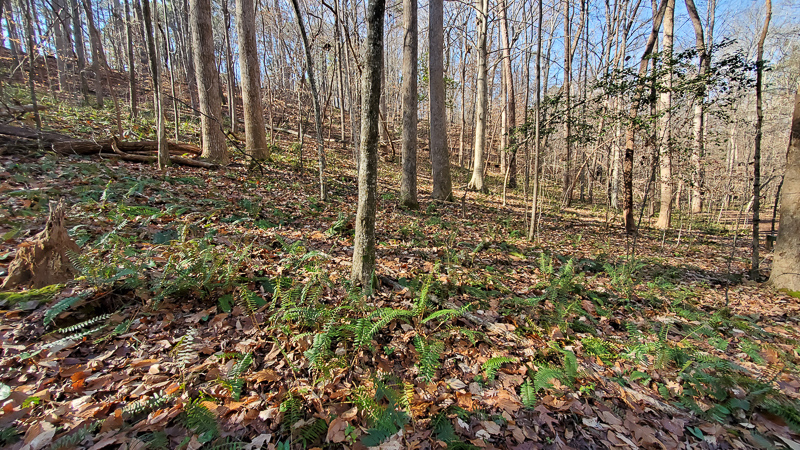
I hope that you can visit a natural area during the Christmas season to enjoy some of nature’s winter decorations. A great place to see Christmas Ferns in Wake County is Hemlock Bluffs Nature Preserve in Cary. Take the Swift Creek loop trail and you will find the forest slopes and floodplain well decorated with thousands of Christmas Ferns. While there, be sure to check out the Eastern Hemlock Trees along the bluffs of Swift Creek and learn why this population of evergreen trees is so far from its normal mountain home. Not saying that Santa had anything to do with it, but they sure do look like Christmas trees to me!
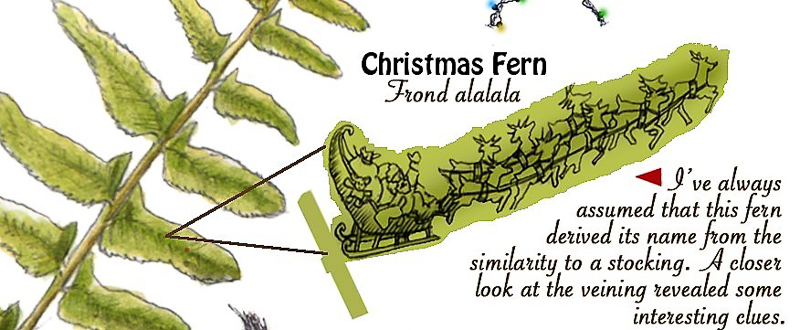 Illustration by David Williams.
Illustration by David Williams.
Best wishes to all during the holiday season!
By Jerry Reynolds, Head of Outreach
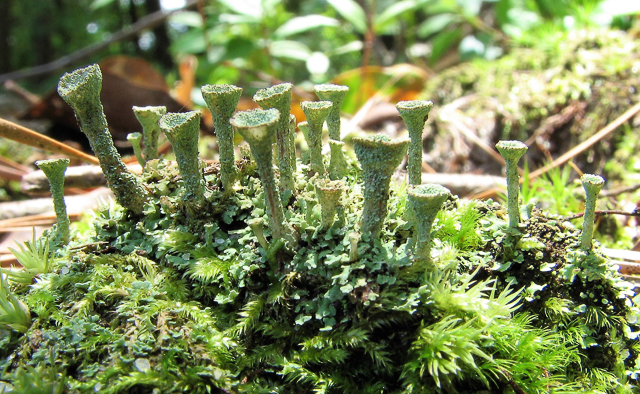 Pixie cups: a type of squamulose lichen.
Pixie cups: a type of squamulose lichen.
I like lichens! Anybody who has been on a hike with me knows that. I am quick to fall on my hands and knees to marvel at some lichen along the trail that most people would walk by and never see. I am not so quick to get up with my 60-plus-year-old knees, plus it takes time to appreciate the beauty and form of a lichen. I do not know the full identity of most lichens that I see but that does not diminish my enjoyment in seeing their diverse forms. Identifying lichens can be challenging as there are so many different species with differences that only a real lichenologist can tease out for an identification.
Labelling a lichen as a “species” also requires some out-of-the-box thinking as a lichen is not just one organism! A lichen is a combination of a fungus with an alga or a cyanobacteria, or both. This is a mutually beneficial relationship as the fungus provides a safe home for the alga and/or cyanobacteria which in turn provide food for the partnership through photosynthesis. The lichen is completely self-sufficient, only requiring sunshine to fuel its life. I liken this to an RV where everything is self-contained and just needs a place to park. The sun is the generator that keeps the RV functioning. Unlike the RV in which we must stockpile food, this lichen “RV” produces its own food.
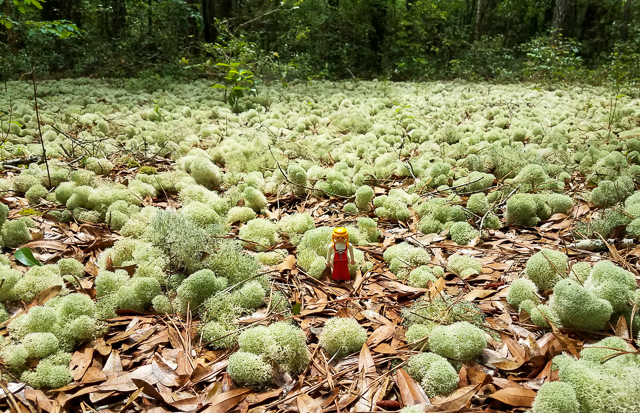 Field of Reindeer Moss lichens.
Field of Reindeer Moss lichens.
As far as where to “park,” the lichen can park almost anywhere! Lichens are the first to colonize on bare rock. I discussed this when I wrote about granite a few months ago and briefly talked about primary succession. Some lichens park on the ground or on stumps or dead logs where they compete for space with the mosses. Some just park on the top of the leaf litter. If a strong wind blows them to a new spot, no problem! Some even park on my house! I don’t pressure wash my house as often as I should, so I have lichens growing on the vinyl siding and asphalt roof shingles. The color of many tree trunks, particularly smooth-barked trees, is really the color of the lichens covering the trunks!
One of the best displays of lichens that I have ever seen in North Carolina was on the wooden boards of the goat fence at Somerset Place. The old fence was festooned with a wide variety of lichens. While other visitors were admiring the goats and history of the site, I was focused on the rich “lichenscape” on those old wooden boards. Somerset Place State Historic Site is nestled within Pettigrew State Park on the shores of Phelps Lake, North Carolina’s second largest natural lake. This is on the Albemarle-Pamlico peninsula which is a huge area bordered by the Pamlico River/Sound and the Albemarle Sound. This area of eastern North Carolina has been recently recognized as a hotspot of lichen diversity, attracting the attention of lichenologists and conservationists alike! The Southern Appalachian Mountains have long been known to be a hotspot for lichen diversity. North Carolina is blessed to have two such hotspots for lichen diversity, one on each end of the state.
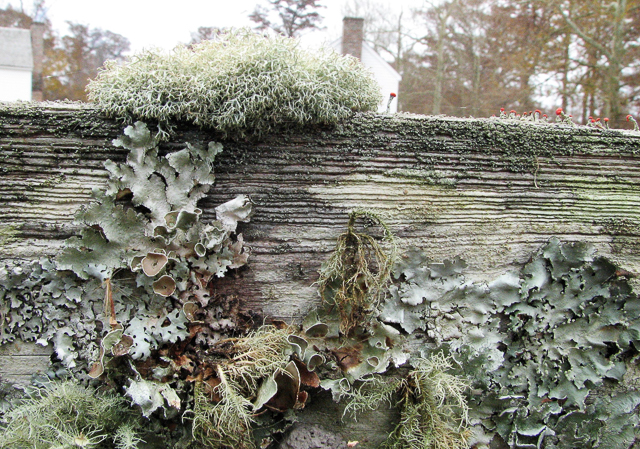 Lichen-covered fence board at Somerset Place.
Lichen-covered fence board at Somerset Place.
You don’t have to know the scientific names of lichens to appreciate their existence in our natural world. You can use the terminology used by lichenologists to describe the growth form of different lichens thus impressing your friends by “identifying” lichens on the trail. The three easiest-to-recognize forms of larger lichens are crustose, foliose and fruticose.
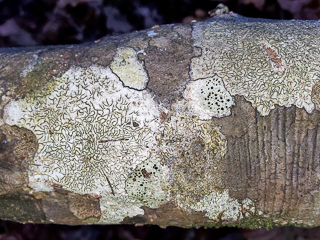
Crustose lichens on Ironwood Tree.
Crustose lichens look like they have been painted on. Find the smooth bark of a large American Beech tree and you will see a pattern of color patches on the tree with each shade indicating a different crustose lichen. You can even see the dark lines where the different lichens are in a “real estate battle” for space on the trunk!
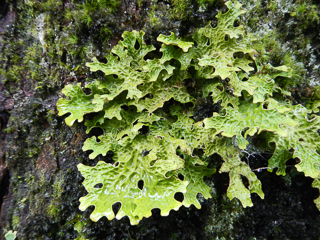
Lungwort, a Foliose Lichen in the Southern Appalachians.
Foliose lichens are those that are attached to a surface but with leafy edges.
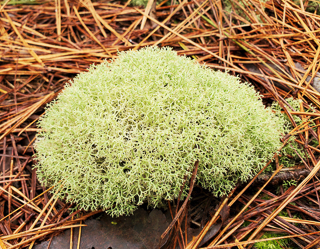
Reindeer Moss, a Fruticose lichen.
Fruticose lichens are those with a branching form like a tree or bush.
There are other growth forms, but these are the easiest to recognize and include many lichens commonly found. Lichens can reproduce just by breaking off the original lichen body and attaching on another surface (vegetative reproduction). But they also reproduce by spores. The spore-producing bodies on lichens vary tremendously, creating many wonderful shapes and colors on an already unique lichen form.
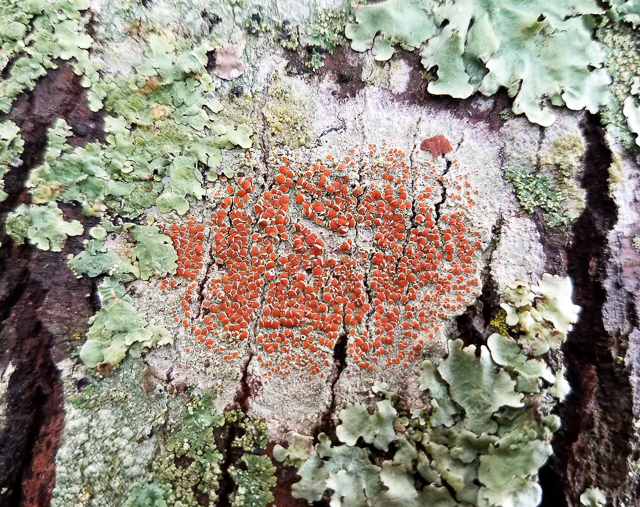 Crustose Lichen with red spore bodies surrounded by Foliose lichens
Crustose Lichen with red spore bodies surrounded by Foliose lichens
Lichens are a wonderful part of our biological diversity and you don’t have to go far to enjoy their incredible forms. Just go outside and pick up a branch fallen from a nearby tree. You might be surprised by the diversity of lichens on that one small branch. Look closely at the trunk of a tree in your yard or nearby park. You may find a rich assemblage of lichens and mosses competing for the tree’s real estate. I am only able to cover the surface of the incredible diversity and biology of the lichen world in this short blog post. But I hope that you will explore some of those lichen-covered surfaces and will learn more about these fascinating multi-organism life forms.
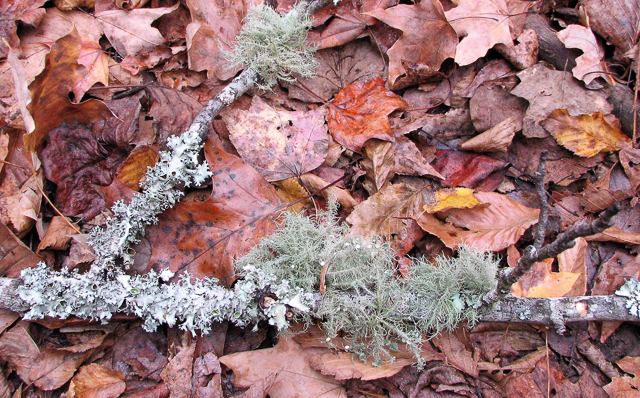 Foliose, Fruticose and Crustose lichens on a fallen tree branch.
Foliose, Fruticose and Crustose lichens on a fallen tree branch.
I like lichens! And I hope that you liked learning a little more about lichens!
Jerry Reynolds, Head of Outreach
By Martie Rose, Intern at the Naturalist Center
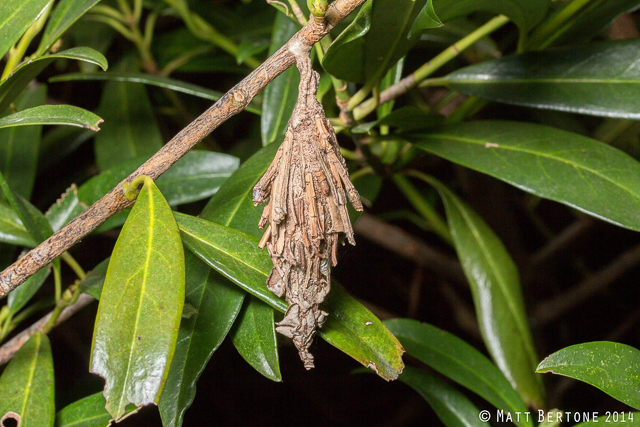
Evergreen bagworm. Photo: Matt Bertone.
The Evergreen Bagworm
The Evergreen Bagworm (Thyridopteryx ephemeraeformis) is a highly misunderstood insect found in the Eastern United States. Worldwide, there are over 1,350 different species of bagworm inhabiting conifer trees such as cypress, juniper, spruce, and pine to name a few. The Evergreen Bagworm may even be in your backyard! Bagworms or bagworm moths are included in the family Psychidae. This family is characterized by being found in case-like structures called bags. Although a fairly small species, bagworms are tiny but mighty. Spending the winter in their mother’s bags as eggs, these insects wait for their grand debut during the summer months. Emerging as caterpillars, they construct their own case made of silk, fecal matter, and debris from the tree in which they are feeding. This creates their own sort of camouflage and protection from predators such as vespid wasps (yellowjackets and hornets) during development. The bags in which they reside also serve as the pupal case in which they metamorphose into adults.
Mature male bagworm moths are black and fuzzy-looking with a wingspan of around one inch. Females at maturity, on the other hand, are wingless, dark brown grub-like insects with sparse hairs. Females also have non-functional antennae, eyes and legs. In late summer, the males will emerge from their bags and seek out females in order to mate. Seeing as the females are wingless, they stay in their bags and mate through the bag openings. The bags also serve as an overwintering case in which the female can store her eggs. The following spring, the eggs develop and the larvae hatch from their mother’s bag and begin to make their own bags!
Pinecones or Bagworms?
Once independent, it’s time to build a bag! The process starts with a long silk strand that the larval bagworm adds leaf and stick debris to that will eventually completely encase them as they dangle from a limb. An opening is left at the top of the bag so the caterpillar can find food, and a small hole is left at the bottom to get rid of excrement until anchoring the bag to get ready for pupation.
The Real Truth
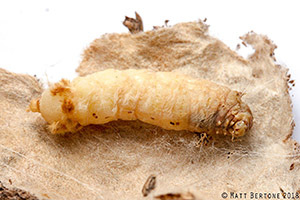
Mature female evergreen bagworm. Photo: Matt Bertone.
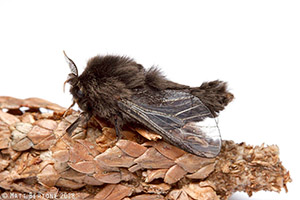
Mature male evergreen bagworm. Photo: Matt Bertone.
In an interview with Dr. Colin Brammer of the North Carolina Museum of Natural Sciences, I was able to chat about the process of rearing bagworms, preserving them for research, the harsh weather conditions they face and how they deal with them. In regard to rearing these insects it is super easy! Dr. Brammer states, “Literally, pluck some larvae (preferably different ages) off of trees and make sure they have food.” As far as preservation methods are concerned, Dr. Brammer suggests freezing the males to kill them and “simply pinning them like any other Lepidoptera.” For females, it is a bit different as they do not have wings. One must freeze them in their bag and then “put them directly into EtOH or isopropyl alcohol” to prevent decaying. These insects are really easy to find and study, so go outside and try it!
As mentioned before, these insects are tiny but mighty! In harsh weather conditions their silk is so strong, they have the ability to stay attached to their host. For the unfortunate ones, windy days can simply take them to their next host…they just have to hang on for the ride!
Bagworms are very misunderstood insects. Many sources label them as major pests killing different types of conifers in urban areas all over the world! This is taken way out of context. When speaking with Dr. Brammer, he mentioned that he “cannot estimate a single bagworm’s damage but would not believe it is that much.” Dr. Brammer goes on to say that these insects do not “skeletonize” leaves, but can certainly make a tree “not look award winning if populations are large.” All in all, Dr. Brammer has never seen a tree die due to a bagworm infestation, and that it would be a lot more common if it was a serious issue. Therefore, always make sure you are careful when reading about these little buggers. They really get a bad reputation!
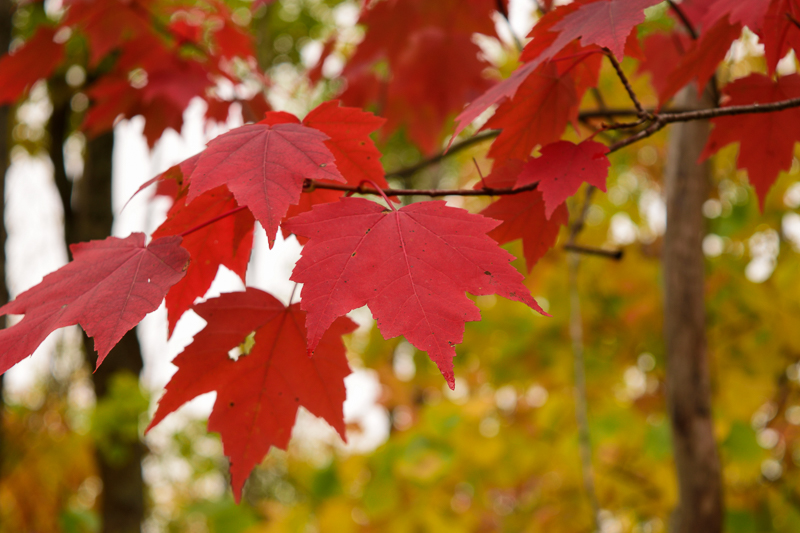
My favorite time of year is when the temperature begins to drop and “sweater weather” approaches. The coloration throughout the autumnal season has always brought me happiness and is best represented by the Red Maple (Acer rubrum). Originally classified in the Aceraceae family, it is now included in the wider family of Sapindaceae. Taxonomists and scientists have developed DNA datasets to demonstrate the closeness of Red Maples with other species such as Horse Chestnuts, Sugar, Japanese and Silver Maples and have classified all of these species under the larger umbrella of Sapindaceae.
Although they are not considered to be on the larger side, ranging from 60 to 90 feet in height and 18 to 30 inches in diameter, it is likely that you commonly see Red Maples since they are one of the most common trees in the United States and present with bright orange to red foliage. Although Red Maples are one of the first trees to sprout in the spring, unlike many other trees that quickly lose their leaves, Red Maples keep their bright coloration consistently throughout the autumn months (and make some great backdrops for your seasonal photos!).
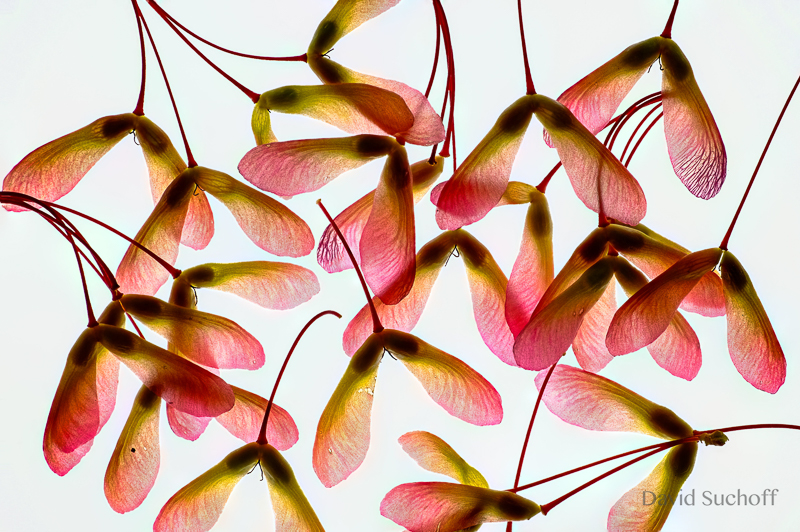
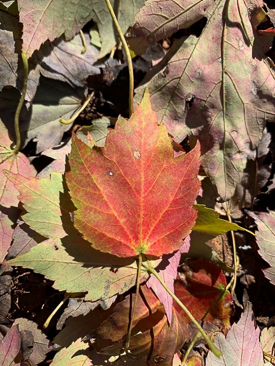
It is possible that you notice the flower clusters first in the springtime and then, as the seasons change, red or green samara (winged seed) clusters hanging from the branches. If you have ever seen helicopter-like seeds falling from the trees, you have probably seen samaras from the Red Maple and didn’t even know! Red Maples are considered to be somewhat aggressive and dominant due to their ability to easily germinate. The samaras’ “helicopter flight” ensures that the seedlings from the tree travel far from their original site to ensure no competition occurs. Be sure to take a closer look at the leaves of maple trees you see too; it will tell you a lot about the tree if you are unsure! Red Maples have 3–5 lobes per leaf and will occasionally have a silver undertone from their waxy coating.
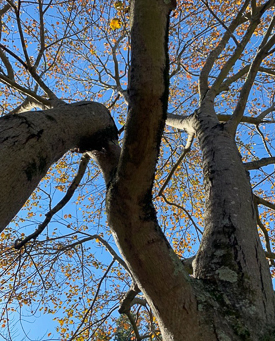
Unlike many tree species, Acer rubrum has thin bark and weak branches, making it difficult for it to withstand severe storms and especially difficult to maintain structure when snow falls and accumulates weight on the branches. Despite their inability to withstand surplus weight and weather, Red Maples are commonly used in residential areas. Their ability to stand out in comparison to other trees due to their coloration and their ability to produce maple for commercial use make them an attractive species in developing cities and towns. Maple syrup production, for example, is a common use for this species, so the next time you put syrup on your pancakes, ponder how it got there and think of the Red Maple!

Although Acer rubrum may not have the best reputation when it comes to withstanding harsh weather conditions, don’t be fooled because they are resilient! Plant a Red Maple in your yard and return each year to see the progress. You could even try to outlive your Red Maple tree if you wanted, but I doubt you will win! Age records for a singular Red Maple tree has dated it back approximately 150 years!
My interest in the Red Maple is based not only on their autumnal coloration, but also on their ability to attract animals to be used as a habitat as well. Red Maples provide home to Rosy Maple Moths and squirrels. Sometimes you will see big holes, burrs and knotholes in the trees. These holes aren’t damage to the tree but instead are shelter for animals, who are most active during the autumn season.
Whenever you think of autumn, I hope you think of red and remember the beautiful coloration of the Red Maple! Now that you know what they are, don’t be surprised when you start seeing them everywhere you go, especially during this time of year. Oh yeah, and don’t forget to turn to the person next to you and tell them about Acer rubrum when you see them, too!
Contributed by Lexi Petruccelli, Naturalist Center Intern.
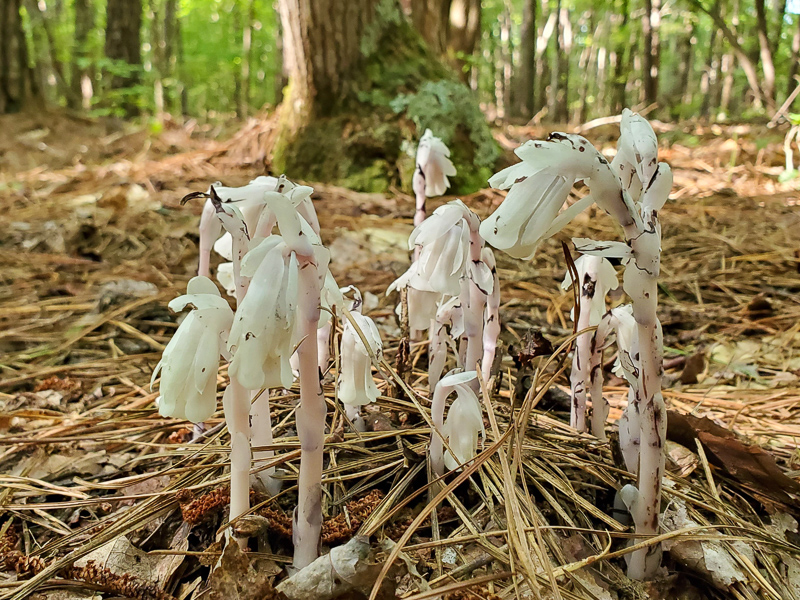 Ghost Pipes and the Sourwood Tree behind them are both in the Heath Family (Ericaceae).
Ghost Pipes and the Sourwood Tree behind them are both in the Heath Family (Ericaceae).
On a September walk through the woods on a dark cloudy day, I made a ghostly discovery! In the distance I could barely make out mysterious white forms appearing from the forest floor. Summoning up my courage, I approached the ghostly group fighting my instinct to run away. I bent down to take a closer look at the ethereal white forms, just a few inches high, penetrating from the darkness below the layer of dead leaves — Ghost Pipes!
OK, so it really wasn’t that spooky. But it was the first time that I had seen Ghost Pipes in the woods behind my Johnston County home. Ghost Pipes (Monotropa uniflora), also known as Ghost Flower, Corpse Plant and Indian Pipes, is a flowering plant in the Heath Family (Ericaceae). If you read my earlier Nature Now blog post on the Sourwood Tree, you know that sourwoods, azaleas, rhododendrons, mountain laurels and blueberries are all members of the Heath Family. Most members of this family are woody plants in the form of small trees or shrubs. But Ghost Pipes have taken a completely different lifestyle and form. They are so different from most vascular plants that many people mistake them for a fungus when they first see them.
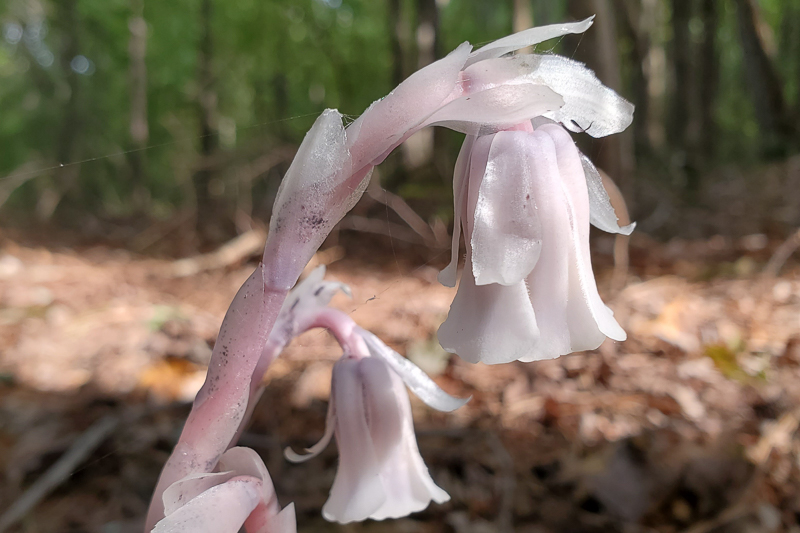 The single nodding flower will eventually rise to an upright position as the plant matures.
The single nodding flower will eventually rise to an upright position as the plant matures.
Ghost Pipes sprout from the leafy forest floor in summer or fall as translucent white nodding forms usually less than 12 inches high. Though they often grow in clumps, each plant has a single nodding flower at the end of a single stem. All parts of the plant start out in spooky white, though they may later change to pink or red, then black after fruiting. The nodding flower head will eventually rise to an upright position. Clumps of Ghost Pipes from the previous year will be brown and fittingly dead-looking.
 The flower’s white petals sheathe the central pistil (female reproductive part) surrounded by adjoining stamen. (Petals removed for second image.)
The flower’s white petals sheathe the central pistil (female reproductive part) surrounded by adjoining stamen. (Petals removed for second image.)
Ghost Pipes are white, not green, because they lack chlorophyll. Green plants need chlorophyll to produce glucose from water and carbon dioxide using the sun’s energy in photosynthesis. Ghost Pipes took a very different evolutionary path from their green relatives. They are parasitic on fungi that are in a mycorrhizal association with a tree. The fungus/tree relationship is mutually beneficial, while Ghost Pipes are strictly a third-wheel parasite on the fungus. Ghost Pipes receive food produced by the tree via the fungus on the tree roots.

Ghost Pipes may take on a pink or reddish color as they mature.
Ghost Pipes do well under the dark canopy of trees since they do not need sunlight to produce food on their own. They only need to send their ghostly flowers up out of the darkness to attract pollinators so they can produce fruit and ultimately more Ghost Pipes. Barbara Kingsolver sums up this lifestyle choice in this stanza from her wonderful poem, “Ghost Pipes.”
“Once this plant was ordinary heath. Then came the day it renounced the safety of photosynthesis, turned away from the sun’s daily bread for a riskier life, tapping deep strata to drink from tree roots, pulling their blessed sugars straight from darkness.”
I found the Ghost Pipes in mid-September when I was on one of my regular walks through the woods. I was so excited to see them in this patch of woods for the first time after all these years of exploring the area. I took many photographs of this one clump and shared my exciting find on social media so that my friends could enjoy it too.
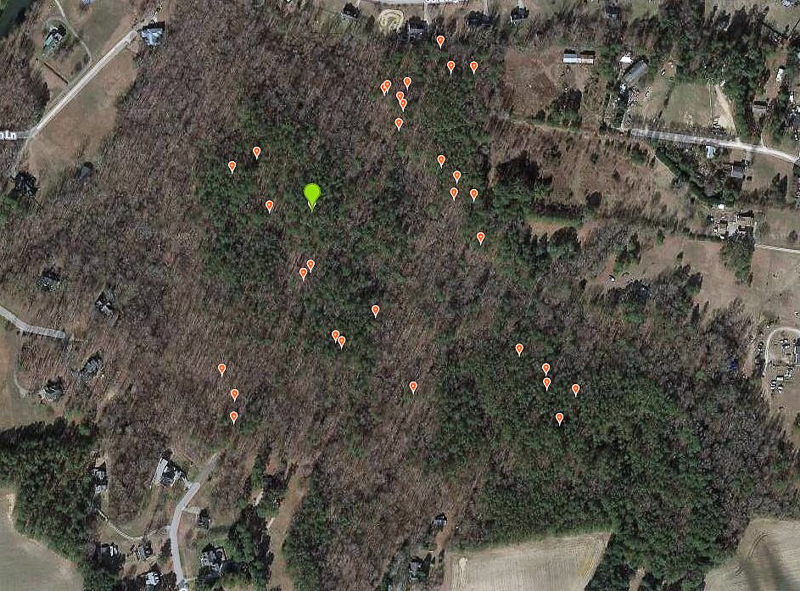 Map showing widespread occurrence of Ghost Pipes in the forest. Green icon is where I saw the first clump of plants. (iNaturalist map of my submitted observations.) Google Maps. Map data copyright 2020, Imagery copyright 2020, Maxar Technologies, U.S. Geological Survey, USDA Farm Service Agency.
Map showing widespread occurrence of Ghost Pipes in the forest. Green icon is where I saw the first clump of plants. (iNaturalist map of my submitted observations.) Google Maps. Map data copyright 2020, Imagery copyright 2020, Maxar Technologies, U.S. Geological Survey, USDA Farm Service Agency.
A couple of weeks later my neighbor said he read my post and that he saw some Ghost Pipes in the woods behind his house. When I checked out his woods, I was astonished to see numerous Ghost Pipes scattered among the pines and mixed hardwoods. I counted at least 25 clumps in this small tract of woods. That motivated me to do a more thorough search of the larger tract of woods behind my house. I was surprised to now find hundreds of Ghost Pipes in scattered patches throughout the woods. The woods were haunted!
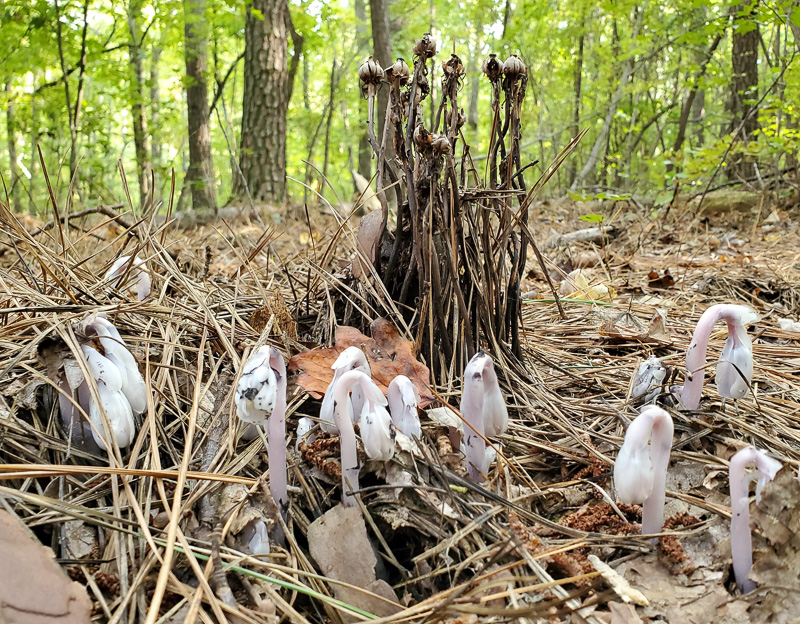 Dried plants from last year with new sprouts coming up in the foreground.
Dried plants from last year with new sprouts coming up in the foreground.
Apparently that first clump of Ghost Pipes was an early riser and sprouted before the rest of the group. How did I miss seeing this plant in all my years of walking those woods? Did I just happen not to walk by where they were when blooming? In my reading I learned that they may only sprout up and bloom when there is adequate moisture after a dry period in the growing season. So perhaps this year, the conditions were just right for all to bloom. Among those hundreds of blooming Ghost Pipes this year, I found only two patches of dried Ghost Pipes from last year. Conditions must not have been as favorable for them last year and perhaps in previous years too.
I will continue to monitor the woods to see how many Ghost Pipes bloom in the following years. Will I find that this haunting of the woods was a rare occurrence or that I simply missed them in all my previous years of walking in the woods? Or will I wake up in the morning and find that this haunting was all just a Ghost Pipe dream?
Now that would be spooky!
By Jerry Reynolds, Head of Outreach
One of the many things I love about the start of fall is that it’s also caterpillar time! Though you can find caterpillars through the spring and summer, in my experience, they seem to be most abundant in fall. Fortunately, caterpillar season corresponds with the Museum’s annual BugFest event. For many years my coworkers and I have organized a “Caterpillarology” table to showcase the amazing diversity of North Carolina caterpillars. We spend time the week before the event searching out and collecting as many different larvae as possible. We typically end up with more than 50 different species. This year, with a virtual BugFest, I haven’t spent quite as much time hunting for them, but my coworkers and I have still found a variety of species in our yards. Since we can’t share them with you at a BugFest table, here’s a smorgasbord of caterpillar photos and facts!
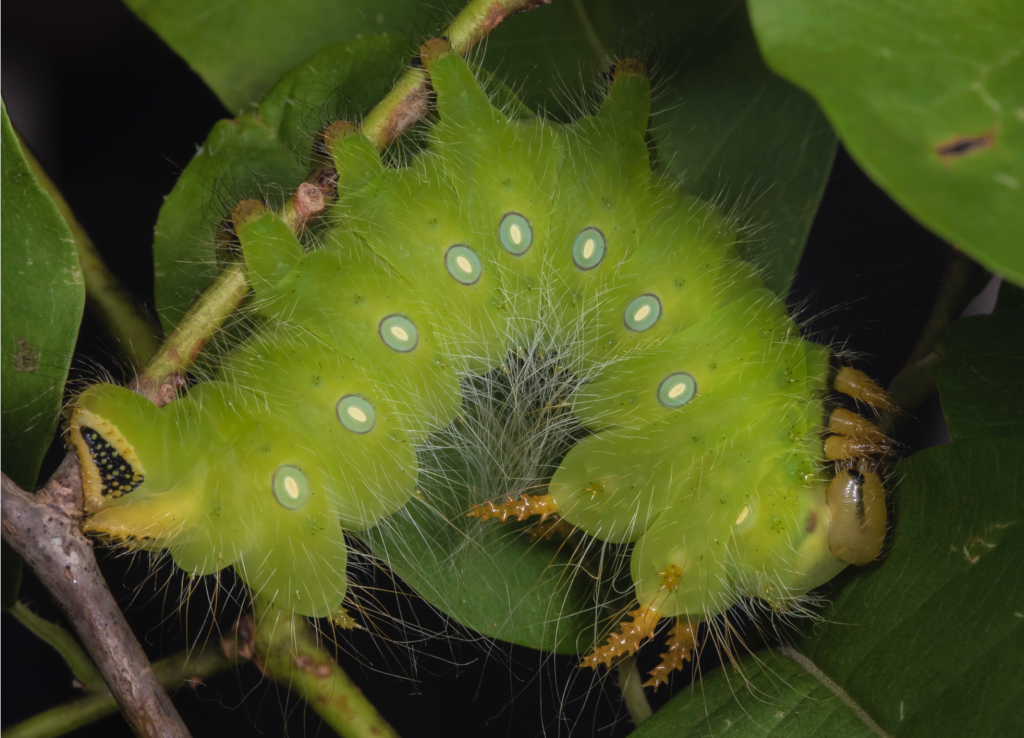 Fully grown imperial moth caterpillar. Photo: Mike Dunn.
Fully grown imperial moth caterpillar. Photo: Mike Dunn.
One of my favorite species to find is the imperial moth. As you might expect from its name, the moth is one of our largest. But so is the caterpillar! It grows to an impressive length of about 5 1/2 inches, and can be one of at least four different colors including green, red, or brown! Most of the imperial caterpillars I’ve seen have either been brown or green. This year, a former colleague at the Museum of History had an imperial moth lay eggs on her screen porch, and my coworker and fellow caterpillar enthusiast, Megan Davis, rescued a few to raise. Thus far, they’ve all been a lovely shade of brown. I’ve been caterpillar-sitting this past week and have enjoyed watching them shed their skin as they grow.
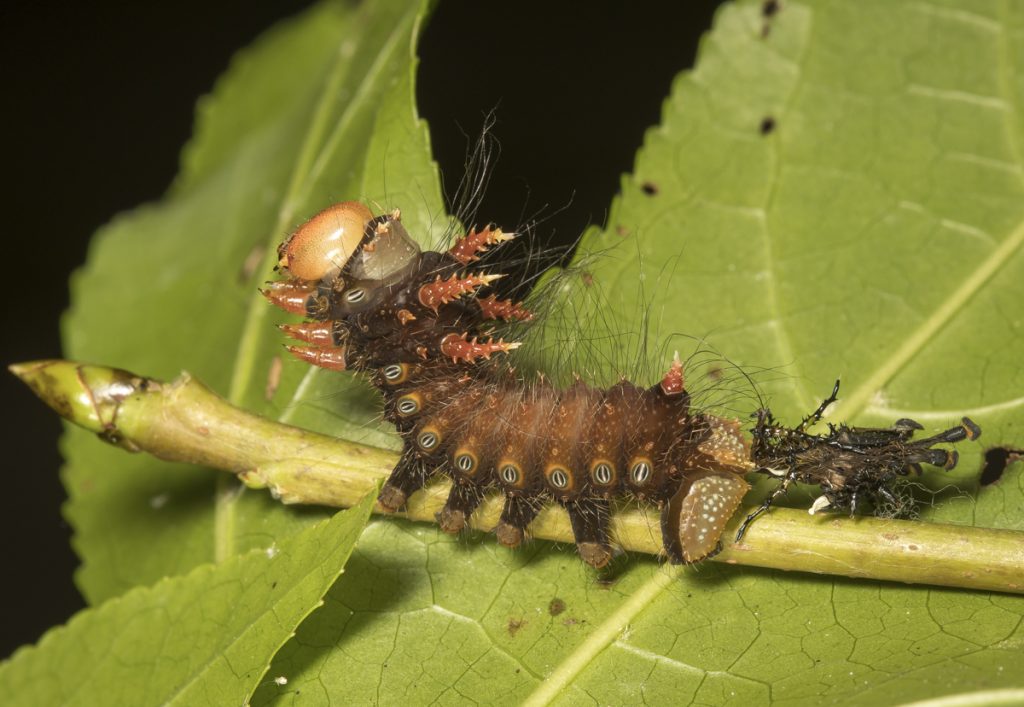 This is one of the imperial moth caterpillars that I am currently watching, immediately following a molt. This caterpillar is about 1 1/2 inches long. Photo: Mike Dunn.
This is one of the imperial moth caterpillars that I am currently watching, immediately following a molt. This caterpillar is about 1 1/2 inches long. Photo: Mike Dunn.
This brings me to some important background information and scientific jargon. Caterpillars are the larval stage of butterflies and moths. The adult butterfly or moth lays an egg, typically on a plant that its larvae can feed on. (This was not the case for our imperial moth — we transferred the eggs from the screened porch to a variety of native tree species like sweet gum and red maple.) Some caterpillars are picky eaters and only like one type of plant. You may be familiar with monarch caterpillars that only eat milkweed plants, or black swallowtail caterpillars that eat plants in the parsley family (parsley, dill, fennel, carrots, etc.). Some species, including imperial caterpillars, are what we call “polyphagus,” which means they eat lots of different types of plants. Whether they’re picky or not, caterpillars are basically tubes for eating and growing. But … to grow as much as they do, they have do something else – shed their skin! If a human baby were to grow as much as a caterpillar does, it would be almost as big as Trouble the Whale (whose iconic skeleton is hanging above the first floor of the Museum). To accommodate that much growth, a caterpillar has to molt (shed its skin) as it grows. Most caterpillars go through five instars, or growth phases between molts. When a caterpillar sheds its skin, the skin opens up behind the head and it slowly wriggles out, leaving the crumpled old skin behind. Usually, so as not to waste all the good nutrients, it turns around and eats its shed skin!
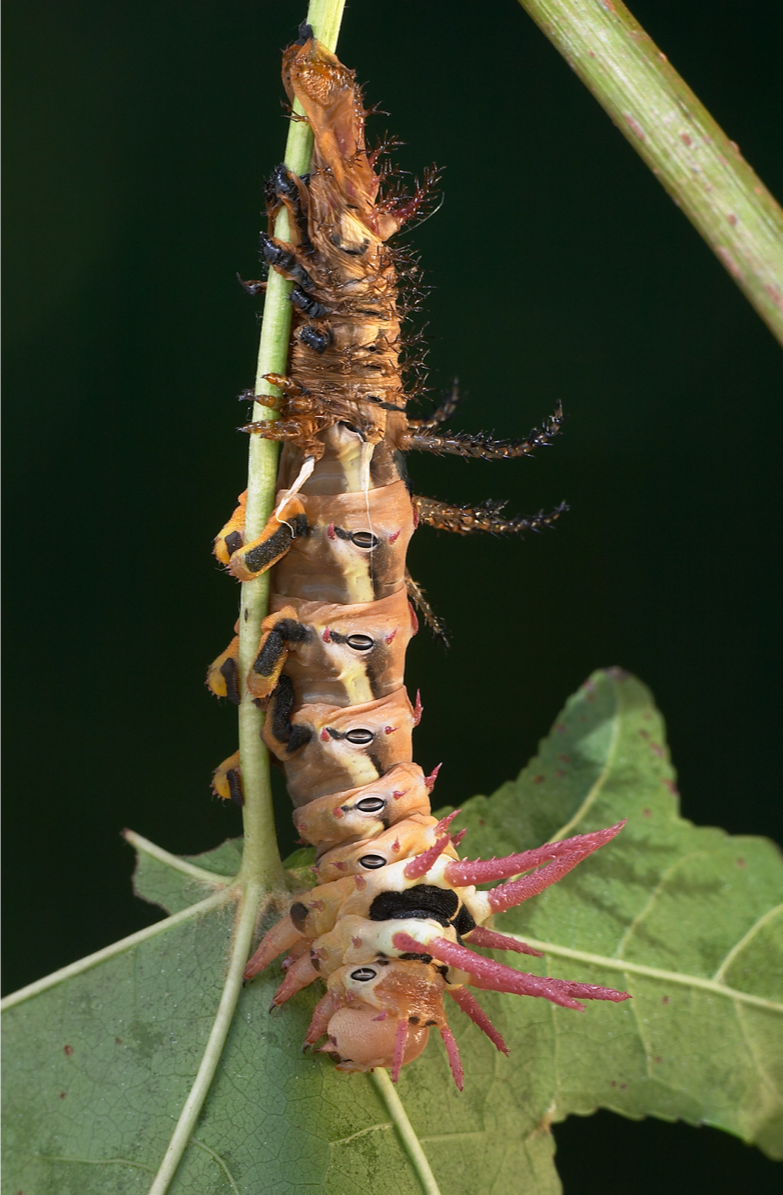 This hickory horned devil caterpillar is mid-molt as it crawls out of its old caterpillar skin, having grown a new caterpillar skin underneath. Photo: Mike Dunn.
This hickory horned devil caterpillar is mid-molt as it crawls out of its old caterpillar skin, having grown a new caterpillar skin underneath. Photo: Mike Dunn.
A caterpillar’s last molt is the most dramatic. This is when it sheds its final caterpillar skin and transforms into a pupa. In fact, it’s pretty much already a pupa by the time it does this — the pupa is inside the last molt! Butterflies hang themselves up with silk and form a naked pupa called a chrysalis. Many butterfly chrysalides are quite colorful.
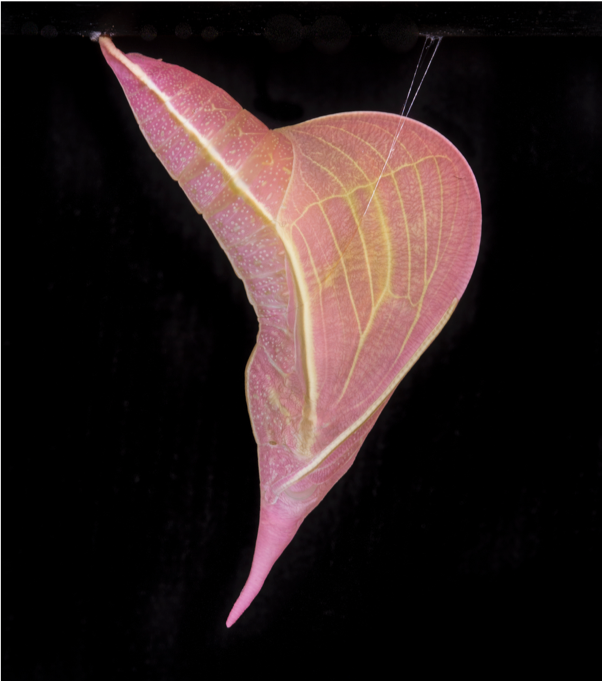 The cloudless sulphur butterfly has one of the most beautiful chrysalides I’ve ever seen! Photo: Mike Dunn.
The cloudless sulphur butterfly has one of the most beautiful chrysalides I’ve ever seen! Photo: Mike Dunn.
Moth caterpillars will either form a cocoon, which is basically a pupa wrapped in silk (and sometimes leaves), or they will bury themselves into the ground and transform in the soil without the protection of a cocoon.
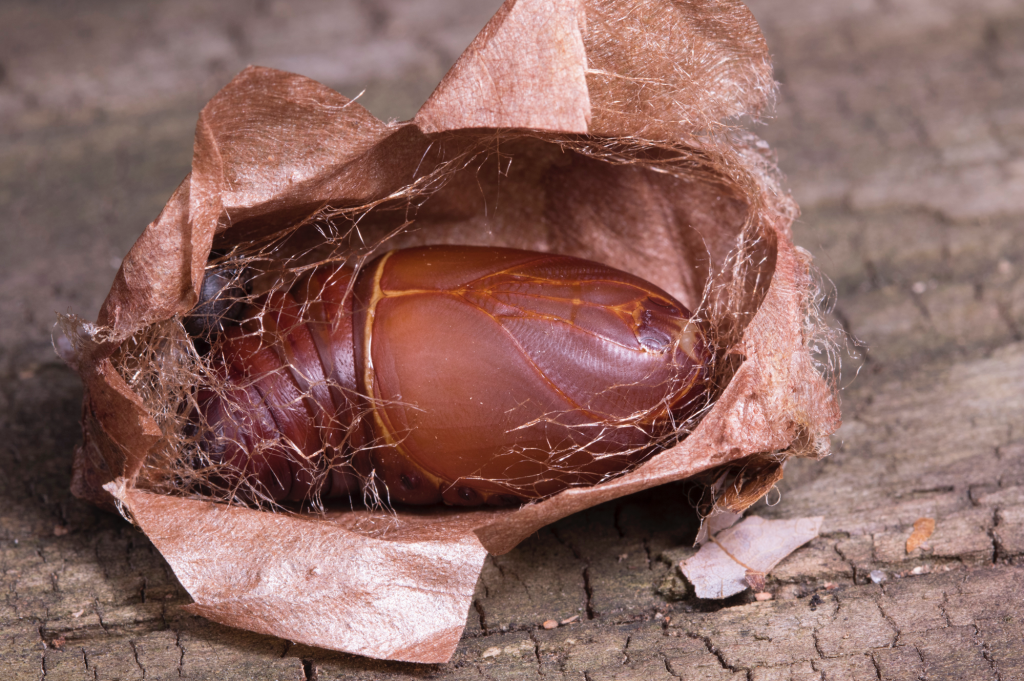 This cocoon has been carefully cut open to reveal the pupa inside. This doesn’t harm the moth – it can still develop and transform. Photo: Mike Dunn.
This cocoon has been carefully cut open to reveal the pupa inside. This doesn’t harm the moth – it can still develop and transform. Photo: Mike Dunn.
Anything that eats and grows as much as a caterpillar has to do something else important: expel waste. Caterpillar poop (as well as the poop of other insects) is called frass, one of my very favorite scientific words. Caterpillar frass has a distinctive appearance, kind of like a seed, and can be a good thing to look for if you’d like to find a caterpillar – there’s usually a scattering of frass beneath a plant a larva is feeding on. Also, keep your eye out for chewed leaves on many of our native plant species — this can also be a clue to a caterpillar’s whereabouts.
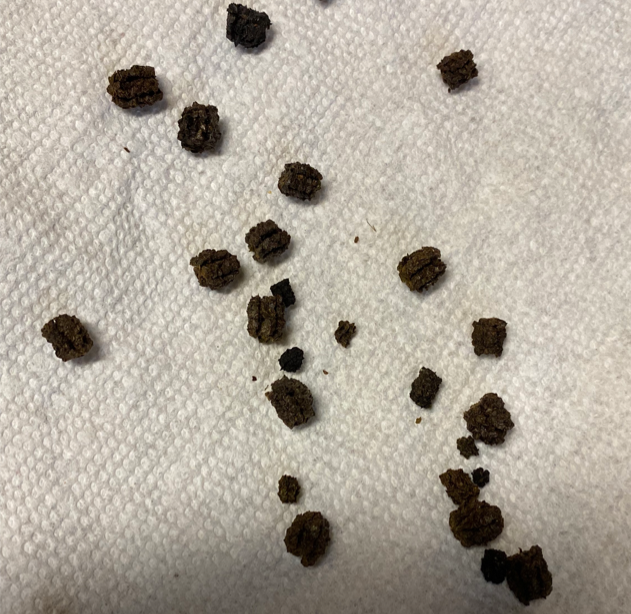 If you see the distinctive shape of caterpillar frass on the ground, look up!
If you see the distinctive shape of caterpillar frass on the ground, look up!
Caterpillars come in an amazing variety of shapes and colors. One of my favorite groups, because they’re also some of the strangest-looking, are the slug caterpillars. Most caterpillars have three pairs of spiky-looking true legs near their head and five pairs of squishy prolegs along their abdomen (including an enlarged pair called claspers located at their rear end).
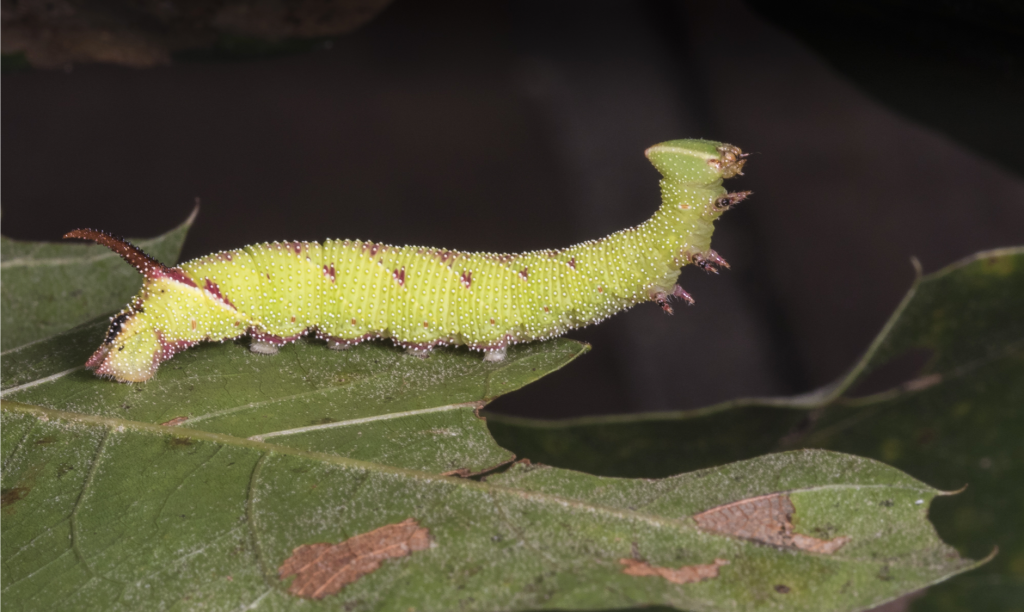 You can see the two types of legs on this walnut sphinx caterpillar fairly well. In this picture, the three pairs of true legs are being held up in the air; the five pairs of prolegs are on the surface of the leaf. Also, an interesting side note, this caterpillar is the only one I know of (in our area) that can make a noise! When bothered, it’s lets out a sound somewhere between a hiss and a squeal.
You can see the two types of legs on this walnut sphinx caterpillar fairly well. In this picture, the three pairs of true legs are being held up in the air; the five pairs of prolegs are on the surface of the leaf. Also, an interesting side note, this caterpillar is the only one I know of (in our area) that can make a noise! When bothered, it’s lets out a sound somewhere between a hiss and a squeal.
Unlike “normal” caterpillars, the slug caterpillars look more like moving helmets without visible legs. Many of them have stinging spines, so be careful not to rub your skin against them, as their venom can pack a punch!
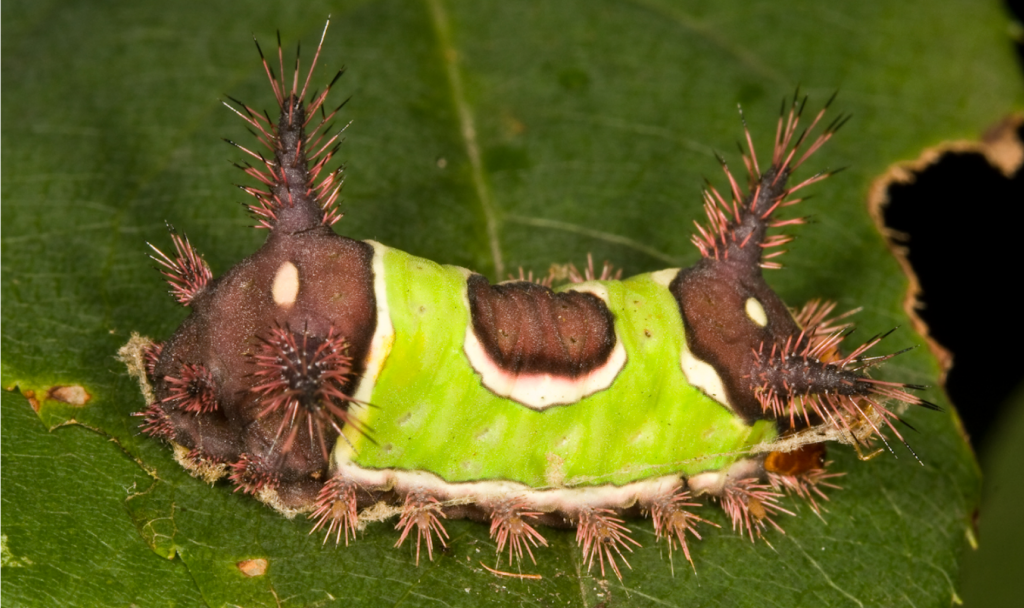 The saddleback caterpillar is one of our most common stinging slug caterpillars, and also one of the most striking in appearance! Photo: Mike Dunn.
The saddleback caterpillar is one of our most common stinging slug caterpillars, and also one of the most striking in appearance! Photo: Mike Dunn.
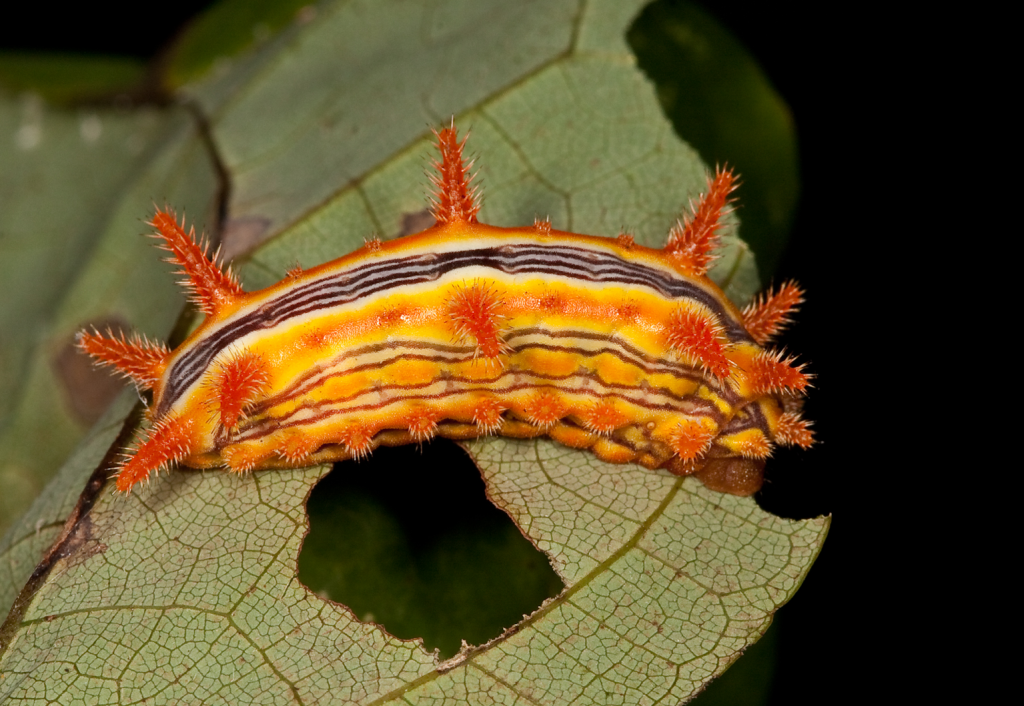 The stinging rose slug caterpillar is one of the most colorful caterpillars of all. Photo: Mike Dunn.
The stinging rose slug caterpillar is one of the most colorful caterpillars of all. Photo: Mike Dunn.
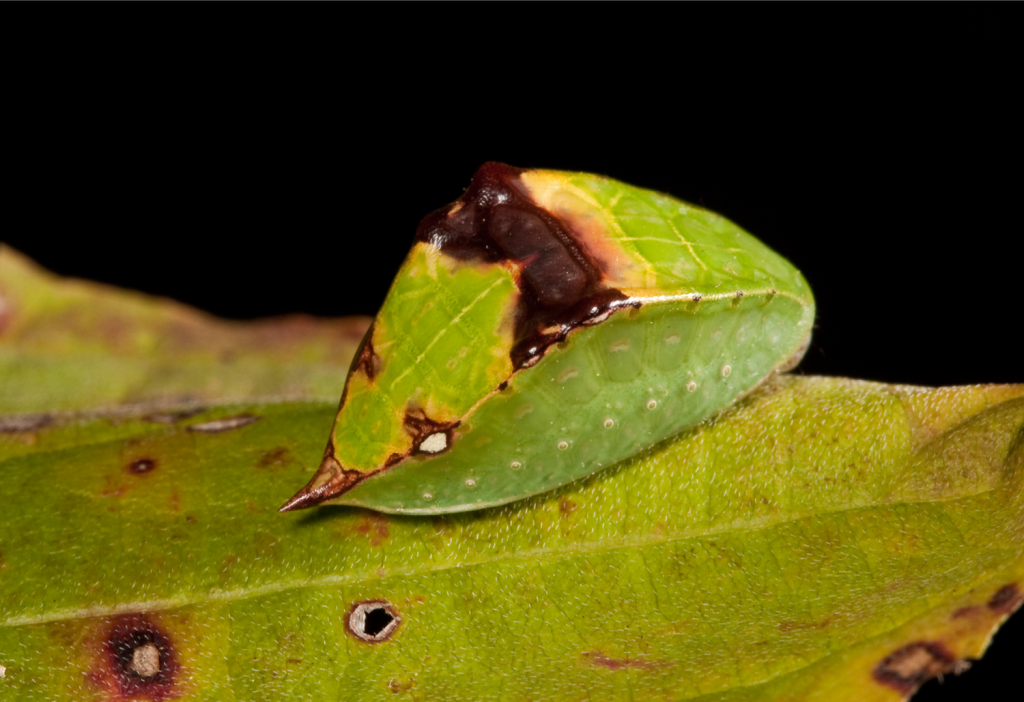 The skiff moth is a slug caterpillar that doesn’t sting, and hardly even looks like a caterpillar at all. Photo: Mike Dunn.
The skiff moth is a slug caterpillar that doesn’t sting, and hardly even looks like a caterpillar at all. Photo: Mike Dunn.
There are so many species of caterpillars, each with a unique look and adaptations to survive. Here are a few more of my favorites:
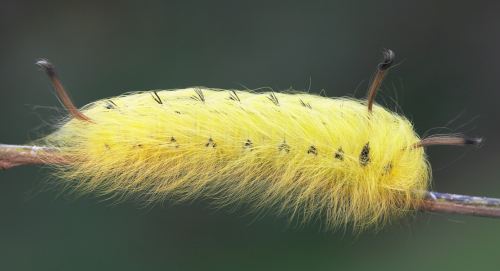 The spotted apatelodes is one of the furriest caterpillars. Don’t worry — it’s not a stinger! Photo: Mike Dunn.
The spotted apatelodes is one of the furriest caterpillars. Don’t worry — it’s not a stinger! Photo: Mike Dunn.
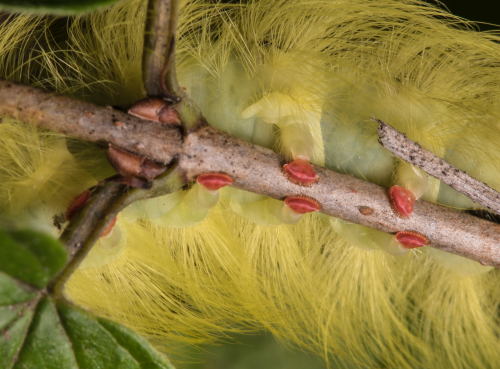 My favorite thing about the spotted apatelodes is that the tips of its prolegs are red! I’m not sure how this benefits the caterpillar, but it sure is an amazing feature to observe. Photo: Mike Dunn.
My favorite thing about the spotted apatelodes is that the tips of its prolegs are red! I’m not sure how this benefits the caterpillar, but it sure is an amazing feature to observe. Photo: Mike Dunn.
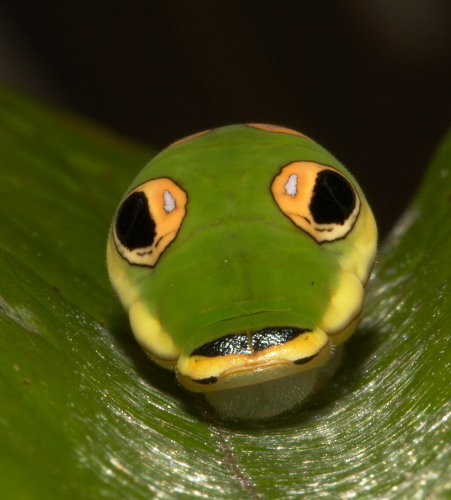 The spicebush swallowtail wins the award for best fake eyes. Its real eyes are tiny dots on its small, gray head, down below the green and yellow area. The eye spots are a predator deterrent. Doesn’t it look a bit like a snake? Photo: Mike Dunn.
The spicebush swallowtail wins the award for best fake eyes. Its real eyes are tiny dots on its small, gray head, down below the green and yellow area. The eye spots are a predator deterrent. Doesn’t it look a bit like a snake? Photo: Mike Dunn.
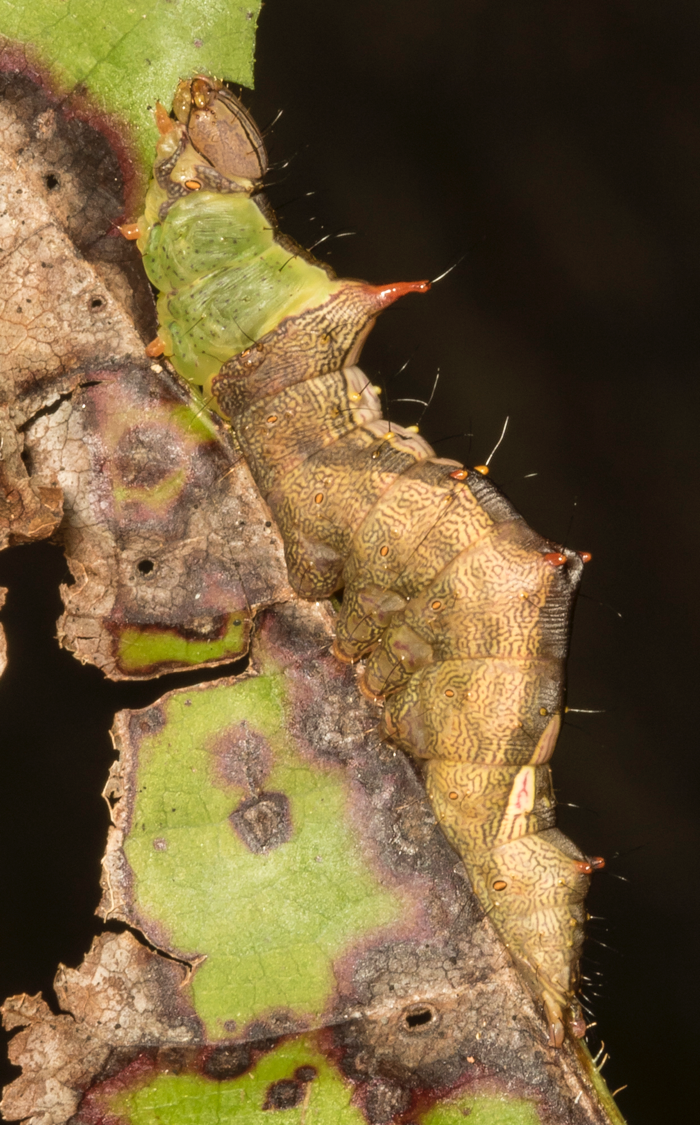 The checkered fringe prominent has a great defense strategy: to look exactly like the worn and torn edge of the leaf it’s been feeding on. Photo: Mike Dunn.
The checkered fringe prominent has a great defense strategy: to look exactly like the worn and torn edge of the leaf it’s been feeding on. Photo: Mike Dunn.
If learning a bit more about this fascinating life stage of butterflies and moths has inspired you to go out and find some caterpillars for yourself, give it a try! Look for frass and chewed leaves, or go out at night and search with a flashlight — many species are easier to spot under artificial light. The next week or two, before colder weather sets in, is a great time for some caterpillar hunting. If you find one you can’t identify, submit it to our ask a naturalist form and a Museum staff member can help you out!
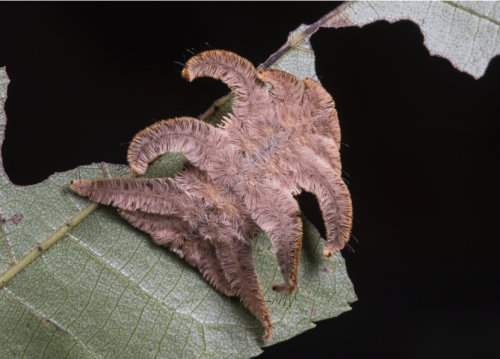 This caterpillar, the monkey slug, wins the superlative for “weirdest of all.” It’s a slug caterpillar with protruding appendages around its body. The appendages drop off when it turns into a pupa. Happy caterpillaring!
This caterpillar, the monkey slug, wins the superlative for “weirdest of all.” It’s a slug caterpillar with protruding appendages around its body. The appendages drop off when it turns into a pupa. Happy caterpillaring!
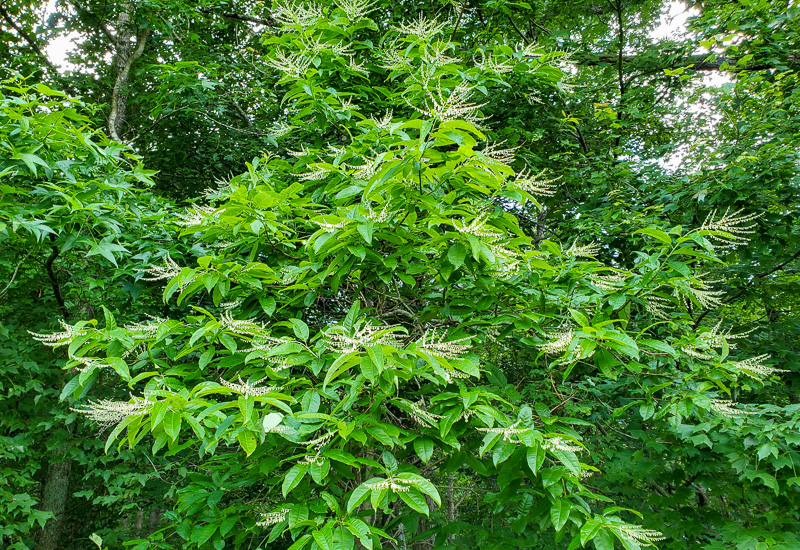
The sourwood (Oxydendrum arboreum) is one of my favorite trees in the hardwood forests of North Carolina. It is in the heath family (Ericaceae), which includes azaleas, rhododendrons, mountain laurel and blueberries. Sourwood trees are small when compared to the towering tulip trees, beeches, oaks and hickories that often overshadow them. Attaining heights of 30-50 feet, sourwood trees only reach into the mid-story of the forest canopy. With trunks usually no more than 12-15 inches in diameter, you might not have even noticed them during your forest saunters. The leaf contains oxalic acid, making it sour, not the wood. Sourleaf tree would have been a better name!
You might have noticed the showy sprays of creamy-white flowers against the green foliage in June or July, depending on your location and elevation. These flowers are favorites of many pollinators including honey bees, hence the popularity of sourwood honey at mountain roadside stands. The leaves turn a bright red in the fall, adding to the show of fall colors enjoyed by many in our deciduous forests.
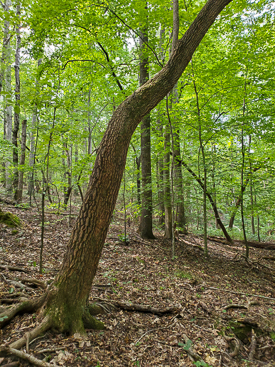
For me, the sourwood tree stands out from the bigger trees of the forest for its non-conformist “attitude.” Sourwood trees rarely grow straight up like most trees. Instead they almost always have a noticeable lean in their posture. This lean is not necessarily the result of wind partially pushing the tree over at some time. It’s simply how the tree grows. Perhaps this helps place the tree’s leafy crown under the higher canopy of the larger trees, but still in a position to receive enough sunlight energy for photosynthesis. This strategy seems to be successful for the sourwood as they are relatively common, particularly on moist slopes of mixed hardwood forests. The natural lean of the sourwood, along with a relatively shallow root system, does make them more susceptible to falling over completely if pushed too hard by wind. I see many old sourwood trees completely prone on the ground, some still alive and some mere skeletons of a life once lived. I see others that would have fallen to the ground if not for the helping “hand” from the trunk of one of its more upright neighbors. (Giving a new meaning for “lean on me”!)
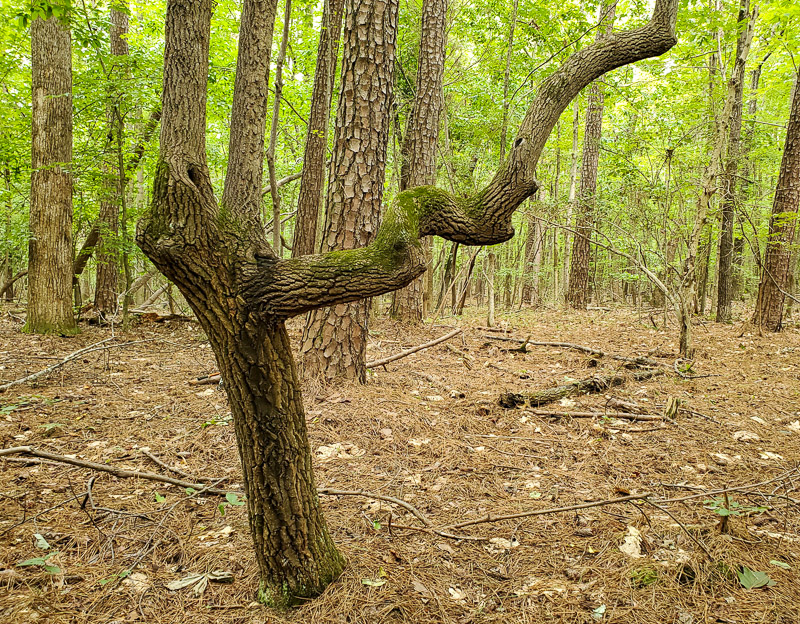
My adoration for the sourwood does not rest solely on the fact that the trunk has a lean. The sourwood does not have true terminal buds. Lateral buds become the leader for each growth spurt and for each new growth season. This gives the twigs and branches a crooked or zigzag appearance. One of these branches will become the main trunk, so it’s rare for the leaning trunk not to have some noticeable kinks in its stretch up to the sky. The main trunk may fork into two or more leading trunks, each with its own unique crooked form. Sometimes the results will leave you scratching your head wondering, “how in the world did that tree end up looking like that?”
Next time you are in the woods and find one of the larger leaning sourwood trees, go wrap your arms — well okay, your hands — around the trunk. The cross section of a leaning sourwood is not round, it is oval or elliptical instead: the wood is thicker on the sides of the trunk leaning towards and away from the ground. This is a support issue for a leaning tree — it needs thicker/stronger wood to counter the pull of gravity. The larger the tree, the more pronounced the elliptical cross section is. A sourwood behind my house measures 11 inches in diameter across the thick side and only six inches in diameter measured across the skinny side!
All of this leads to individual sourwood trees unique in shape and form. I like to think of them as the “artists” of the woods, sometimes creating wild and crazy living sculptures with their non-conformist trunks. The final touch to this tree sculpture is the deeply furrowed bark on larger trees, imparting a rich finishing texture to the living sculpture. The trunks of larger sourwoods are often hollow and adorned with burrs and knotholes. Not only does this add to their unique look, it also provides homes and shelter for a variety of wildlife. Small mammals, birds, lizards, snakes, tree frogs and countless invertebrates may utilize these cavities and hollows for shelter or homes at some point.
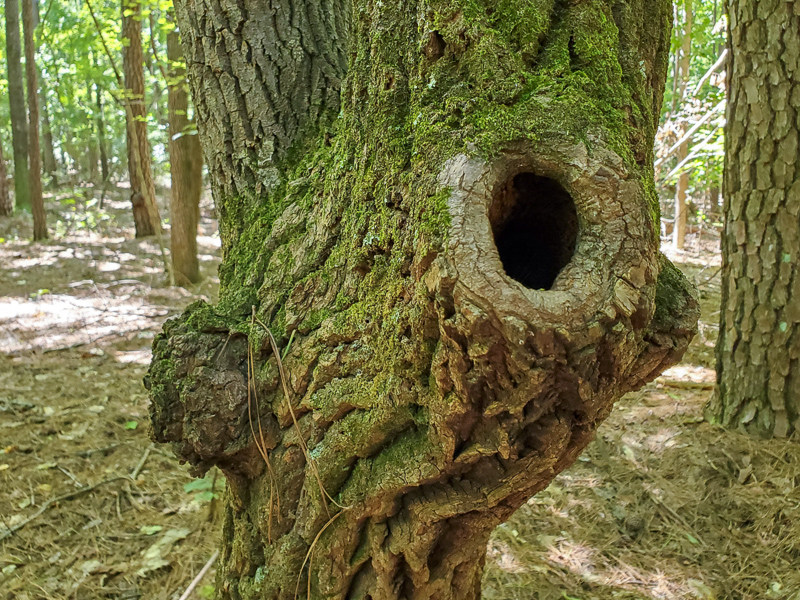
So, yes, I am sweet on sourwoods! They add their own artistic flair to the tapestry of trees in our hardwood forests. Look for them next time you’re in the woods. They are easy to spot — just look for a small leaning tree that’s big in character!
By Jerry Reynolds, Head of Outreach
For more information about our upcoming activities, conservation news and ground-breaking research, follow @NaturalSciences on Instagram, Twitter and Facebook. Join the conversation with #visitNCMNS.
I welcomed the frequent rains that we had this summer. They nourished the plants, kept my stream flowing and produced magic in the woods behind my house. The magic is the arrival of mushrooms that seemingly appear out of thin air! The truth behind the appearance of mushrooms and other fungi in their varied forms and colors is even more magical than the illusion created on the forest floor.
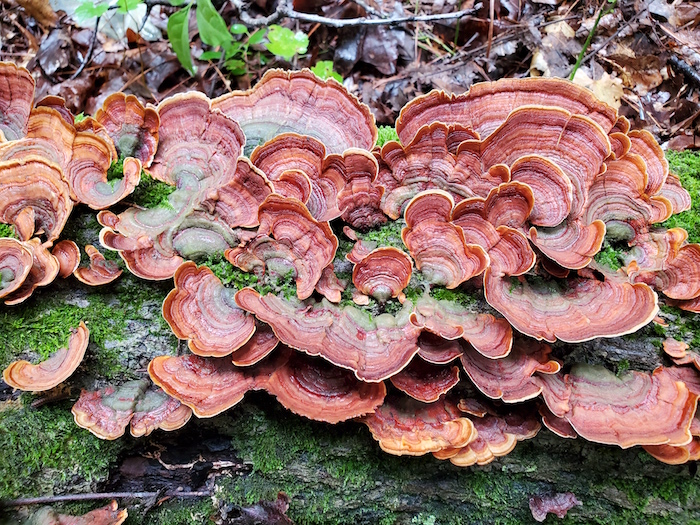 False Turkey-Tail Fungi
False Turkey-Tail Fungi
If you walk in the woods, you are walking over countless fungi hidden in the soil beneath your feet or in the rotting logs you step over. Soil is much more than just “dirt.” Soil minerals are mixed with water, air, dead organic matter and a diverse array of living organisms. Fungi are important living organisms in soil. The underground portion of the fungus consists of a network of microscopic, thread-like structures called hyphae. This intricate web of hyphae is referred to as the mycelium, which is the vegetative body of the fungus.
The diversity of fungi is beyond the scope of a few paragraphs in a blog. Some fungi are parasitic, pulling nutrients from plants and other organisms with some cost to the health of the host. Other fungi are decomposers and help break down dead trees and other dead organic matter. But many fungi are in mycorrhizal associations with plants. Mycologists have studied this relationship and find that many plants wouldn’t make it if their partner fungi were not present. The fungus works in partnership with the plant’s roots giving it access to nutrients and water otherwise unavailable to the plant and provides some protection to the plant against pathogens. The fungus receives sugar produced by photosynthesis in the plant. This long-standing relationship has benefitted both plants and fungi.
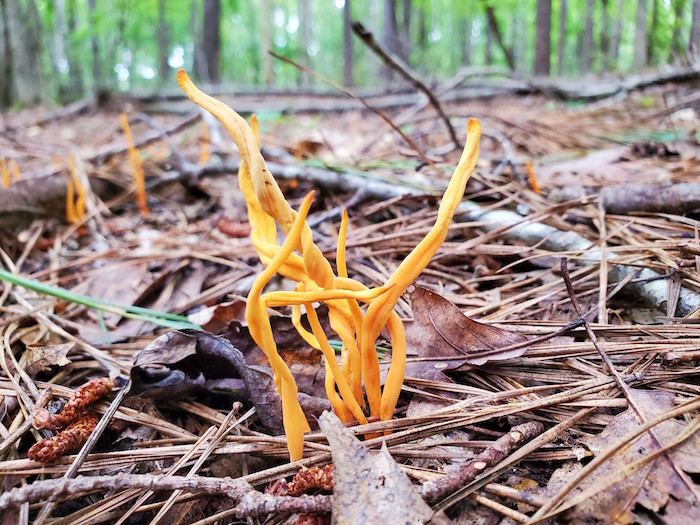 Golden Spindles Fungi
Golden Spindles Fungi
The fungus lives hidden from view much of the time as a usually nondescript web of tissues in the soil. Though it is always doing important business out of sight, when conditions are right the mycelium will produce fruiting bodies such as mushrooms and other forms depending on the species. The fungi make up for their seemingly drab life as look-alike hyphae masses with their incredible and magical fruiting bodies above ground. These fantastic shapes and colors burst through the forest floor for all to enjoy.
North Carolina has about 8,000 species of such macro fungi. There is no field guide that includes them all. Macro fungi are only a small part of our fungal diversity with 80,000 species of fungi estimated in North Carolina alone. Identifying the macro fungi requires a close examination of the fruiting body. Some require microscopic views of the spores they produce, chemical tests or even DNA barcoding to narrow down their identity. It also helps to note what plant or tree (live or dead) that it is in association with, as their relationship may be species specific.
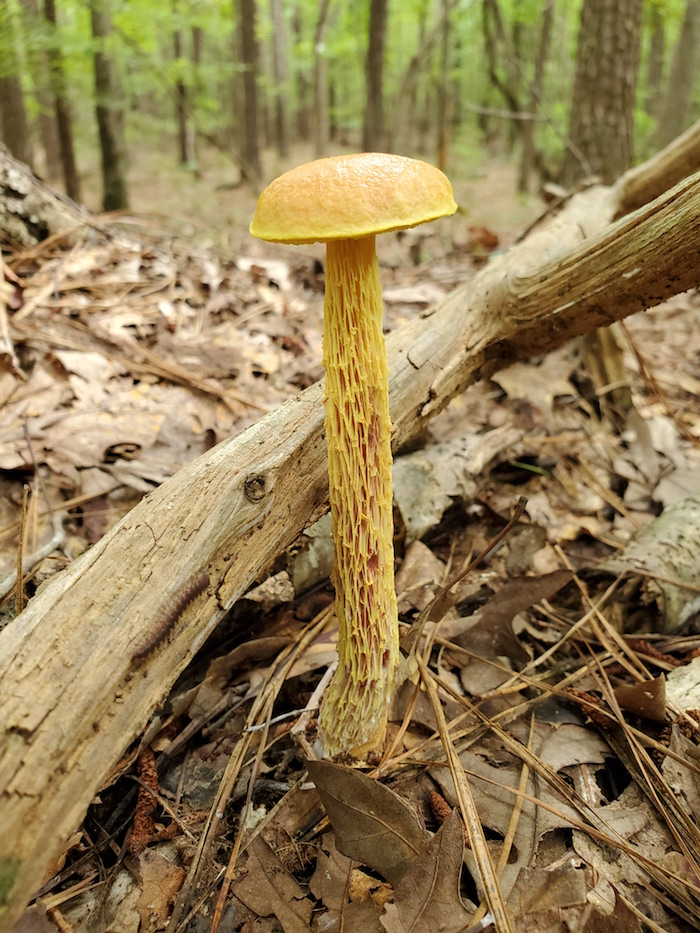 Shaggy-Stalked Bolete Mushroom
Shaggy-Stalked Bolete Mushroom
I am not a mycologist, so I accept that I cannot easily identify many fungi to its species. I am quite happy with identifying one to its genus or even to its taxonomic family. That does not diminish the delight of discovery I experience when I walk up on one of the marvelous fruiting bodies of a fungus. I spend much time in the woods on my hands and knees photographing these wondrous forms.
I marvel at why fungi that look so similar in their mycelial form, produce such a diverse and colorful array of fruiting bodies. The purpose of the fruiting body is to produce and release the spores, which will produce new fungi where they land. The form must have some function to maximize that. Why have so many different forms and colors to do basically the same job of spore dispersal is a question that even has mycologists scratching their heads. Many forest animals will eat fungi, and this will disperse spores that pass through their gut. Some fungi contain toxins that are poisonous to some animals when ingested while other animals eat them with impunity. Some mushrooms contain mind-blowing compounds, producing hallucinogenic effects when eaten by humans. There are others that contain compounds of great value for medicinal/pharmaceutical purposes. And let’s not forget those tasty fruiting bodies that are culinary delights!
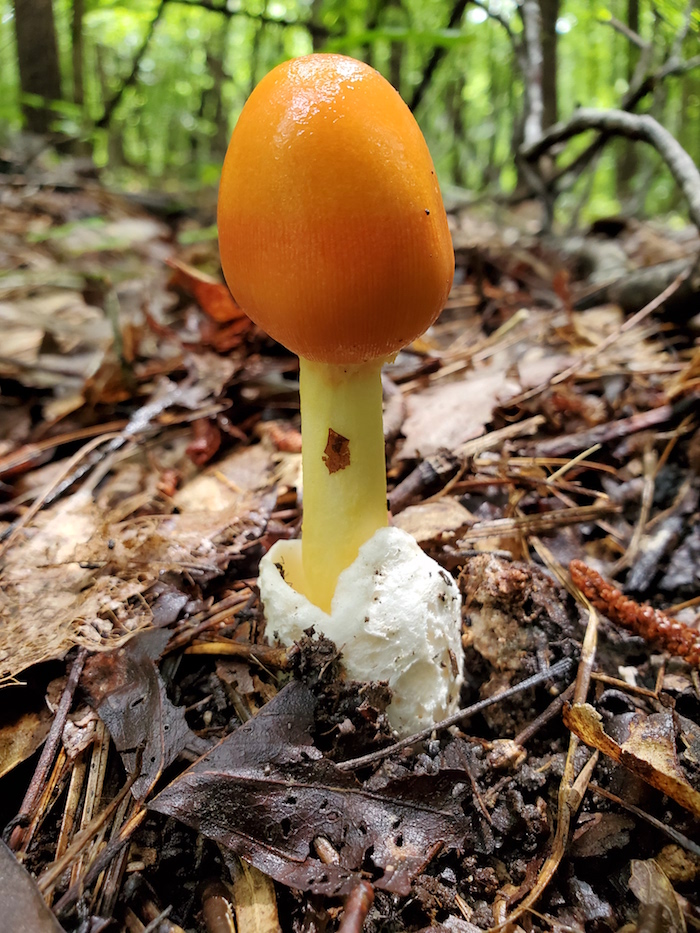 Yellow Caesar Mushroom
Yellow Caesar Mushroom
I don’t have all the answers to many questions about the fungi, so I call it magic! Now is a good time to experience the magic for yourself. I challenge you to walk through a forest and discover some of these magical forms! When you see a mushroom or other type of fungal fruiting body, think of how important the fungi are as you walk over their mycelial bodies hidden in plain sight. I hope that you enjoy the magic of mushrooms as much as I do!
Special thanks to Henry Van T. Cotter for sharing his knowledge of fungi over the years and inspiring others to explore our wonderful fungal diversity.
By Jerry Reynolds, Head of Outreach
For more information about our upcoming activities, conservation news and ground-breaking research, follow @NaturalSciences on Instagram, Twitter and Facebook. Join the conversation with #visitNCMNS.
The only interaction that most people have with the Virginia Opossum is on the road! Sadly, that is not usually a good interaction for the opossum. The opossum is not well-suited for crossing heavily traveled roads. They are slow and apt to freeze when danger approaches — not a good formula for crossing roads. Some of you may have opossums show up at your bird feeders or even your back door if you leave food for outside pets. Most people know very little about one of our most common mammals.
In January, I decided to deploy my trail camera focused on a hole leading to a burrow under the stump mound of a large leaning tree. This burrow is in the woods behind my house but is less than 300 feet from my back door. I had no idea who was using it, but it appeared that some critter was going in and out on a regular basis. When I retrieved the memory card a few weeks later, I saw that it was an opossum and I decided to continue observing this burrow to learn more. Setting my camera on video mode, I began my journey of learning more about this animal with glimpses into its life in 20-30 second video segments.
I now have been observing the opossum at this burrow for eight months. I even expanded by putting a second trail camera at another burrow nearby. I have learned much about the opossum by watching hundreds of videos from these two burrows. I began this thinking that I would be watching one or two individual opossums on a regular basis. I was surprised at how many different individuals regularly visited the burrows. I am now watching a passel of opossums, four females and four males. Identifying individual opossums from short videos is not easy. I have an ID worksheet that helps me identify individuals based on a combination of characteristics in addition to sex — size of head, markings on ears/face, length of dark tail band, kinks/crooks/injuries in tail, etc.
The nearly hairless tail does give the opossum a rat-like appearance. But their tail is a marvelous adaption for climbing. They can use it as a fifth “arm” when climbing or even use it to carry leaves into the burrow. I have videos of female and male opossums carrying leaves into the burrow to cover the bare ground inside. Usually only one stays in the burrow at a time but occasionally two will share it for a while. I suspect they use multiple burrows or tree hollows as they appear to be part-time inhabitants at these two burrows. Generally, the opossums are nocturnal but their activity pattern outside the burrow varied widely and they can be active during the middle of the day.
Males scent-mark the outside of the burrow including the plants nearby. They do this by vigorously rubbing the scent glands on their chest against what they wish to mark. Multiple males mark the same area. I’m not sure if it is competitive or if the males are marking a shared territory. Females come behind the males to rub on the same areas. This may be just an attraction to the male or perhaps the females are taking on the male’s scent to mark themselves. They do this a lot! A Christmas Fern and small Beech tree have really taken a beating from scent marking.
The opossums are prolific, to say the least! I watched the pouches of two females grow larger this past spring until they could hardly contain the young inside. Those same two females and a new third female now have bulging pouches. The moms can hardly walk without dragging the pouch on the ground. When the young are too big for the pouch, they will ride on their mother’s back until they finally drop off at some point to be on their own.
I have learned much by watching the opossums at the burrows. When you watch an opossum emerge from the burrow, pause to yawn and sniff the air before plodding down the slope, you make a connection and see them as individuals. The first opossum that I saw emerging from the burrow on January 2, I named Mr. Big Head. He seemed to be an older male as he moved slowly and deliberately. He also slept in more and came out of the burrow at odd times. I grew fond of him but sensed that he was probably nearing the end of his short life. Opossums only live 1-3 years in the wild. I haven’t seen Mr. Big Head since mid-May, so I think that he has passed on. I am honored that he shared part of his life with me and that I can share some of what I have learned with you. I hope that you will learn more about this awesome animal. The opossum certainly deserves more respect than most people give it.
By Jerry Reynolds, Head of Outreach
For more information about our upcoming activities, conservation news and ground-breaking research, follow @NaturalSciences on Instagram, Twitter and Facebook. Join the conversation with #visitNCMNS.
The Virginia Opossum (Didelphis virginiana) is very common in North Carolina and widely distributed in North America, but most people don’t give the opossum much thought. Most know that it is a marsupial, making it a distant cousin to kangaroos. The Virginia Opossum was even designated as North Carolina’s official state marsupial in 2013. Of course, it had no competition since it is our only native marsupial!
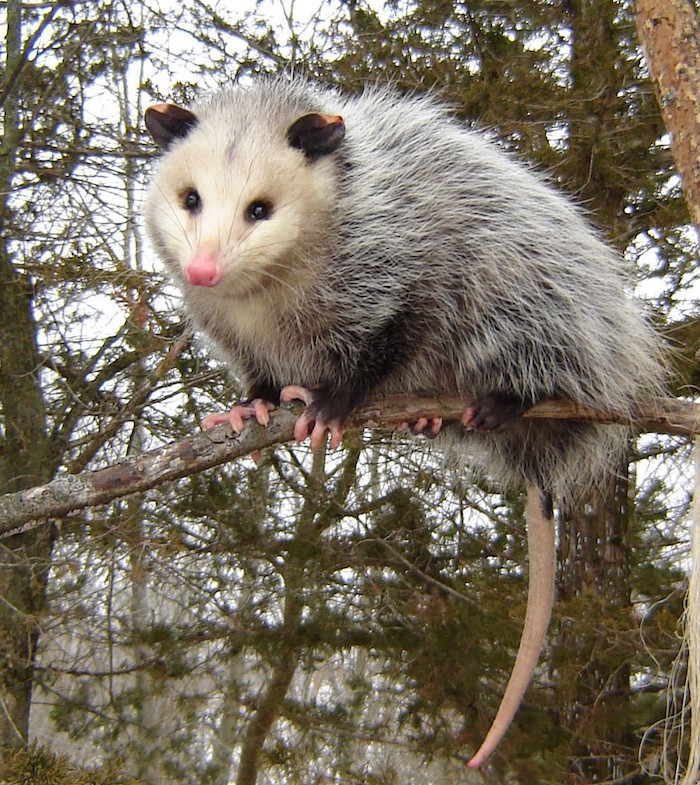 Virginia Opossum. Photo: NC Wildlife Resources.
Virginia Opossum. Photo: NC Wildlife Resources.
Most people can recognize the opossum, usually with some disparaging reference to its rat-like appearance. The only other thing that most people know about the opossum is that they have difficulty crossing roads. Sadly, for most people, seeing those who didn’t make it across the road is the only interaction they have with the opossum. But the opossum is an awesome animal that deserves much more than just being the subject of bad road-crossing humor.
Marsupials are part of an ancient lineage of mammals that can be traced back to the days of the dinosaurs. Marsupials are a group of pouched mammals that includes kangaroos, Koalas and opossums. The young of marsupials are very small at birth and must crawl to their mom’s pouch (“marsupium”) where they will finish their growth and development until they can go out on their own. There are over 300 species of marsupials in the world, with the majority found in Australia. This is mostly the result of the timing of marsupial evolution and the geologic isolation of Australia. Closer to home, there are about 100 species of marsupials in South and Central America. At some point, an ancestor of the Virginia Opossum moved up into Central and North America from South America. The species adapted to the new environment of these more northern latitudes and continued its expansion.
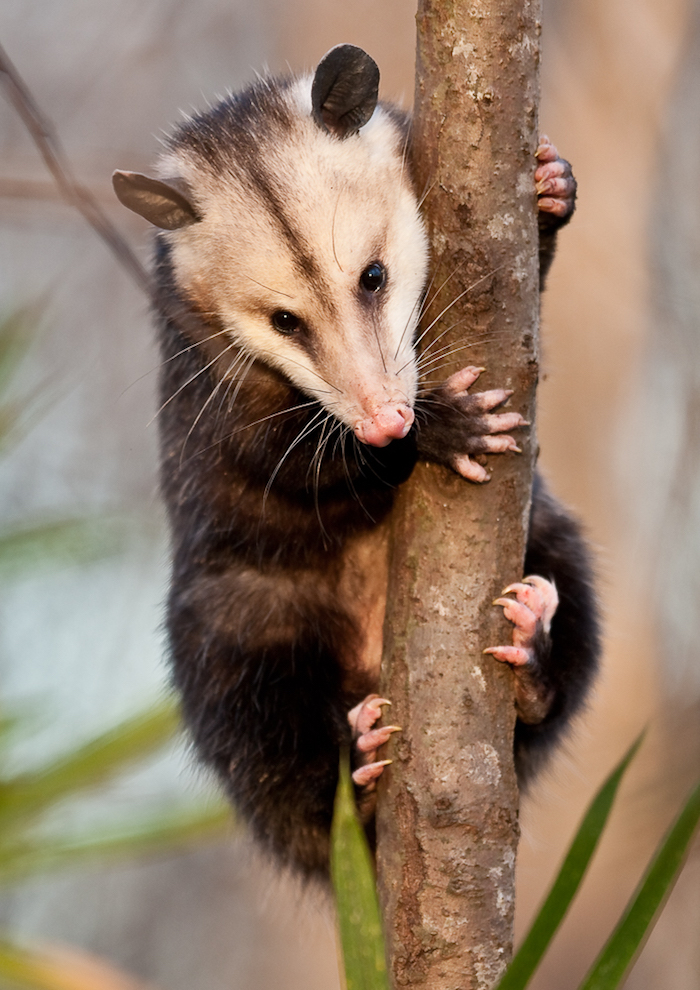 Opossum in tree. Photo: Mike Dunn.
Opossum in tree. Photo: Mike Dunn.
The Virginia Opossum is now among the most successful mammals in North America, equally at home in the wilds of our forests and in the wilds of our urban jungles! They have adapted well to living near people and can be found in most metropolitan areas. Their ability to adapt and use a variety of resources for food and shelter is part of the formula for their success. They are omnivores, eating a variety of plants and animals. They reach sexual maturity in less than a year and have a high reproductive output with up to three litters of “joeys” a year. Each litter can have as many as 13 young, only limited by the number of nipples the female opossum has.
They have long prehensile tails and opposable “thumbs” on their lower feet making them great climbers. They can even use their prehensile tail as an extra “hand” to carry stuff. They have a lower body temperature than most mammals making them very resistant to rabies. They have a natural immunity to venomous snake bites and will kill and/or eat such snakes without any ill effect if bitten. They are fastidious groomers and eat the ticks that attach to them. It has been estimated that a single opossum may eat up to 5,000 ticks in a single season. They certainly should be a welcome resident to your backyard if you are concerned about ticks and venomous snakes.
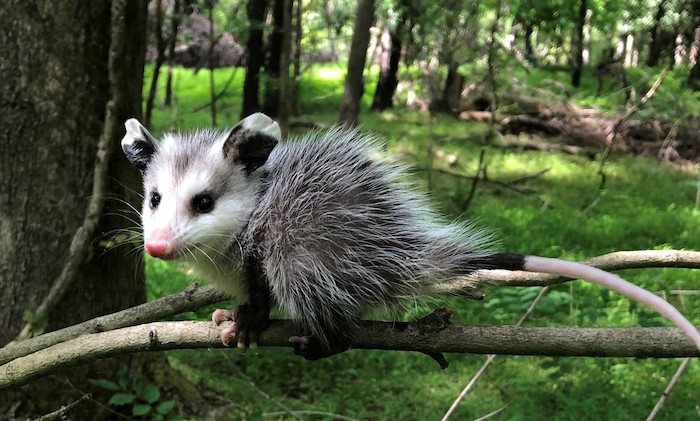 Juvenile opossum. Photo: Rick Trone.
Juvenile opossum. Photo: Rick Trone.
The only limitations they seem to have are that they do not tolerate the cold as well as other mammals and they have a very short life span of only 1–2 years. They are preyed on by many of our mammalian predators and larger birds of prey. The opossum is not a very fast-moving animal, so it must rely on its stealth to avoid being preyed upon. They don’t have much of a defense against most predators. They do have the most teeth (50) of any North American mammal and are quick to show those off if threatened. But this is more of a bluff as they can’t really mount much of a defense against a large predator. They do feign death as an involuntary response to extreme danger. This behavioral response is the source of the expression, “playing possum.” I’m not sure how good a defense this is, but it must have some survival benefit.
Much can be learned about the Virginia Opossum in various text references and online resources. But these shed little light on the daily life of an opossum. I have been “watching” opossums in the woods behind my house since January of this year. No, I don’t go out at night to watch them with a flashlight since they are mostly nocturnal! I use a trail camera for this window into their lives.
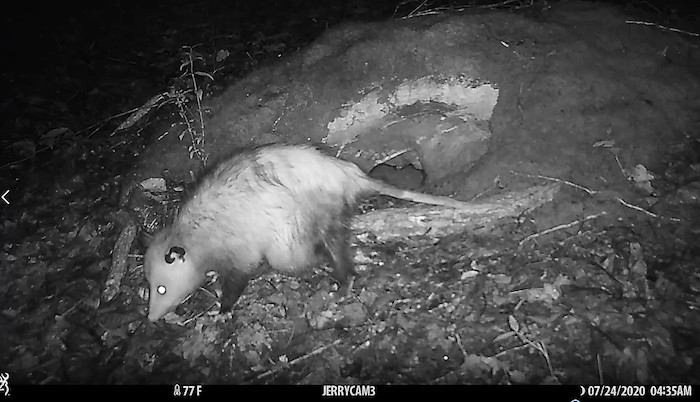 Secret Life of the Opossum Part Two coming next week!
Secret Life of the Opossum Part Two coming next week!
In the next Nature Now article, I will share what secrets I have learned about the everyday life of the opossum as captured through the lens of a trail camera.
By Jerry Reynolds, Head of Outreach
For more information about our upcoming activities, conservation news and ground-breaking research, follow @NaturalSciences on Instagram, Twitter and Facebook. Join the conversation with #visitNCMNS.
As I was scanning the forest trail to avoid tripping over roots and rocks while walking the dogs, I spotted something that looked like a reddish-pink cotton ball. I quickly snapped a picture of it and noticed that the ball of fluff was attached to an oak sapling. It was late March, and there were several other oak saplings that were adorned with these Ping-Pong sized fuzzy baubles. Over the next few weeks the color of the balls faded to pinkish white and finally turned into a darker tannish color.
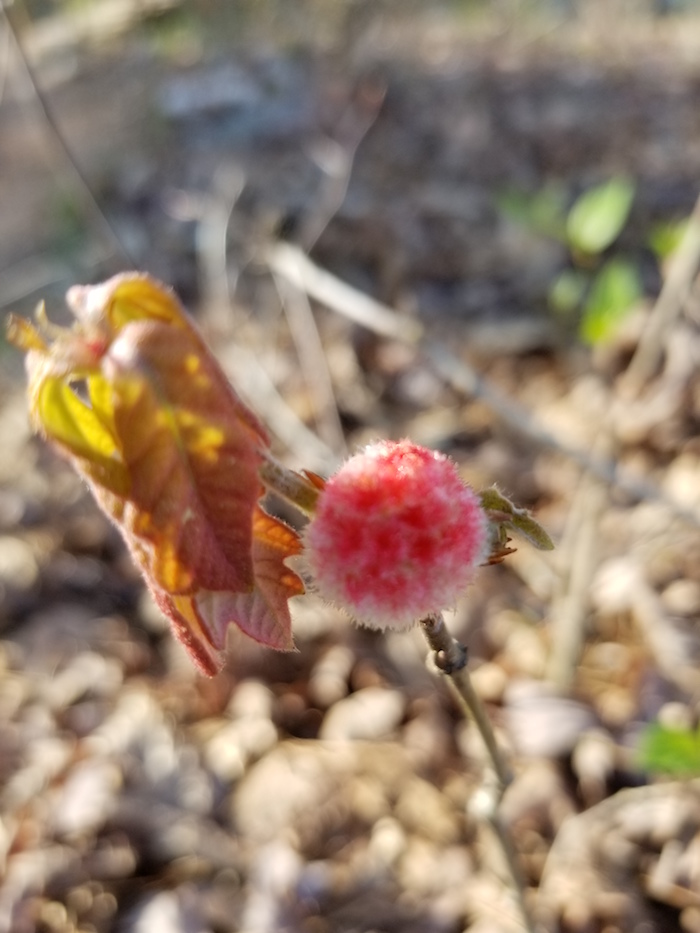
As it turns out, these balls are actually galls, spherical growths on the outer tissue of plants, often caused by parasitic insects such as wasps. It’s quite obvious why these particular galls are called “strawberry oak galls.” They are also known as wool sower galls and are the result of growth-inducing and regulating chemicals produced by a parasitic wasp that belongs to the Cynipidae family. In this case, a female Cynipid of the species Callirhytis seminator had pierced the leaf bud of an oak sapling with her ovipositor and deposited her eggs on the immature leaflets within the leaf bud. During this process she injected enzymes and plant-regulating hormones that are capable of “reprogramming” the normal growth of plant cells. The plant cells closest to the eggs break down and form a nutritious meal for the larvae.
The female dies shortly after depositing her eggs, but the larvae emerge in early spring, when the leaves are about to unfold. These tiny white grubs nibble on the young leaflets and their salivary secretions also act as a plant growth regulator and further induce rapid cell growth. Uncontrolled, rapid growing plant cells cause the gall to swell and increase in size. Not only are the deformed plant cells within the gall the sole food source for the larvae, the gall itself provides protection from the outside world. If you look closely at the strawberry oak gall, you can see that it’s composed of a bundle of small hairy galls congregated in one spot on a leaf. In fact, if you open up the gall, you see seed-like structures in which the chubby white larvae pupate and develop into full-grown adult wasps. The adult Callirhytis seminator isn’t a stinging wasp that makes everyone scream, swat at or sprint away from. It’s rather a dull looking, stingless, ant-sized insect with two pairs of wings.

These are not the only fuzzy galls I encountered on my daily walks. A while ago I spotted two smaller sized, furry looking galls on a dead oak leaf laying on a trail. I stored it in a closed clear container, and after a few weeks, sugar-ant sized wasps, probably Andricus quercuslanigera or wool-bearing gall wasps, emerged and crawled around in the container.
Each species of Cynipid targets a specific host plant and induces the formation of a specific gall that varies in size, shape and form depending on the species. There are as many as 750 gall wasp species (Cynipids) that form different kinds of galls on leaves, twigs and branches of oak trees. Another one that I stumbled upon in March looked like a small green apple. It was a type of oak apple gall, about 1½” in diameter and was attached to an undeveloped oak leaf. Amphibolips confluenta is a common wasp species that forms such oak apple galls. About a month later, the gall became brown and a tiny hole confirmed that the larva had pupated and that a young adult had chewed its way out to fly into the world.
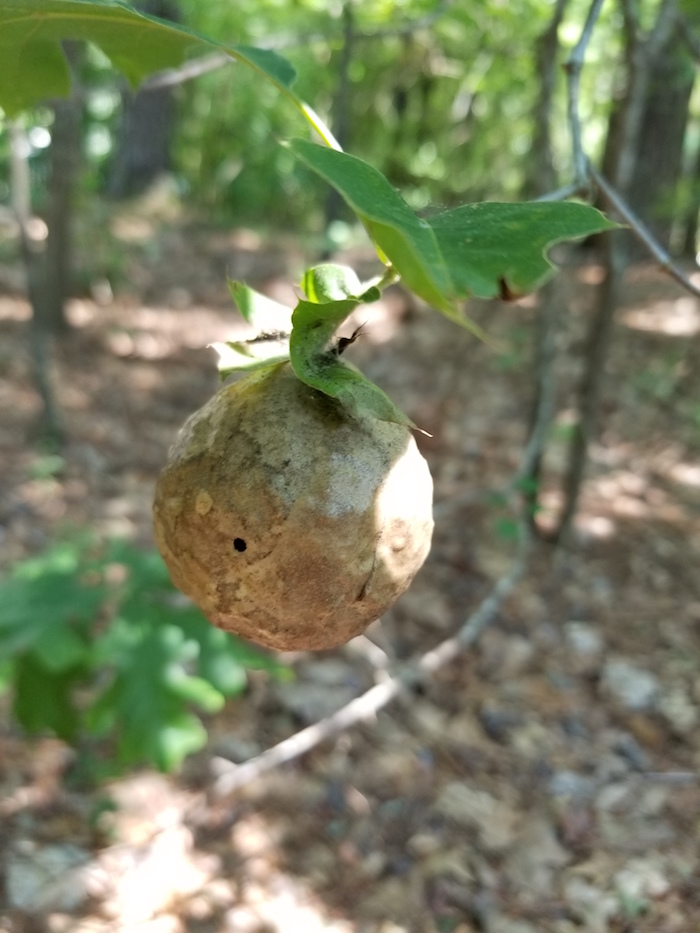
The outside of the gall felt like a paper grocery bag and when I cut it open to look at the cross section I could clearly see that this solitary larva lived in the center of the gall supported by radiating filaments. Just like with the other gall wasp larvae, the gall provided nourishment, shelter and protection.
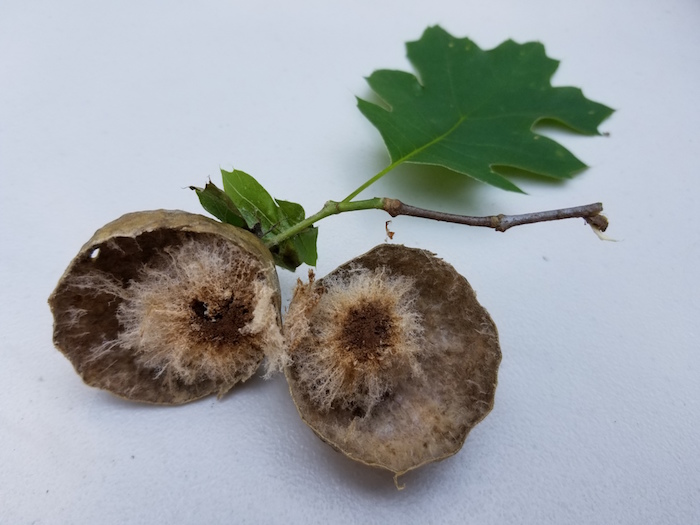
Most Cyprinids prefer oaks, which explains why more galls occur on oak trees than any other tree! The galls don’t cause any major damage and are relatively harmless. In fact, oak trees have been physically assaulted by many other species of mold, fungi, wood-boring beetles and gypsy moths that cause considerably more damage to these trees than the galls. As you know, Raleigh is the city of oaks and its streets, parks and neighborhoods are adorned with these cherished trees, so next time you go for a walk, see if you can spot some oak galls and get inspired by cecidology, the study of galls!
By Nancy Locquet Absillis, Co-coordinator of the Natural World Investigate Lab
Here’s to the land of the longleaf pine,
The summer land where the sun doth shine,
Where the weak grow strong and the strong grow great,
Here’s to “Down Home,” the Old North State.—North Carolina State Toast
Longleaf forests once covered up to 60 million acres in the southeastern US, stretching from southern Virginia to eastern Texas. Early explorers and colonists saw dollar signs when they gazed upon the “endless” forest: a source for all sorts of exportable products. The first major economic driver in North Carolina was the naval stores industry — the production of lumber, tar, pitch and turpentine.
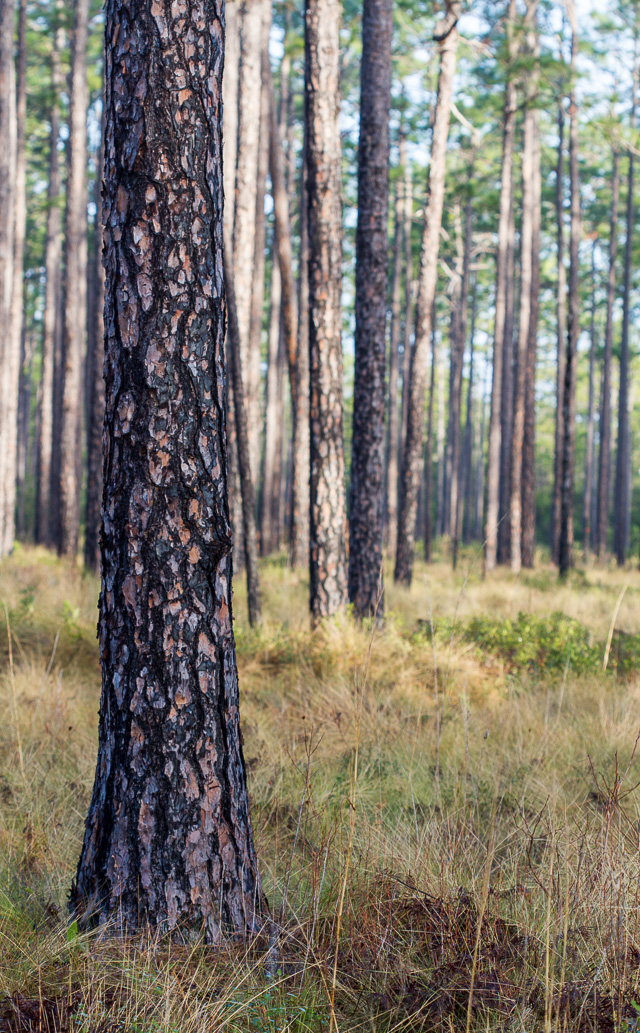 Longleaf savanna in the Green Swamp Preserve.
Longleaf savanna in the Green Swamp Preserve.
Longleaf grow straight and true, making fantastic masts. Their resinous heartwood, called fatwood or lighterwood, was slowly burned under piles of earth, releasing pungent tar. Tar was boiled to thicken it into nearly solid pitch. Tar and pitch were essential to the sea-worthiness of wooden ships: ropes and sails were soaked in tar, seams in the hull (and pretty much all other wood on a ship) were coated in pitch. The bark of living trees was scraped away, releasing the tree’s natural defense, resin, which was collected and distilled into turpentine. Turpentine had numerous uses, including as a remedy for colds (probably not the best idea). Though the longleaf forest must at first have seemed vast and limitless, after a century or more of harvesting, the once extensive blanket of longleaf pine in the Southeast was reduced to about 3% of its original range.
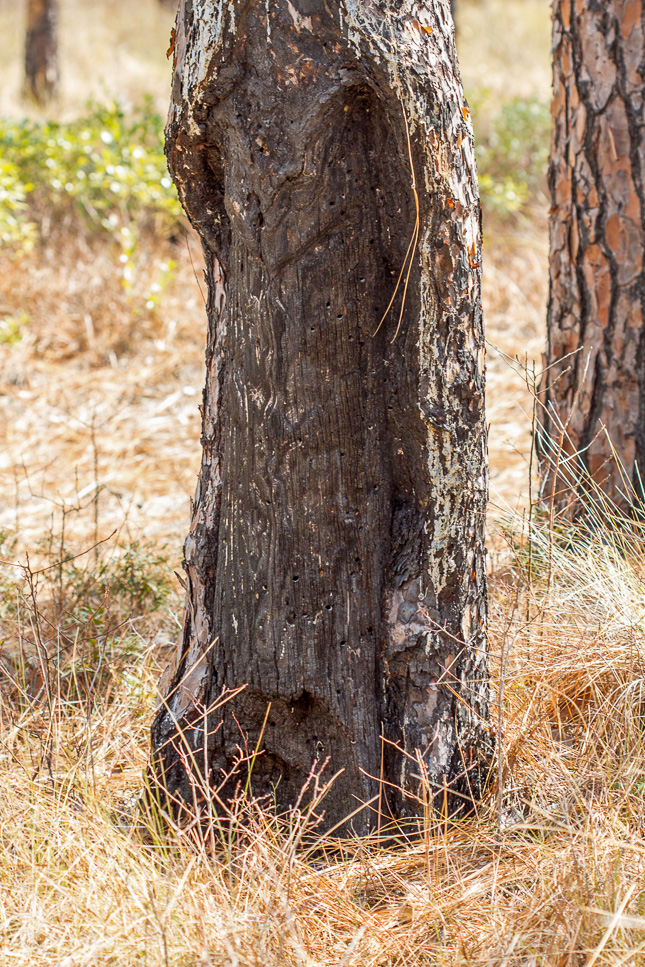 Cat-faced tree in Croatan National Forest; longleaf trees were cut in a distinctive “cat face” pattern to promote the production and allow the collection of resin for distilling into turpentine.
Cat-faced tree in Croatan National Forest; longleaf trees were cut in a distinctive “cat face” pattern to promote the production and allow the collection of resin for distilling into turpentine.
Longleaf is well adapted for poor, sandy soils and thrives in an environment frequently visited by fire. It has some amazing strategies for surviving under those conditions. Longleaf are not tolerant of shady conditions. In a mature savanna, they grow spaced fairly far apart so that each needle on each branch can receive as much sunlight as possible. They lose their lower limbs as they grow larger, and viewed from the ground seem to provide a loose, permeable canopy held aloft by elegantly arranged poles. This openness is one of the reasons that the savanna has such a diversity of low-growing species. The other is fire. Fire clears away other shrubs and trees, like turkey oak and gallberry, that typically grow beneath longleaf pine, and opens the forest floor for shorter species, like carnivorous plants, as well as seedling longleaf. Mature longleaf trees have thick bark that makes them resistant to all but the hottest fires. But with fire occurring every 3 years or so, historically, how would that allow new longleaf to sprout? Well, their growing stages are also perfectly adapted to this sandy, fire-prone habitat.
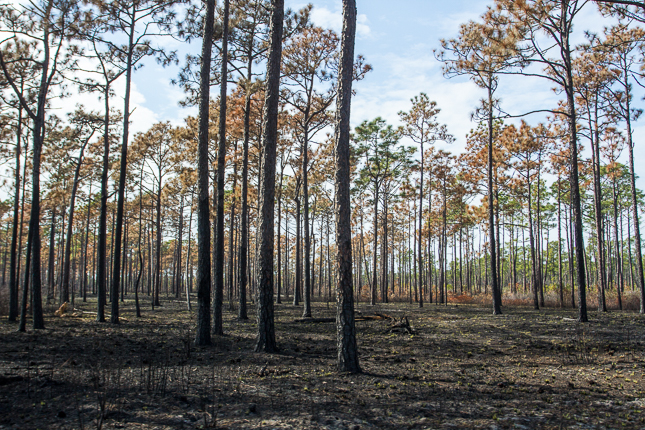
Recently burned longleaf stand in Croatan National Forest.
A longleaf seed is most likely to be successful if it germinates in a relatively open area where it receives a lot of sunlight … which is exactly what you would find in a longleaf savanna just after a fire. The seedling develops into a special phase of life, unique to longleaf, called a grass stage. At this stage, the “tree” is just a tuft of needles at ground level that looks very much like the surrounding wiregrass. For a period of around 3 years (sometimes shorter, but sometimes much longer), the longleaf grows downward rather than upward, sending a taproot deep into the soil to fuel future growth. During this stage, it is, perhaps surprisingly, fairly fire resistant. The thick needles protect the all-important growing tip at the heart of the grass stage. Even if the needles are mostly burned, the tree can still make it!

Grass stage longleaf blending in with the surrounding wiregrass.
When the time is right, the longleaf moves out of the grass stage with rapid vertical growth. It develops a thick, white bud-like tip, sometimes called a candle.
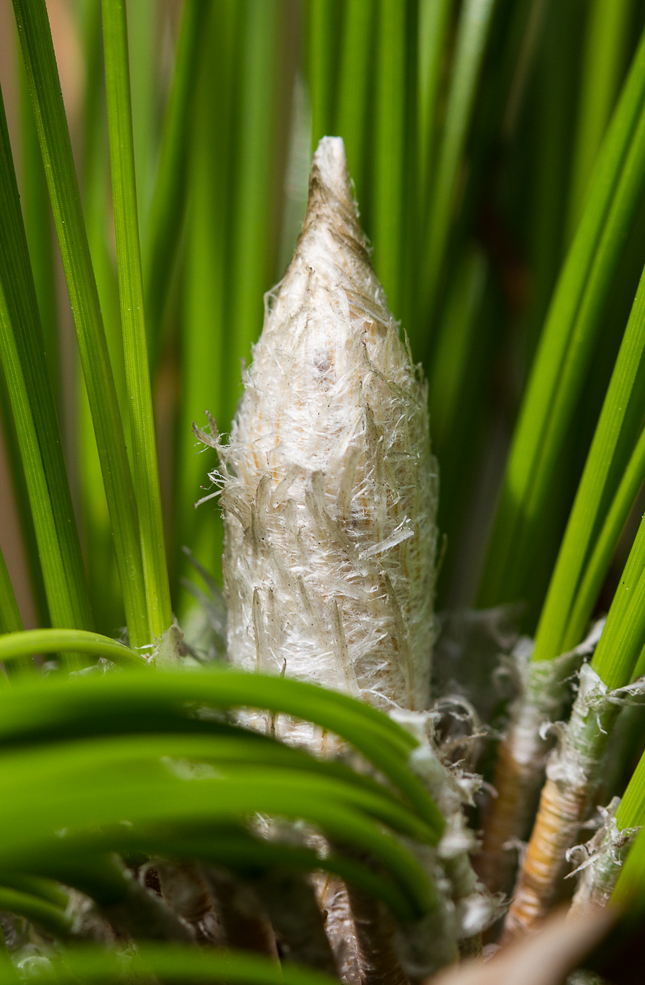
The growing tip or “candle” of a longleaf.
Its goal during this time is to get tall enough and develop thick enough bark to survive a fire. This is no time to worry about branches, so the young tree looks much more like a bottlebrush than anything else; this stage is often called the “bottlebrush stage.” Though an educator on a workshop once suggested that it should be named the “truffula stage” after the crazy-looking multi-colored trees in Dr. Seuss’ “The Lorax.” During this phase, the young longleaf is most susceptible to fire.
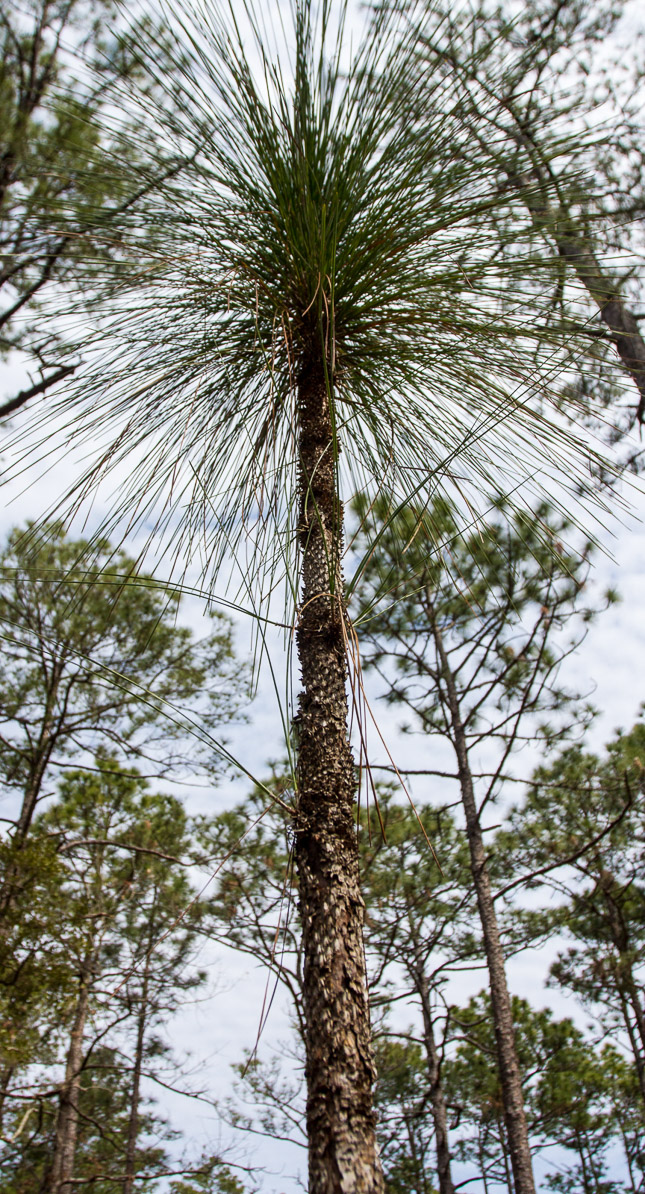
Bottlebrush longleaf striving to grow as tall as its neighbors.
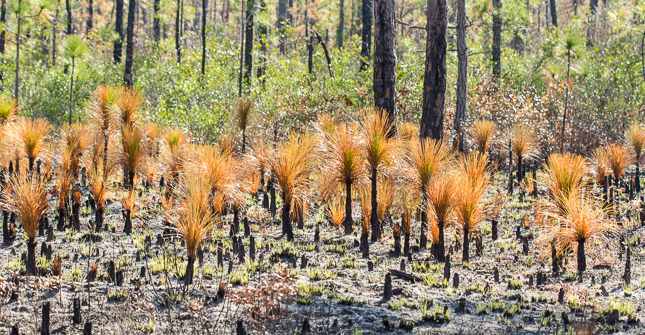
A group of young longleaf burned in a recent fire. Many still have green needles visible in the center.
But a tree can’t just grow up, and eventually the longleaf begins to grow out as well. The graceful side branches reach out horizontally and then turn up toward the sky. The “candelabra” stage is well-named! Longleaf tend to grow their 8-18″-long needles in clusters near the ends of branches, adding to the visual appeal of the tree.
At about 25 to 30 years, longleaf reach maturity and start producing cones. Though the species is fire-adapted, it does not have serotinous cones — cones that open only in the heat of fire. A neighbor to the longleaf, the pond pine, which commonly grows in boggy pocosins adjacent to longleaf savanna, does have serotinous cones. My coworker Megan decided we needed to observe this phenomenon for ourselves; so, armed with a lighter and a closed pond pine cone, we did! With the heat from the lighter, the scales of the cone opened with an audible pop, kind of like the popping of popcorn. Inside each scale were two winged seeds, as with other pines. Pond pines also grow best after fire, so their serontinous cones are a great adaptation to promote growth when the conditions are right. Longleaf pines don’t use that strategy even though they depend on similar conditions for germination. But their cones are equally impressive. The largest pine cones in North Carolina, they can be up to about 12″ long!
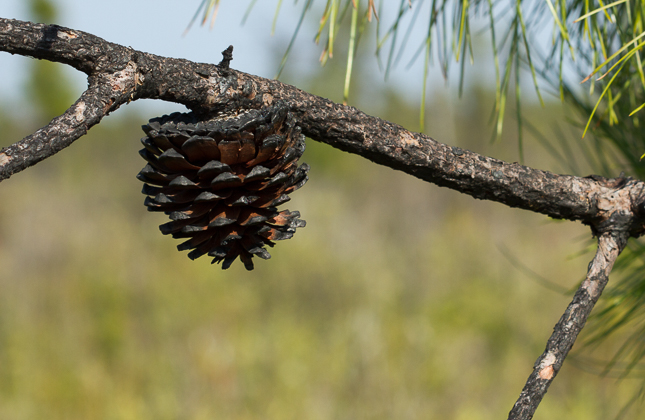
Pond pine cone, opened after a fire.
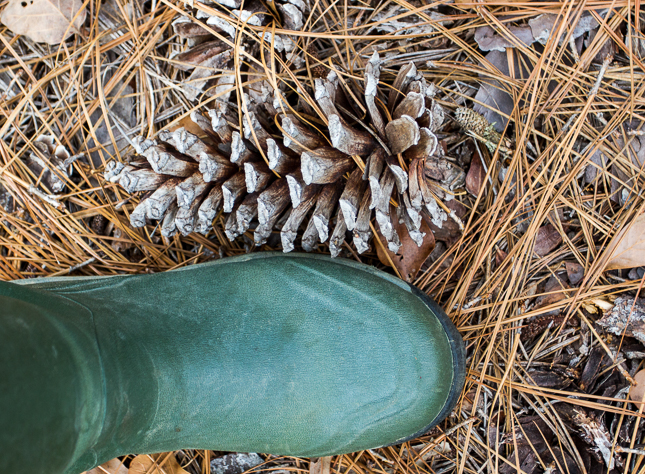
Longleaf cone with my size 9 (men’s 7) rubber boot for scale.
The oldest documented longleaf in North Carolina is located in Weymouth Woods State Park and is more than 465 years old! Though perhaps at one time there were many such old monarchs of the forest, that’s rare now. But mature longleaf play a very important role in the ecosystem, particularly for red-cockaded woodpeckers (RCWs for short). As longleaf age, they become more susceptible to red heart fungus, which softens the dense heartwood of the tree. Red-cockaded woodpeckers are our only species of woodpecker that seek out live trees for nesting, and they prefer mature longleaf pine that are infected with red heart fungus. This is because they hollow out nest cavities in the living trees, and the softening due to red heart makes that easier. They also peck holes in the tree surrounding their cavity that draw out the tree’s sticky resin. This acts as a defense against a common predator: rat snakes. If you’re visiting a longleaf forest and spot trees painted with white rings, look up for the cavity! Biologists studying RCWs mark their nest trees in this way to make them more visible.
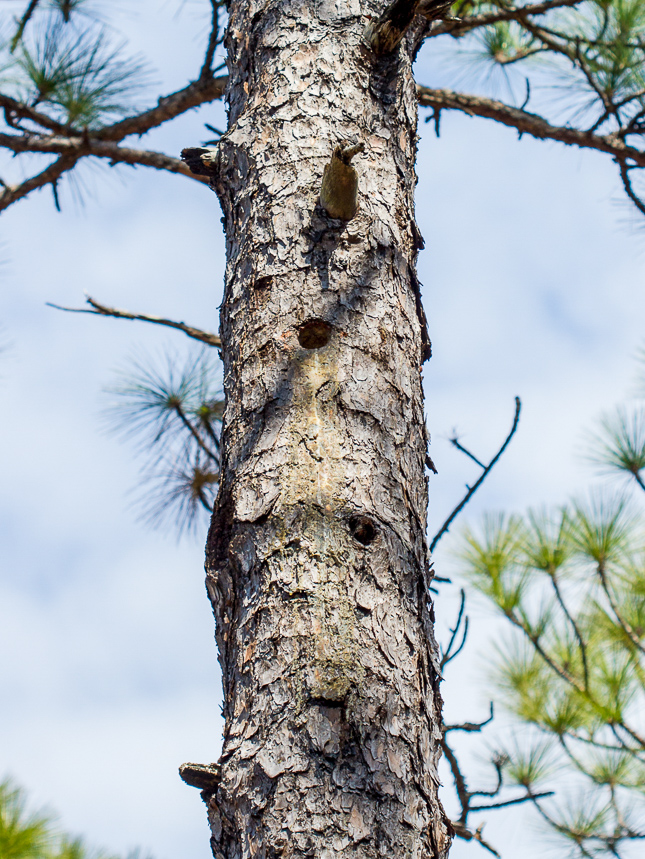
Red-cockaded Woodpecker cavity – this one doesn’t yet have extensive resin wells drilled around it. Often, the tree with be entirely coated with resin around the hole.
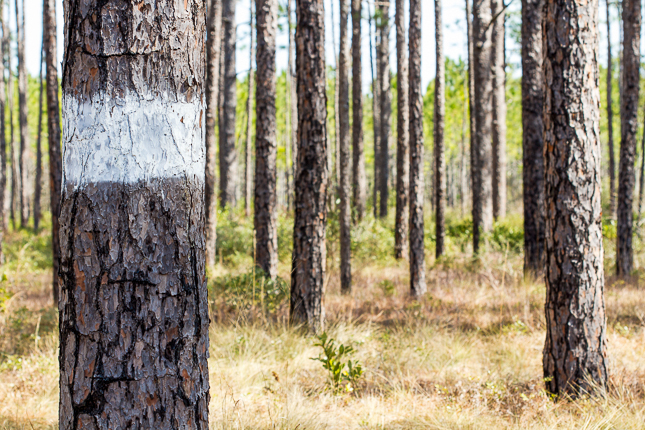
The distinctive white band of a Red-cockaded Woodpecker cavity tree. I like to joke about the endangered woodpeckers who fly around with a paintbrush in their little feet to mark their homes so they can find them again later….
The longleaf pine savanna is an amazingly diverse habitat, and the longleaf pine is well-adapted to live there. If you have the chance to visit, see if you can spot each stage of its life — grass, bottlebrush, candelabra, and mature tree!
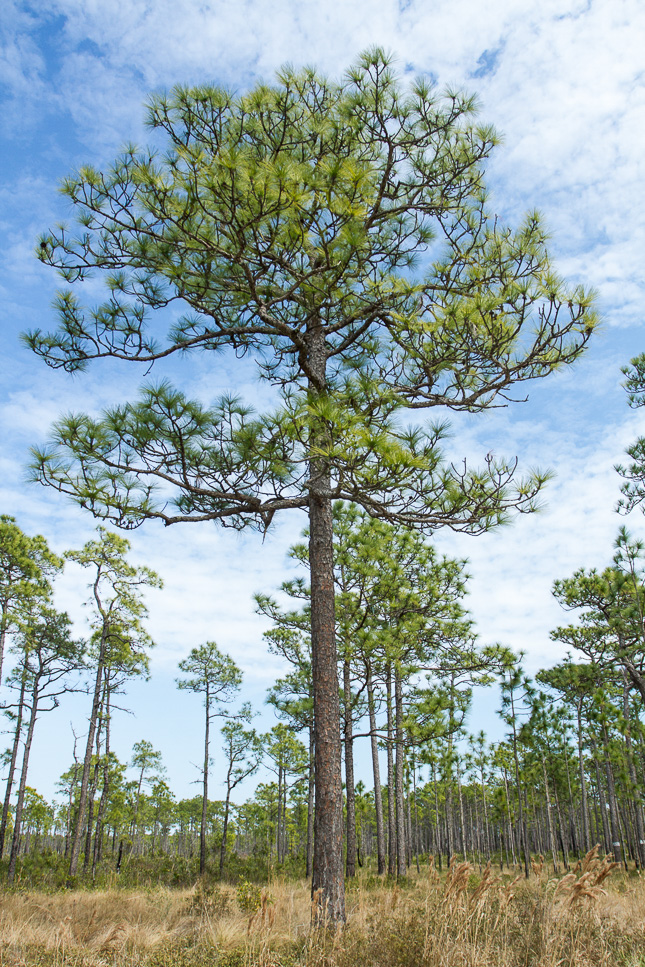
Graceful, mature longleaf.
I share my yard with as much of our native wildlife as I can! I have several lizard species that call my home in Johnston County, home too! Of course, it was their home originally, and they have adapted to my intrusion. Since moving here in 2004, I have seen lizards routinely around my house and occasionally even inside. They have adapted to using the siding, decking and foundation of my house for their home. Most houses have crevices and other openings that lizards will take full advantage of for shelter when they’re not out foraging for food.
 A young Five-lined Skink.
A young Five-lined Skink.
North Carolina has 12 native species of lizards. I have observed five of these species in and around my yard. The Green Anole routinely patrols my deck defending his territory. Six-lined Racerunners patrol my driveway during the day searching for prey like little dragons. The diminutive Ground Skink scampers along in the grass next to my brick foundation. All are welcome residents and I try my best to accommodate them.
The most abundant lizards in my yard are the Five-lined and the Southeastern Five-lined Skinks. They are actually very similar in appearance and you usually need to have them in hand to look at scale characteristics to confirm their identity. I don’t pick up lizards by hand unless I have an important reason to do so! The tails of most of our lizards are designed to break off easily when a predator is trying to eat them. The tail keeps wriggling while the lizard hopefully gets away from the distracted predator. The lizard will eventually grow a new tail, but it’s a riskier life until that safety feature grows back.
I see skinks all around my house and even inside the garage. The pedestrian door is kept open to give our dogs easier access to the fenced in backyard. I keep an inner gate propped open with a concrete building block. I move it occasionally to mow the weeds behind the gate. That was what I was doing on May 25, when I found a scaly surprise under the block—an adult female Five-lined Skink.

 Female Five-lined Skink under block on May 25.
Female Five-lined Skink under block on May 25.
She had excavated a nest area under the block. I quickly returned the block after photographing her and skipped mowing behind the gate. Not wanting to unduly disturb her, I waited a couple of weeks before checking on her again. She was still there for my next check on June 10, but now guarding a whole bunch of eggs! I again photographed her and immediately returned her cover. From the photo, I counted 15 eggs! Wow, that’s a lot of eggs for one female skink. The state record for eggs in a single clutch for this species is 17 eggs, so she was close.
 15 eggs in nest on June 10.
15 eggs in nest on June 10.
I checked on her a couple of more times waiting at least a week between checks. The female stays with the eggs until they hatch. Her presence may deter would-be predators and may even help maintain the proper environment for egg development. The eggs get rolled around with her movements, perhaps preventing establishment of fungi on the shell surfaces. During my check on July 6, she was still on guard duty with her eggs.
 Hatching Five-lined Skinks from firewood nest in 2014.
Hatching Five-lined Skinks from firewood nest in 2014.
I accidentally disturbed a nest a few years ago when I moved a rotten firewood stack. I unknowingly destroyed the nest and didn’t think that I could recreate one that the female skink would return to. I continued incubation of those eggs in a jar of rotten wood medium until they hatched. This was a smaller clutch of only five eggs, but they all hatched! I released them in the woods behind my yard to begin their life journeys. It is even possible that the female skink under the concrete block was one of those hatchlings.
 Empty nest on July 11.
Empty nest on July 11.
I made my next check on July 11, and the nest was empty! Mama skink and all the young were gone. Only the empty eggshells remained in the nest cavity. The young are all on their own after hatching and must find their own food while avoiding being eaten themselves. That’s where their bright blue tails come in handy should a predator try to eat them. I now see the youngsters occasionally along my brick foundation. They are all welcome new residents to my yard and I wish them a long lizard life!
By Jerry Reynolds, Head of Outreach
Although the northern pine snake (Pituophis m. melanoleucus) is among our largest and most impressive snakes, comparatively few North Carolinians have ever seen one. State-listed as Threatened, pine snakes occur primarily in our Sandhills region. A small population also occurs in Brunswick and (at least historically) New Hanover counties, and there are a few records from Cherokee and Swain counties in the southwestern Mountains. Powerful, diurnal constrictors, pine snakes feed mostly on mammals and birds. For such large snakes, they are surprisingly secretive, spending much time underground.

PM25’s newly completed nest this year (July 3, 2020).
Nesting is a major undertaking for pine snakes. Most of our 19 other egg-laying species just deposit their eggs in decaying vegetation, inside rotten logs or stumps, or beneath sheltering objects, but pine snakes put considerably more effort into the process. A female pine snake excavates, using her only tools—her pointed nose, tipped with its large, heavy rostral scute, and her muscular body—a tunnel between two and five feet long, ending in a chamber large enough to contain her body and her egg clutch. Pine snake eggs are larger than those of any other North Carolina snake (about chicken egg size), and their small clutches (4-12; usually about 7-8) represent a huge investment. A nest may take days to complete, the snake dragging out sand bit by bit and resting periodically. The whole process can take up to a week. The female may rest in the nest chamber for a day or two after laying her eggs, but then abandons them.

My female PM11, caught in the act of digging (June 26, 2020).
A disjunct northern pine snake population in the New Jersey Pine Barrens has been well-studied over the years, but outside that region, the species’ ecology and reproductive biology are less well known. Most nests reported from North Carolina are ones I’ve found by following radio-telemetered females. The several I’ve monitored over the years have had a high hatch success rate (>95%). So, whenever I have a telemetered female out, I always feel excited and fortunate to find her nest and monitor it over the summer. In September I begin checking the nest frequently, hoping to see shed natal skins, which would indicate that hatching has occurred.
Upon finding these (usually in late September or early October—later if I don’t find them), I’ll carefully dig up the nest and collect and preserve the eggshells, documenting the total number hatched vs. unhatched, and record depth and dimensions of the nest chamber. This is good information that’s hard to come by. So far, the nests I’ve found have been deeper, and in more shaded/canopied areas, than those documented in the Jersey Pine Barrens—perhaps because summers are hotter here. In the Barrens, pine snakes sometimes nest communally, and females may reuse old nest chambers from previous years.

Eggshells from PM25’s 2019 nest (all seven had hatched; eggshells excavated Oct. 9, 2019).
That hasn’t been documented yet in North Carolina, although I’ve known telemetered adults (one male, two females who had previously nested) to enter active nest chambers. Sometimes there are surprises—occasionally I’ve found hatchlings that had emerged, shed their natal skins, and then re-entered the nest. Once I was extremely fortunate to visit a nest just as the hatchlings were emerging—seven perfect babies were concealed beneath leaf litter immediately above the nest (when we excavated it a few days later, eight hatched eggshells were found, so we missed one)! Other surprises are less pleasant, like the severe poison-oak rash you can get from digging up a nest with bare hands, breaking rootlets, and getting sap in cuts and scratches (if you think you don’t react to urushiol, try it sometime).

Four of eight hatchlings from my telemetered female PM19 (aka Maggie), found just-emerged (Oct. 3, 2018).
This year, the large female (PM25, aka Dark Lady) that I’ve been radio-tracking for over a year on Sandhills Game Lands in Scotland County, nested right on schedule; I was fortunate to locate her completed nest on 3 July, only about 130 feet from the spot where she nested last year (all seven of those eggs hatched) on almost exactly the same date. But equally exciting, and more unexpected, I was investigating her old nest site from last year (the following day, 4 July) and found what is almost certainly another nest, only a few meters from her 2019 nest and about 140 feet from her current one.
So, hopefully, I have two pine snake nests to check this fall. It’ll be like opening a couple of Christmas presents early.
By Jeffrey C. Beane, Collections Manager for Herpetology
“This plant, commonly called Venus’ fly-trap, from the rapidity and force of its movements, is one of the most wonderful in the world” and “is one of the most beautifully adapted plants in the vegetable kingdom.”
~Charles Darwin
I’ve never been a huge fan of pines. When I lived in Durham, my house was surrounded by huge loblollies, and the yard was ALWAYS covered in pine needles. But a trip to a longleaf pine savanna can change that perspective fairly quickly. Longleaf are so successful in their habitats that they form what at first seems to be almost a monoculture – longleaf, and only longleaf, growing rank upon rank as far as the eye can see. They are straight trunked with a waving crown – their lower branches drop off as the tree grows.
At first glance, longleaf pine forest may seem to be somewhat barren, but if you look a little closer at the dense ground cover, you’ll soon find that it is a surprisingly diverse ecosystem.

Stand of longleaf in Croatan National Forest; the tall golden grasses are wiregrass which has seeded after a fire
Some surveys of the ground cover in longleaf savannas have revealed more than 50 species of plants within one square meter. That is more diverse than a rainforest, at a small scale! And in North (and South) Carolina, we have some amazing species that live in that niche. Because of the nutrient poor soils found in longleaf habitats, plants need to have a good strategy for gathering the nutrients they need to thrive. Carnivorous plants have adapted some amazing ways to get nutrients from the ubiquitous insects that also live in this ecosystem. There are 5 primary groups of carnivorous plants in the savanna: sundews, butterworts, bladderworts, pitcher plants, and the most famous of all, the Venus fly trap.
When I saw my first fly trap, I must admit that I was a little disappointed. My high school put on “Little Shop of Horrors” when I was a student there, and Audrey was a pretty impressive, man-eating fly trap. In contrast, the traps of the real plants only get to be about 1 inch in diameter. But if you get down close to them and watch them in action, they are still impressive!
The traps are actually modified leaves. They have green or red centers each with 2-3 “trigger hairs” on the inside of the trap. The traps secrete sweet sap to lure their prey in and are rimmed with thin spines that will prevent escape. The spines look quite vicious, but are in fact more hair-like and won’t hurt you at all if you touch them. When an insect (or a pine needle yielded by a curious observer) touches two trigger hairs in quick succession, the leaf closes, trapping the insect. The repetition is important because the fly trap doesn’t want to be confused and close during every rainstorm!
I hadn’t “tickled” a fly trap in a while, so on a recent trip to the savanna, I decided to try it out. Though I’ve done this before, I had forgotten just how quickly the leaf can close! Within less than 1 second it was shut. Apparently, this is one of the most rapid movements in the plant kingdom. Fly traps will reopen after a false trigger like mine, but it may take as much as a day for them to do that. And, they will only close so many times before turning black and dying, so it’s important not to “tickle” fly traps too often. But we typically encourage groups of teachers to try it, as it is an unparalleled educational opportunity to observe this amazing plant species in action. I filmed this video of a flytrap closing on a teacher workshop visit to a longleaf savanna.
Venus fly traps only grow within about a 100-mile radius of Wilmington, NC. Like longleaf, they depend on fire to keep their growing areas clear of taller species that will shade them out. They thrive in ecotones (areas of transition from one plant community to another) at the border between longleaf savanna and pocosins (shrubby bogs of the coastal plain). Because they are so interesting, and so rare, poaching has become a problem for fly traps. About six years ago, North Carolina increased the stakes for fly trap poachers – it is now a felony in NC.

Venus Fly Trap
But fly traps aren’t the only show in town. Other types of carnivorous plants also thrive at the edges of the pine savanna, including pitcher plants, sundews, butterworts, and bladderworts. The insect-trapping strategy for each of these is different. Pitcher plants lure insects inside and then trap them in their tubular leaves which are slippery and lined with downward-pointing hairs. The insects can’t escape and the plant exudes digestive juices to claim its nutrients. Purple pitcher plants, Sarracenia purpurea, are a little different – they drown their prey in pools of water.

The open leaves of the purple pitcher plant fill with water and drown insects… but inside of this one there was a small mosquito larva swimming around! This species of mosquito has adapted to live in the water inside of purple pitcher plants.
But even a pitcher plant can’t eat everything that falls in. Frogs sometimes hide out in them, a few species of caterpillar feed on the inner surface of the pitcher, and there’s even a species of wasp that lays its eggs in the shelter of the pitcher.
Sundews look a bit like pin cushions that were left out overnight and have been coated by dew. The sweet-smelling droplets are both the lure for prey and the reason for its demise. It is entrapped in the sticky substance, and the leaf rolls up around it. The same sticky secretions also contain enzymes that digest the insect, providing the nutrients the plant is not getting from its environment.

Notice the vivid, red sundews and the sandy soil in which they’re growing.

We have 5 species of sundew in NC, 4 of which occur in eastern NC (the other prefers mountain bogs and a few sites in the Sandhills). I think this species is Drosera capillaris, but I’m not entirely sure without seeing a flower or seed.
Butterworts are a startling yellow-green color that stands out from the golds and browns of surrounding species in late winter/early spring. Their strategy for capturing prey is similar to sundews. They secrete a sticky substance on the surface of the leaf that lures, traps, ensnares, and digests small insects.

There are 3 species of butterwort reported in NC. According to maps of their ranges, I think this is Pinguicula caerulea.
The final group of carnivorous plants found in this type of habitat are bladderworts. Bladderworts are the most varied (species-wise) of our carnivorous plants – there are 14 or 15 species in NC! The bladderworts I have seen in the past are aquatic. Their underwater roots have bladders that suck prey in to be digested. Apparently, there are also terrestrial bladderworts that live in boggy peat soils or moist sand. I didn’t realize this before my trip, so I’ll have to search them out when I return!
Though fly traps have the most limited range of our carnivorous plants, each type is remarkable in its own way and well-worth seeking out in some of the remaining longleaf pine savannas. They’re easy to miss when not in flower, but if you scour the edges where pocosin meets savanna, you might be fortunate enough to find some!
As I walked down the stairs of my front porch, I noticed some strange squiggly lines on the handrail. The more I looked around, the more I saw the same kind of markings on other objects in my yard, even on the backboard of the basketball hoop!
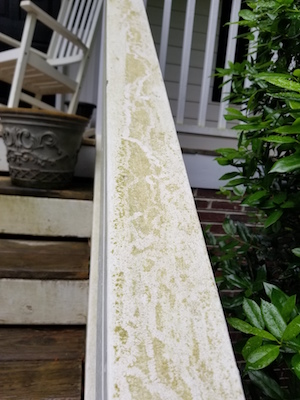
I wasn’t the only one who had noticed these mysterious trails. One of our volunteers had seen these exact same markings on the lid of her garbage can and shared a picture with us. We noticed that these trails were on moss, algae or mold-covered surfaces, and they all had very irregular patterns. Since these kind of trails are frequently found right in our backyard, I decided this needed investigating!
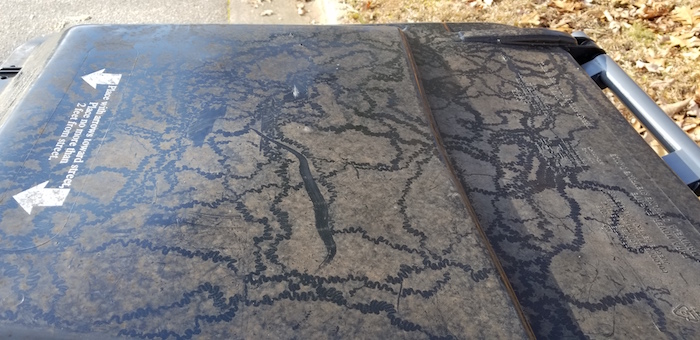
A close look showed repeating patterns, almost like a curved comb carved out by something sharp. After doing some research, I determined that the culprits might be snails or slugs having a feast during their nightly excursions in our backyard. These seemingly random markings were feeding trails created by a special mouth structure they have.
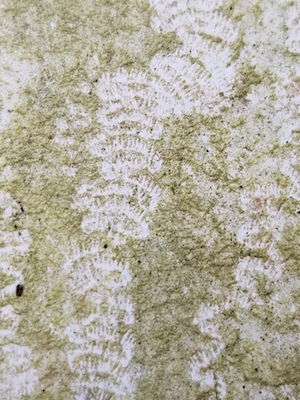
Snails and slugs are members of the phylum Mollusca and belong to the taxonomic class Gastropoda. They are the second-most abundant species on the planet and North Carolina has more than 200 species of native terrestrial gastropods as well as more than 30 introduced species of land snails or slugs.
Some snails and slugs are herbivorous (plant-eaters) and are a gardener’s worst nightmare. Others are carnivores (meat-eaters) or omnivores (eat both plants and meat). They can even consume bits of limestone or shells of other snails, using calcium as the key component to build their own shell. They glide over any type of surface in search for food by means of slimy mucus secreted by glands on the creature’s foot near its mouth.
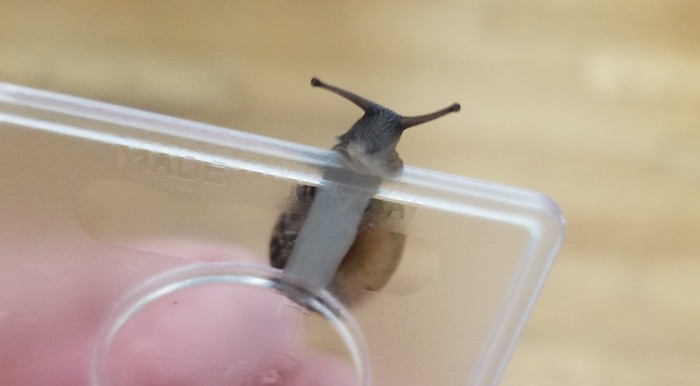
The mouth of a gastropod is located in the anterior (front) area of its foot and opens into a pocket-like buccal cavity (mouth). Those feeding trails mentioned above, are created by a special structure in the mouth-a scraping tongue known as radula (rad- joo-luh). It is similar to our tongue in the sense that it assists snails and slugs in eating their food. The difference is that it is made of chitin (a polymer or long chained molecule made of modified glucose molecules). It functions more like a combination of a chain on a chainsaw and a conveyer belt, moving
food back into its mouth. The radula consists of rows of microscopic tooth-like structures that are curved towards the back of its throat. Muscles move the radula back and forth over the food source, scraping littles pieces of food and transporting it to the back of the mouth into the digestive tract. The mucus secreted by a salivary gland located above the radula lubricates the microscopic little teeth and traps the food particles in sticky mucus that helps to move the food into the esophagus.
Over time, all this scraping action wears these microscopic little teeth down. This isn’t a problem though, since new teeth are rapidly formed in the back of the radular sac and are slowly brought forward to the tip of the radula. The radula itself continuously grows back over the course of the animal’s life, just like our fingernails.
Although the shape and the number of a snail’s and slug’s teeth are characteristic for a specific species, experts still rely on the shape of the shell, the number of whorls, the aperture (see below) on the bottom of the shell as well as the location of the apertural barriers or teeth to identify what species it is.
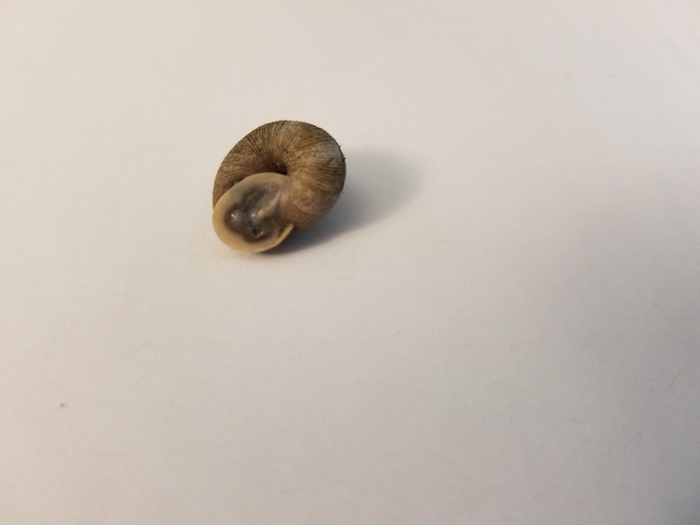
Regardless of what gardeners claim, most snails and slugs cause little damage and are considered beneficial to the ecosystem as they are food for birds, mammals, reptiles and insects. And because their shell is a rich source of calcium, an essential and sometimes limited element in nature, their shells are important to those animals that need it. They are also great indicators of pollution and are able to consume heavy metals such as copper, zinc and cadmium and store it in their tissue.
Some species of land snails are listed as endangered, threatened or special concern by the North Carolina Wildlife Resources Commission. Scientists study and collect data on these and other land snails to monitor their status in the wild. There is still a lot to learn about their place in the ecosystem and their importance in the natural world. Mesoamericans already had a natural appreciation for this group of animals and believed that the whirled shape of the snail’s shell represented the circle of life. This is why they considered the sea snail as the symbol of rebirth and joy.
By Nancy Locquet Absillis, Co-coordinator of Natural World Investigate Lab
For more information about our upcoming activities, conservation news and ground-breaking research, follow @NaturalSciences on Instagram, Twitter and Facebook. Join the conversation with #visitNCMNS.
The other day, I was on the phone and pacing in my driveway when I noticed an unusual creature scurrying across the pavement. When I looked closer, I realized I was looking at something I’d never seen before! Luckily, I had my phone and I quickly snapped a picture (below) to upload to iNaturalist… not only can I be a citizen scientist, I can get my discovery identified! At first, I thought it was an unusual species of millipede, but I learned that amazing animal was the female GLOWWORM!

Like fireflies, Glowworms are beetles. The species I found is in the Phengodes genus and the females are larviform, which means as adults they look mostly like the larvae. Since my glowworm was seen during the day, I didn’t get to observe her bioluminescence, but females and larvae glow continuously. They are a predatory animal, injecting toxin into their prey of millipedes, slugs, snails and other insects.
Glowworms were once thought to be closely related to fireflies, since they both glow, but a study in 2001 found they are not each other’s closest relatives. This study also found that bioluminescence evolved twice and was lost once in this lineage!
The glowworm’s life cycle starts, of course, with the female laying eggs. Even the eggs can be bioluminescent…but not at first. It can take up to a month for the eggs to become luminous. The eggs are laid on the ground and the female will wrap around them, perhaps until they hatch. The predatory larvae hatch and are fully bioluminescent, emitting a greenish-yellow glow. Pupation is next! The female pupae only take about 12 days to develop (remember, the females are larviform, so not much to develop!). The males, however, can take up to 35 days.
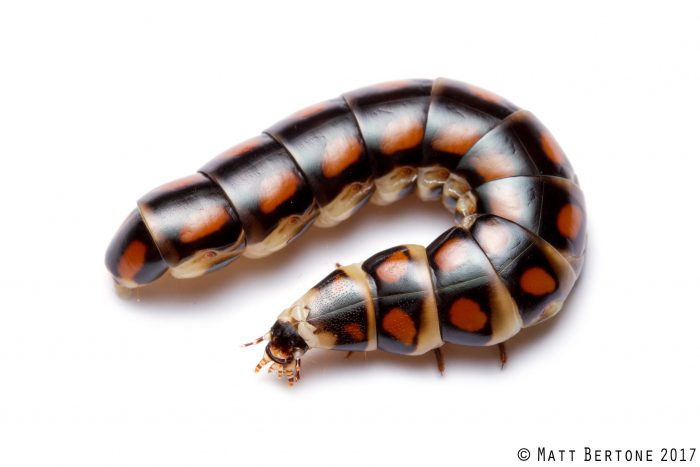 A female glowworm.
A female glowworm.
Glowworm beetle males are easy to identify due to their relatively soft bodies, their elytra (the hardened upper set of wings in beetles) much shorter than their abdomen, and their impressively huge antennae, clearly visible in the photo. These antennae serve an important purpose: helping the male find mates. Though poorly studied, it is thought that males use their antennae to find their flightless mates by following pheromones (chemical signals) the females emit rather than following their light. The males need huge antennae to sense and follow the faint pheromone trail given off by their soon-to-be mate. Unlike the larvae and females, glowworm males are thought to be non-feeding and short-lived as adults, readily attracted to lights at night, and glow very weakly, if at all.
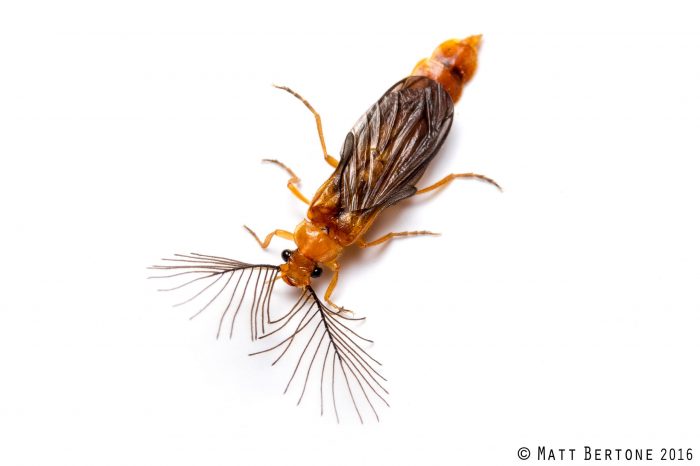 A male glowworm.
A male glowworm.
But why do they glow? Fireflies use their bioluminescence to find mates and warn nocturnal predators that they are full of nasty chemicals, but glowworm beetles are thought to use their glow only to advertise toxicity. Remaining constantly visible at night is a good way to get eaten – unless you will make any would-be predators sick! Then leaving your light on all the time to tell other animals where you are helps you avoid being eaten. The immature stages glow despite living mostly underground or buried in leaf litter, leading researchers to suspect they too are advertising their toxicity to any predators that encounter them.
They may not be common and might be poorly studied, but anyone who finds a glowworm of any stage will likely find it a memorable experience. With so many weird characteristics, they’re a welcome sight for many nature enthusiasts. Will you be lucky enough to see one?
By Chris Goforth, Head of Citizen Science, and Kari Wouk, Senior Manager of Educational Collaborations
For more information about our upcoming activities, conservation news and ground-breaking research, follow @NaturalSciences on Instagram, Twitter and Facebook. Join the conversation with #visitNCMNS.
I’m not a geologist but I don’t take for granted how important geology is to life on Earth. Present day North Carolina is the result of a long history of geologic events involving erupting volcanoes, continental collisions and sedimentation along with lots of weathering and erosion! The diversity of life in natural areas is the result of the interactions of geology, climate and living organisms.
Eastern Wake County and much of Franklin County is very much influenced by the presence of one huge mass of granite. This large body of granite even has a name — the Rolesville batholith! It is about 50 miles long, up to 15 miles wide and who knows how deep! Even my house in western Johnston County is over the southeastern edge of this granite body. I know this by reviewing maps produced by the North Carolina Geologic Survey in addition to seeing granite peeking out in my neighbors’ yards. Large granite boulders are also visible in scattered locations in nearby woods.
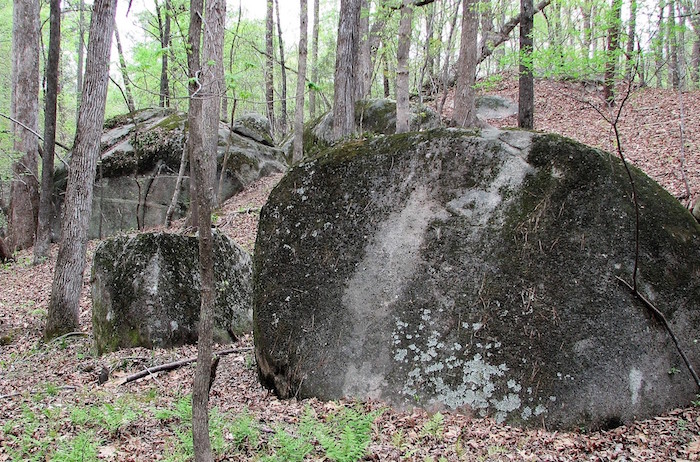
Boulders in Johnston County woods
Granite is an igneous rock type which means that it formed from the cooling of magma (molten rock). It is primarily composed of quartz, feldspar and mica. The Rolesville granite formed along with other granite bodies in the southern Appalachian region around 300 million years ago. The magma was created from the very slow but tremendous collision of the continental plates that pushed up the Appalachian Mountains. The magma cooled underground and probably never reached the surface at the time. Weathering and erosion of the overlying rock eventually exposed this granite body. Granite itself weathers too, eventually leaving only clay and quartz sand.
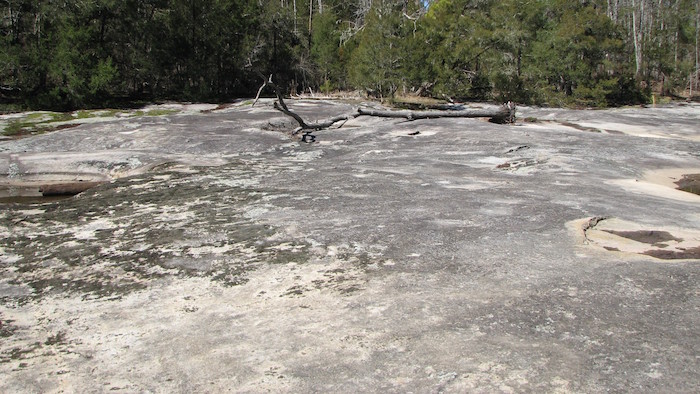
Mitchell Mill State Natural Area
The areas where large granite bodies are exposed are known as granite domes or granite flatrocks. Stone Mountain is one of the more well-known granite domes in the lower elevation mountains. Granite flatrocks are lesser known and occur as relatively flat exposures of granite in scattered localities in the piedmont area of North Carolina. Most are very small, up to a few acres of exposed granite, but Mitchell Mill State Natural Area has almost 20 acres of exposed granite. I first visited this area as a college student in the ‘70s. This was a regular field trip for biology classes to study the ecological process of primary succession, the orderly sequence of fungal and plant life colonizing an area where none occurred before. The colonization of bare rock first by lichens and mosses, then more advanced vascular plants and eventually woody plants is a textbook example of primary succession.

Lichens and mosses are the first to grow on the bare granite
The process can lead to a mature plant community above the rock surface but can get reset to “zero” by wind or water events that strip the plants off the bare rock. At Mitchell Mill State Natural Area, the Little River does this periodically with flooding events during times of heavy rainfall. Granite flatrocks and domes have been around long enough that some plants have adapted to only live on these harsh environments. With names like elf orpine and Appalachian sandwort, some of these plants are only found on these granite exposures. Their rarity is because of the rarity of such granite exposures.
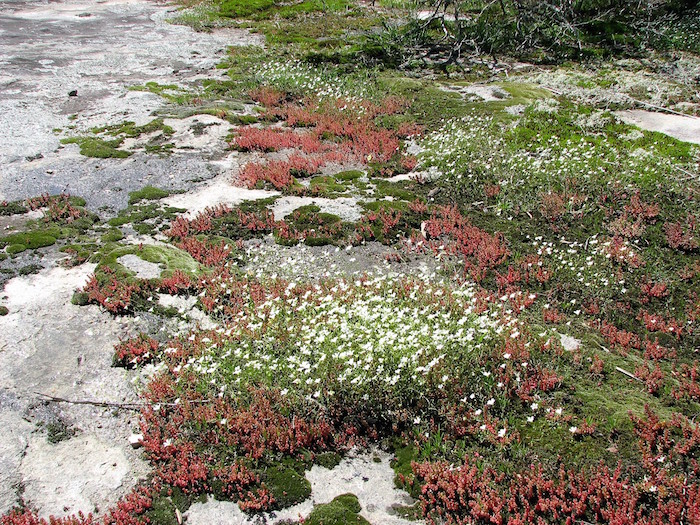
Elf Orpine and Appalachian Sandwort (white bloom)
Perhaps the easiest place to see exposures of granite flatrock is at the Main Street Park in Rolesville. If you hike the trails you will come across several exposures of granite hinting at the massive granite body underneath the town and surrounding countryside.
If you are curious about the geology and type of rock where you live, check out the geologic map of North Carolina available from the North Carolina Geological Survey. You will see an array of colors reflecting the rich geological diversity of our state. Don’t take geology for granite, unless it is!
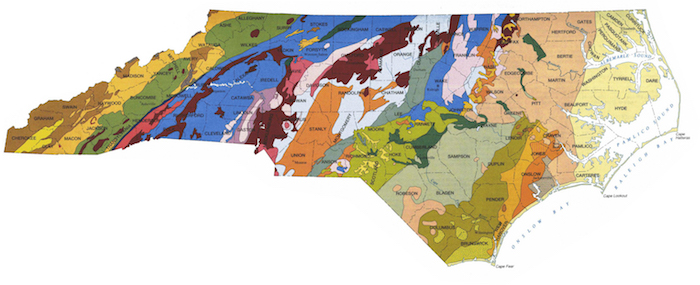 Generalized Geologic Map of North Carolina; pink blob covering eastern Wake and most of Franklin Counties is the Rolesville batholith
Generalized Geologic Map of North Carolina; pink blob covering eastern Wake and most of Franklin Counties is the Rolesville batholith
By Jerry Reynolds, Head of Outreach
For more information about our upcoming activities, conservation news and ground-breaking research, follow @NaturalSciences on Instagram, Twitter and Facebook. Join the conversation with #visitNCMNS.
Yes, you read that right! One of our most popular trees is not a poplar tree, although that is a popular name for one that is not a poplar!
Liriodendron tulipifera is commonly called a tulip poplar, yellow poplar or tulip tree among other names. Tulip tree would be a more correct common name as this species is in the magnolia family and is not a poplar! We do have poplar trees in North Carolina such as the Eastern cottonwood, Populus deltoides, but they are not as well-known or popular as the tulip tree. All this fuss about a tree’s name is just a humorous distraction from this grand tree!
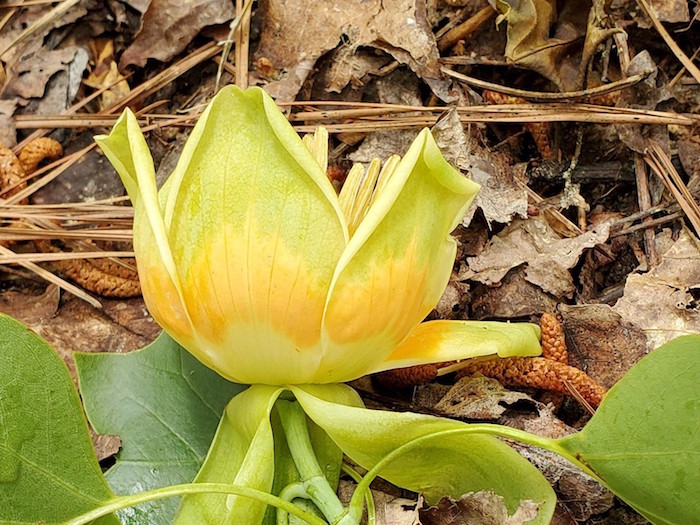
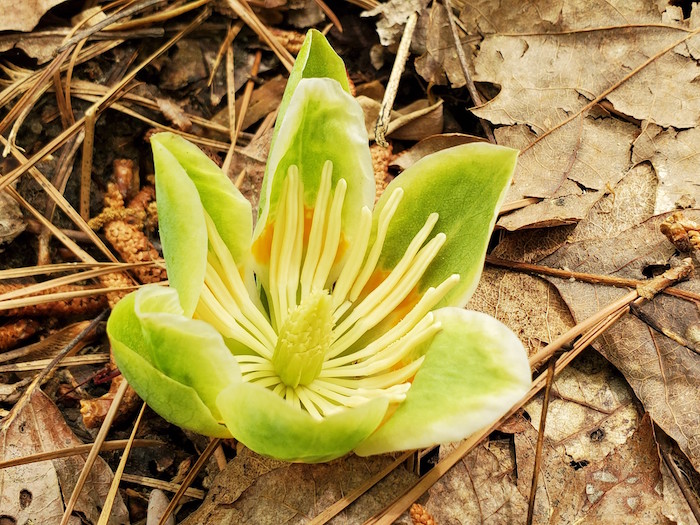
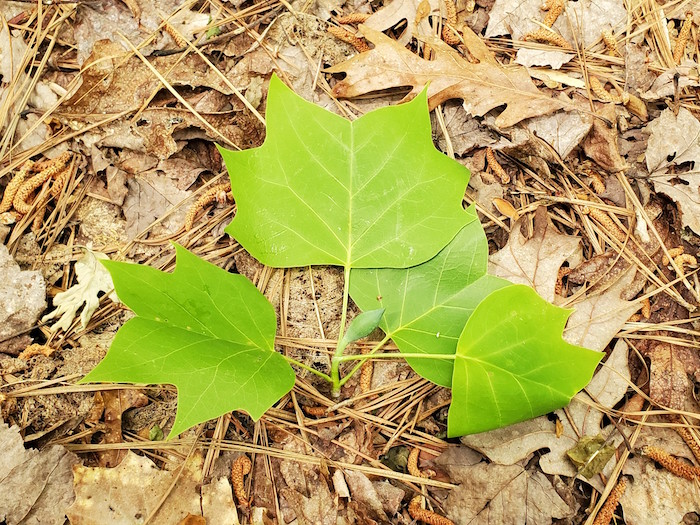
The tulip tree is relatively easy to recognize. With some practice you can learn to identify this tree by its bark, but it is far easier to identify by its leaf and flower. The flowers are large, beautiful tulip-like flowers. Even the leaves look like cross-sections of tulip flowers. You usually can find these without risking getting a crick in your neck from looking up. The large flowers often litter the forest floor as they break off during our spring rain storms. Decorate the forest floor is probably a better way to say it, as their colorful flowers provide welcome relief from the brown carpet of dead leaves. The flowers are loaded with nectar, which attracts many insect pollinators. The tulip tree is a popular host plant for some moth species and is the sole host for the tulip tree silkmoth, Callosamia angulifera. The tree is also a very prolific seed producer providing food for many birds and mammals.
 Tulip tree silk moth. Photo: Mike Dunn.
Tulip tree silk moth. Photo: Mike Dunn.
The tulip tree is widely distributed throughout eastern North America and can be found in most mixed hardwood forests in North Carolina. If you have a hardwood forest near you, then you probably have tulip trees near you too. I see them every time I look out my kitchen window. They seem to be especially common along stream bottoms, where they usually stand out as the largest trees in the forest.
Did I mention that these trees get large? If you see a very large tree on a stream slope or bottom, then it probably is a tulip tree. These fast growers commonly reach heights of 100 feet and diameters of 3-4 feet. A great place to see some very large tulip trees with six-foot diameters is Joyce Kilmer Memorial Forest just west of Robbinsville, North Carolina. This rich mountain cove forest was spared the lumberman’s axe and a short loop trail will give you an idea of the grandeur of our original forests. Tulip trees have been known to reach almost 200 feet high with diameters of 8 to 10 feet! The tallest known tulip tree now is one in the Smoky Mountains of North Carolina with a measured height of 191.9 feet. There are scattered large trees that have survived even in urban areas such as Raleigh. The National Champion Tulip Tree is in Chesapeake, Virginia, with a diameter over 10 feet! This huge tree is hollow but still very much alive.
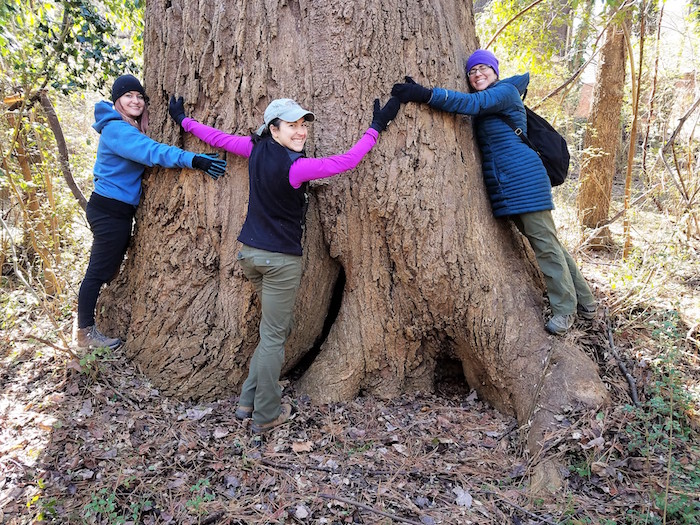
Please go explore some woods near you and see if you can find the tulip tree. If you go out now, you may find some of their flowers at your feet ready for some adoring appreciation. If you find a particularly large tree, please go give it a “big tree hug”! That is a popular thing for big-tree lovers to do!
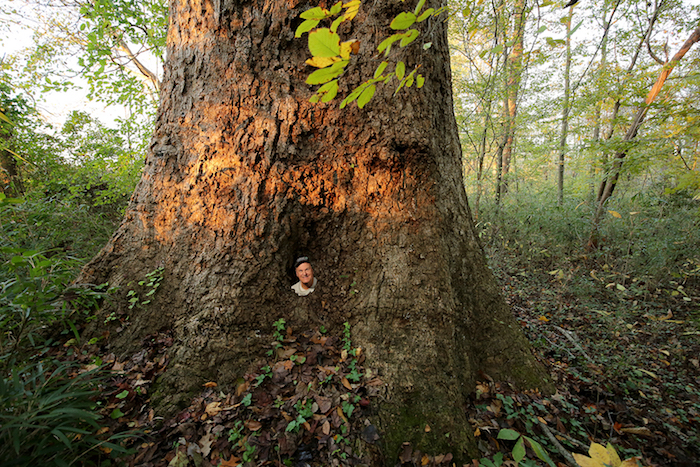 Co-nominator Gary Williamson inside the National Champion Tulip Tree in Chesapeake, Virginia. Photo: Todd Pusser.
Co-nominator Gary Williamson inside the National Champion Tulip Tree in Chesapeake, Virginia. Photo: Todd Pusser.
By Jerry Reynolds, Head of Outreach
For more information about our upcoming activities, conservation news and ground-breaking research, follow @NaturalSciences on Instagram, Twitter and Facebook. Join the conversation with #visitNCMNS.
It was a nice April afternoon to be outside exploring the woods behind my house. I was enjoying some wildflowers when my eye caught the pattern of something partially hidden by leaves and fallen tree branches — a box turtle! I’m always happy to see my first box turtle of the year!
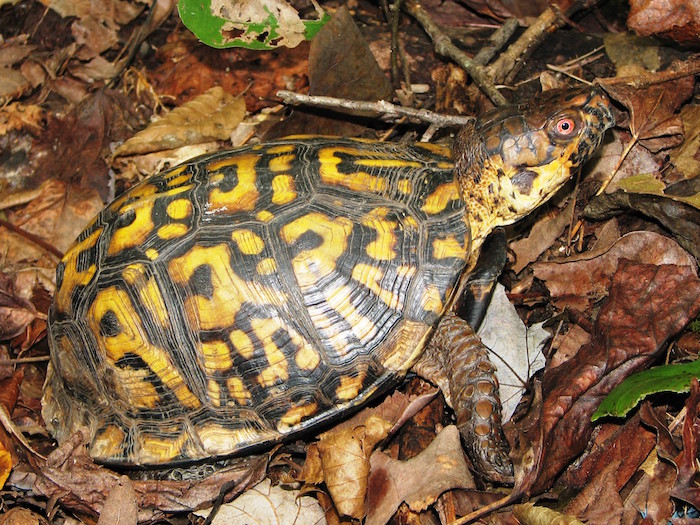
The Eastern Box Turtle, Terrapene carolina carolina, is found in most of eastern North America. They can be found in all parts of North Carolina, from the mountains to the coast. Although it taxonomically belongs to a group of aquatic freshwater turtles, the box turtle has a terrestrial lifestyle. It’s not afraid of the water and can certainly swim, though more clumsily than its aquatic relatives. But it’s much more at home in the forests across the state.
The high dome shell and stubby legs are an adaptation to living on land giving the box turtle a tortoise-like appearance. The flat bottom part of the shell consists of two parts connected by a hinge. That allows the box turtle to completely pull its body into the shell and close it “tight as a box.” This is an important adaptation for living on land since it can’t escape predators by diving into water or swimming away. A healthy adult box turtle can close its shell so tight that it is usually an adequate defense even against the dexterity of a raccoon that would love to pry the shell open for a meal.
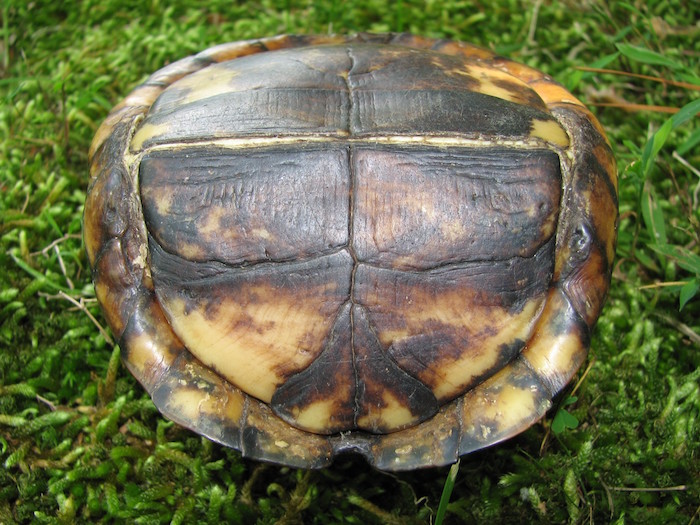
The Eastern Box Turtle was designated as the official state reptile in 1979. This was a good choice since it occurs statewide and is widely recognized by most people in North Carolina. Box turtles can live to be 50 years or more in age, with some documented over 100 years old! Though they can live a long time, biologists are concerned that their population numbers are going down, as we lose or fragment their natural habitats.
I recognize that I am part of the problem. The housing development where I live in Johnston County was originally forest. I can look back in time on Google Earth and see that it was forested until cleared for development in the ‘90s. Some forest fragments were left in the subdivision along with adjoining intact forest areas. Box turtles still live here in their greatly modified home territory. I began systematically documenting the box turtles that I find in my neighborhood in 2008.
I photograph, measure and weigh every turtle that I find. I use the photographs of their shell patterns to identify the individuals. Their patterns are like fingerprints — no two patterns are identical. Thus far I have documented 33 individual box turtles in an area approximately 10 acres, including my part of the subdivision and adjacent forest. They generally are well hidden in the forest. It is mostly luck spotting turtles such as this year’s first one in April. This wasn’t the first time that I had seen this turtle.
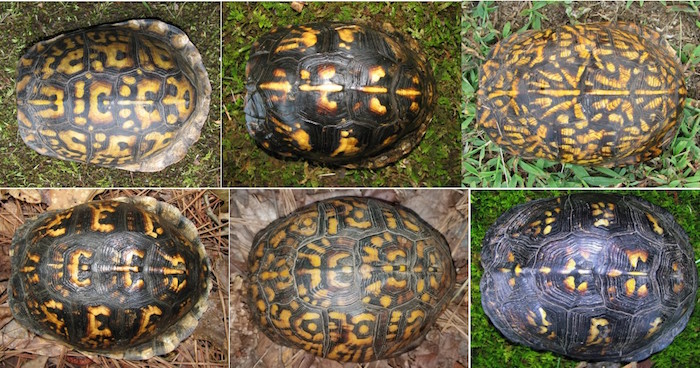
I first saw this box turtle in August of 2015. It’s an adult male, though small for an adult, measuring 4.5 inches and weighing 325 grams. I saw him again in August 2019 and now April of this year. The furthest two sightings of this turtle are only 300 feet apart. Box turtles usually have a small home range of just a few acres and live their whole life in such a small area. My hope is that we can coexist with these turtles in the neighborhood.
If you live in an area with box turtles, you can also document your turtles by participating in the museum’s Neighborhood Box Turtle Watch iNaturalist project. You can find this and other citizen science projects on the Citizen Science section of our website, https://naturalsciences.org/research-collections/citizen-science.
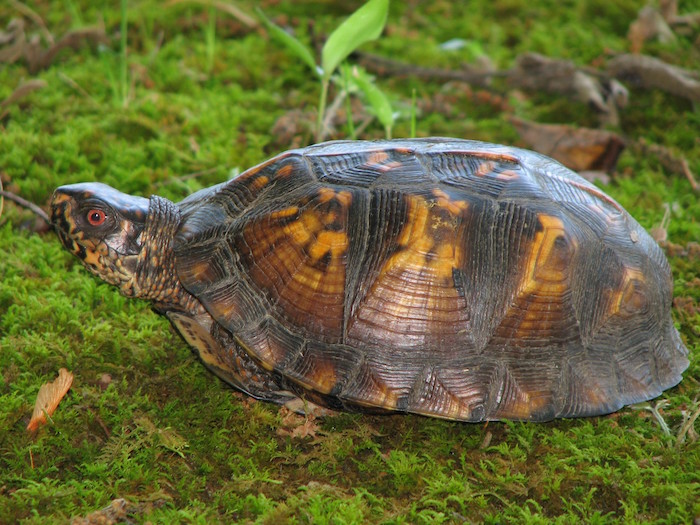
I always worry about “my” box turtles in the neighborhood and the dangers they face, natural and man-made. But I am happy that they are still living wild, as they should. I hope that you enjoy being outside and that you will help make sure that our outside always includes box turtles and all the other wildlife that we share Earth with.
By Jerry Reynolds, Head of Outreach
For more information about our upcoming activities, conservation news and ground-breaking research, follow @NaturalSciences on Instagram, Twitter and Facebook. Join the conversation with #visitNCMNS.
I met my first pink lady’s slipper in the spring of 1977 in eastern North Carolina. For most of my youth, I didn’t give plants a second look. They were in the background of the forests and swamps that I searched for my favorite critters—reptiles and amphibians. I was a college student on this sunny day in May and home for the weekend. I was exploring some pine woods looking for herps (reptiles and amphibians) with my recently purchased Olympus OM-1 SLR camera loaded with Kodachrome 64 film.
As I made my way through the woods scanning the pine needle floor for any herps about, my eye caught the bright pink color of something ahead. Although I had never seen one before, I knew what it was — a pink lady’s slipper! The flowers are very distinctive, and I had previously seen their photos in books.
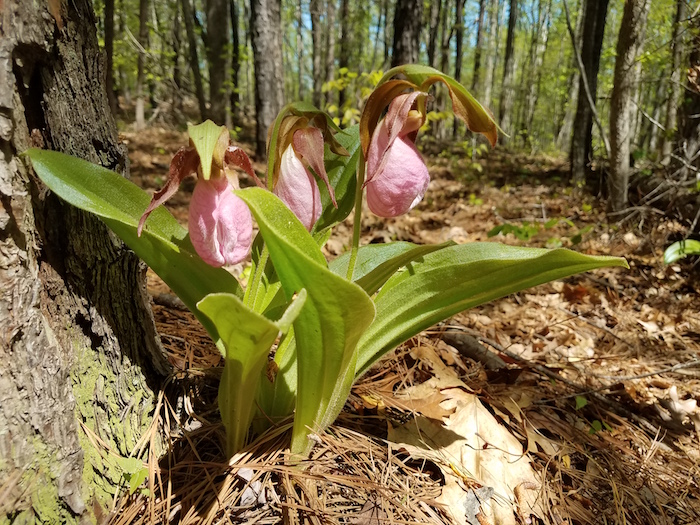
Pink lady’s slipper, Cypripedium acaule
Wow! Photos didn’t do them justice! It was an absolutely gorgeous pink flower set against the brown background of pine needles. And it was a whole “ballroom” of pink lady’s slippers! Several dozen were scattered in the area — some “wallflowers” by themselves, others in pairs or small groups of three to six scattered on the “ballroom floor” in a beautiful dance of color.
Pink lady’s slipper, Cypripedium acaule, is one of many native orchid species in North Carolina. Their distribution includes much of the northeastern United States extending up into Canada. They also follow the Appalachian Mountains southward into Alabama and Georgia. In North Carolina they are found in the mountain and in portions of the Piedmont and Coastal Plain. Not rare, but uncommon enough to delight almost everyone who finds one in the wild. They need acidic soils to thrive, doing best at soil pH’s of 5 or less. They are often found under pines or other conifers whose decaying needles contribute to the acidity of the soil.
I discovered a population of pink lady’s slippers a few years ago near where I now live. This has given me the opportunity to watch the individuals in this population go through their annual life cycle. I enjoy seeing when the first new leaf bundles emerge from the ground and then send their graceful flowers up for all to see. The developing flower is at first a very light greenish color, before it slowly blushes to a beautiful shade of pink. Some must have more to blush about than others as they end up with different shades of pink!
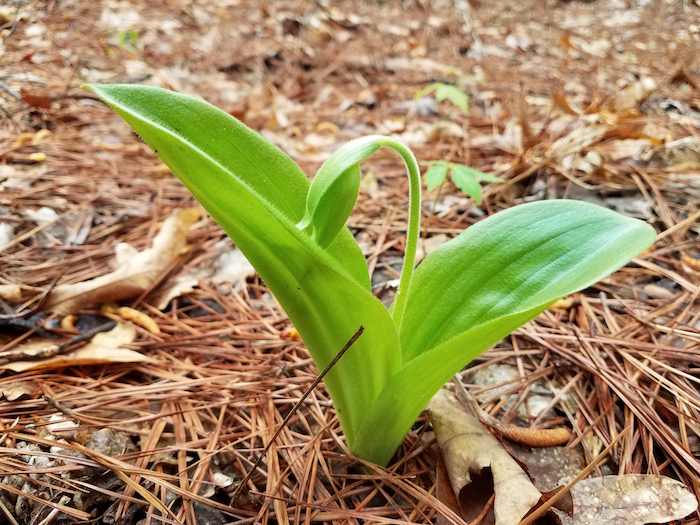
Spring emergence of pink lady’s slippers.
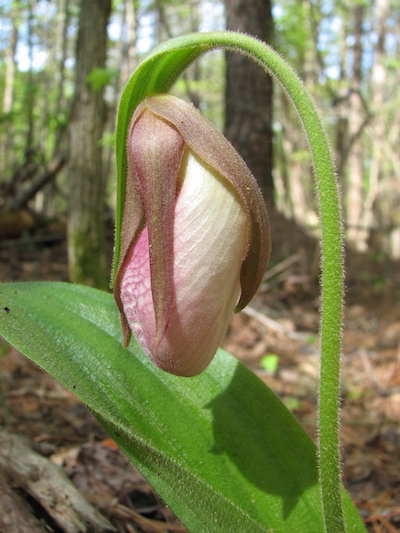
Young developing flowers transition from a light green to pink as they mature.
Pink lady’s slippers are perennials, which means that the plant sprouts from the same root on an annual cycle. It’s the same plant, with new leaves and flowers each year. They flower from April through May, depending on location. The leaves and flowers of the pink lady’s slippers “die” after their spring emergence, withering away to nothing. If successfully pollinated, they will leave a seed capsule at the tip of the original flower stem loaded with seeds ready for dispersal. The plant spends the winter underground in root form until the next year.
Some individual plants sprout from the root earlier than others. Some will be in full flower while others are just breaking through the leaf litter. Perhaps this spreads out the time when flowers are available to pollinators.
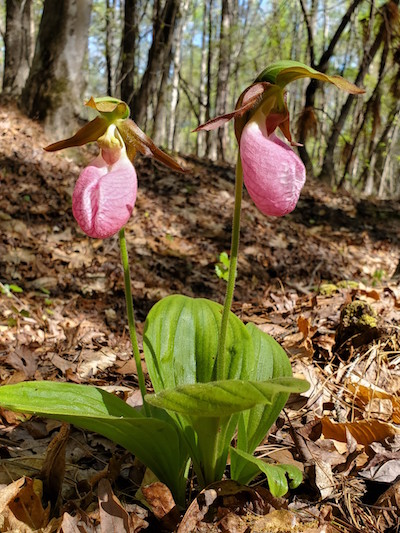
Bees are the main pollinators for pink lady’s slippers.
Bees, particularly bumble bees, are the main pollinators of pink lady’s slippers. The flower appears to be designed for such large bees. The bee is attracted to the bright pink flower thinking thoughts of sweet nectar. There is a slit-like opening in the front of the highly modified flower petal, perfect for a bee to crawl through after landing on the flower. Once inside the large pouch-like chamber, the bee finds no nectar and is trapped! It must work its way up to exit a small opening at the top of the flower. This exit is tight for the bee and causes the bee to rub against a pollen laden structure. The now pollen bearing bee will fly to another flower hoping for a nectar reward again. Finding no reward, again, it works its way up and out of the flower. This time some pollen from the previous flower may rub off on the stigma part of this flower thus pollinating it. The bee may pick more pollen from the second flower to carry to the next one, if it hasn’t learned the lesson that these flowers have no nectar.

Highly modified petal has a front slit for bees to enter.
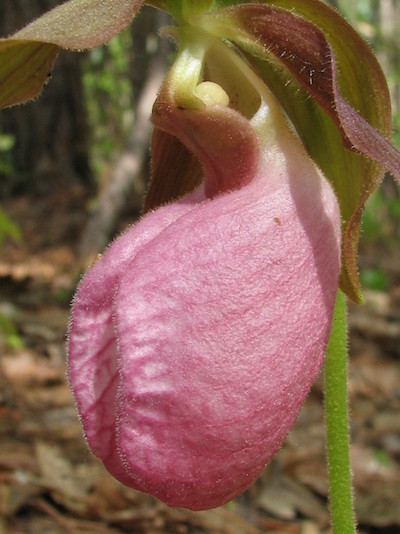
Bees find that their best exit is an opening at the top of the flower.
Inexperienced bees are probably the main pollinators for pink lady’s slippers! Once they learn there is no nectar in this type of flower, they probably don’t bother to try again. I don’t know how many times it takes the bee to learn this, but the same bee must visit at least two flowers for any pollination to occur! I have never seen this in person but have read a first-hand account. I keep hoping to hear the buzz of a trapped bee in one of the pink lady’s slippers near my home. When I do, I will wait for the bee to work its way out so that I can photograph its embarrassed expression when it emerges from the flower! Hmmm, do embarrassed bees sting?
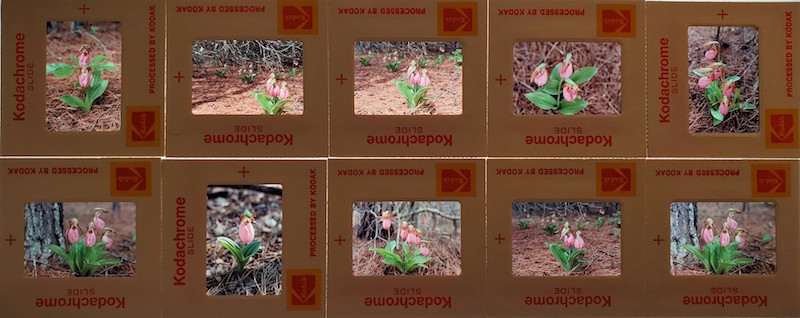
Photo of Kodachrome slides from my first encounter in 1977.
It’s been over 40 years since I saw my first pink lady’s slippers. I still have the original Kodachrome slides that I took that May day in 1977. I am so happy to end up living near an annual dance of these lady’s slippers years later. I hope the band keeps on playing for this population and others so that future generations of humans can enjoy their dance for many more decades.
By Jerry Reynolds, Head of Outreach
For more information about our upcoming activities, conservation news and ground-breaking research, follow @NaturalSciences on Instagram, Twitter and Facebook. Join the conversation with #visitNCMNS.
March is the month when I first see mayapples emerge from the forest floor behind my home in Johnston County. For me, they show up right after the peak of the early spring spawning of Least Brook Lamprey in my little stream. (That’s another story!) Their emergence is quite magical as little green knobs start to appear on what previously was a bare leaf-covered forest floor.
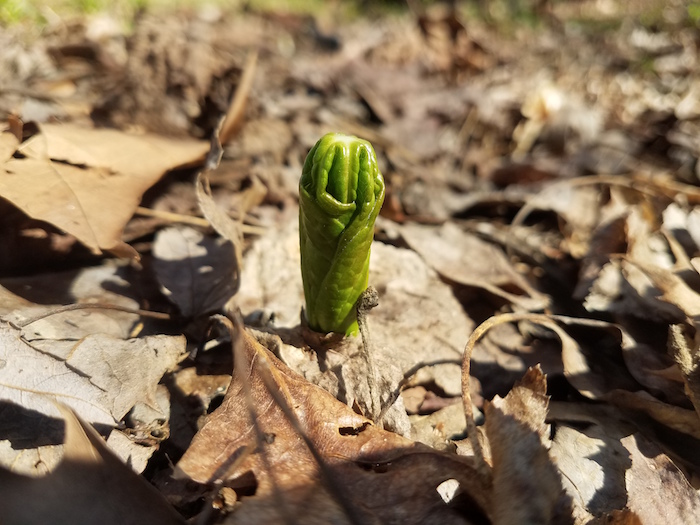
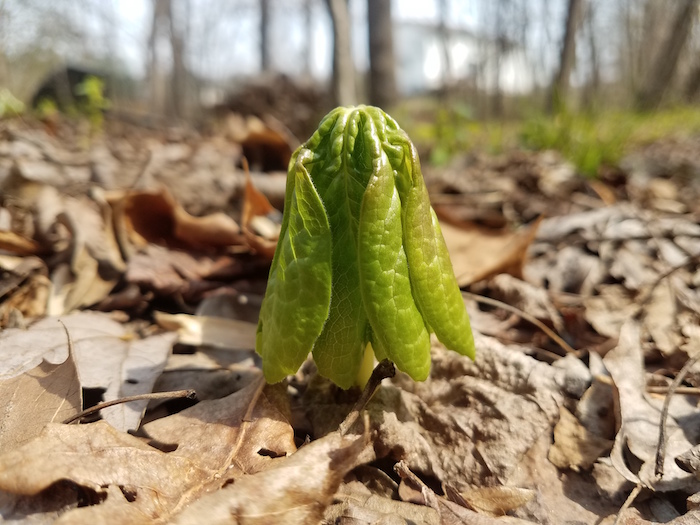
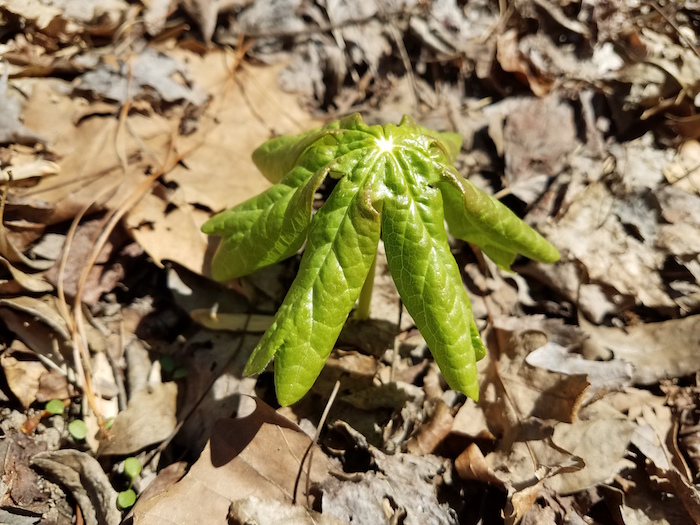
The mayapples have been there all along, as a network of underground stems called rhizomes connected to a central root system. I’ve been walking on them since last year’s plants “disappeared” in the late spring. Most people do not have a clue about what is lurking under their feet when they hike across a mayapple bed in the fall or winter.
Podophyllum peltatum, in the family Berberidaceae, is most commonly known as mayapple, may-apple or mandrake. Some people may call it umbrella-leaf because of the shape of its leaves but that name is usually used for its less common close relative, Diphylleia cymosa.
Mayapple occurs in much of the eastern United States and even up into southeastern Canada. In North Carolina it is found in forests, stream bottomlands and pastures across our state. Spring arrives early in the coastal plain so mayapples emerge here first. This wave of emergence is a slow westward march to the higher elevations in our state and a northward march to the higher latitudes of our northern states.
I have friends in the western part of the state and in more northern states such as Illinois. I post on social media when my mayapples first emerge. My friends are quick to chime in that theirs have not made an appearance yet. Then I see the later posts when their mayapples have appeared. The study of this phenomenon of seasonal variation of emergence, blooming or even activity (animals) is known as phenology. You can look at the timeline of observations of mayapples on iNaturalist and see that observations begin in February, make a steep climb in March to an April/May peak before dropping quickly to much lower numbers in June/July.

Once the mayapple emerges and unfurls its large leafy umbrellas, it’s hard not to notice. Rising up over a foot above the forest floor on a single stem to a single or double leaf, they make their presence known! The palmately-lobed leaves look like miniature palm trees on the forest floor after they have first unfurled their canopy.

Those leaves can grow to be 8 inches or more in diameter and they hide the mayapple’s beautiful flower when it blooms. If you get down and look under that layer of broad leaves, you will see that there is a single white flower on a short stalk emerging from the fork of the double leafed stems. Only older plants with two leaves produce flowers. The single leafed mayapples are younger and do not produce flowers.
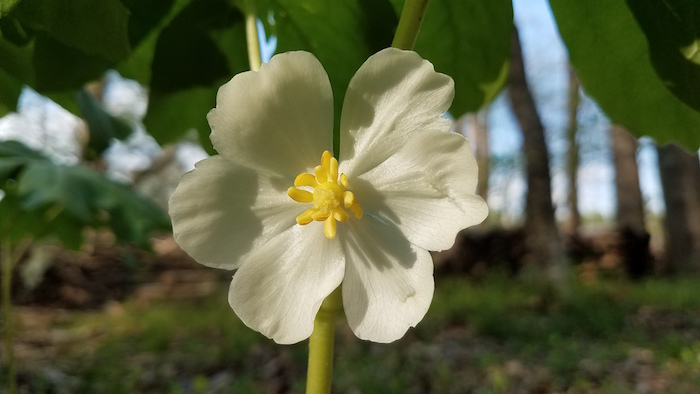
The name “mayapple” was probably given because it blooms in May, at least in the more northern latitude or higher elevation populations. My mayapples bloom in March and I jokingly refer to them as “Marchapples”! They develop fruits in April which ripen in May, thus “mayapple” seems an appropriate name again. I usually do a weekend trip to the mountains in early May. After watching my mayapples emerge, grow, bloom and fruit behind my house at an elevation of only 230 feet earlier in the spring, I enjoy seeing the mayapples blooming in May in the higher elevations of our mountains.
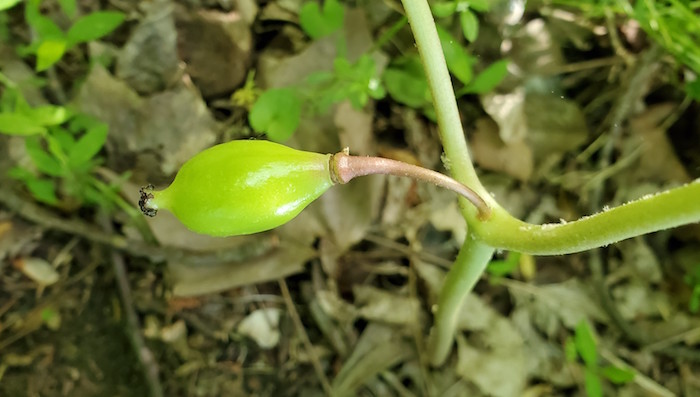
When you see a patch of mayapples, it may only be one plant! They first grow from a central root system but spread as their rhizomes grow laterally underground in a slow march to colonize the forest floor. The mayapples that you see emerge from the forest floor are sprouting from those rhizomes of the same plant. So that wonderful green patch of dozens or more mayapples may be just one mayapple plant!
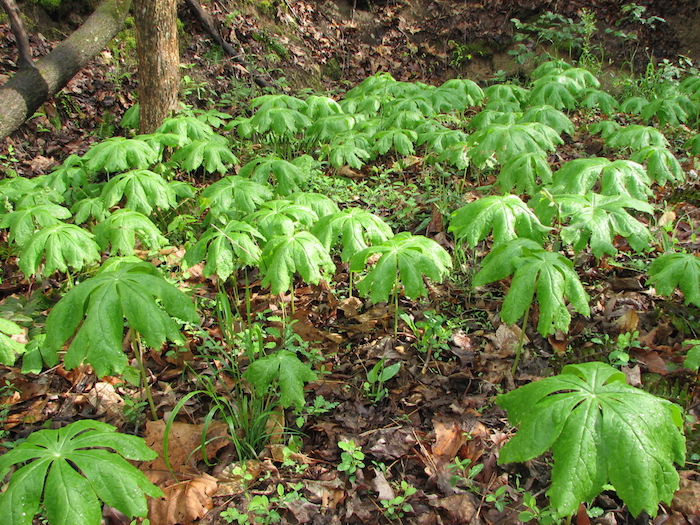
All parts of the plant are poisonous, except for the fruit once it ripens. The plants contain podophyllotoxin which historically and presently has a variety of medicinal uses including promise in the treatment of some cancers. The ripe fruits are eaten by a variety of animals and probably are a favorite of the eastern box turtle. The hanging fruits are just about the right height for a box turtle to reach up and grab for a “take-off” meal. The box turtle may provide a means of seed dispersal by later pooping out the seeds in other parts of the forest.
So, I look forward to March each year when the march of the mayapples begins in my backyard and continues across the state well into May. I hope that they have “marched” to a natural area near you!
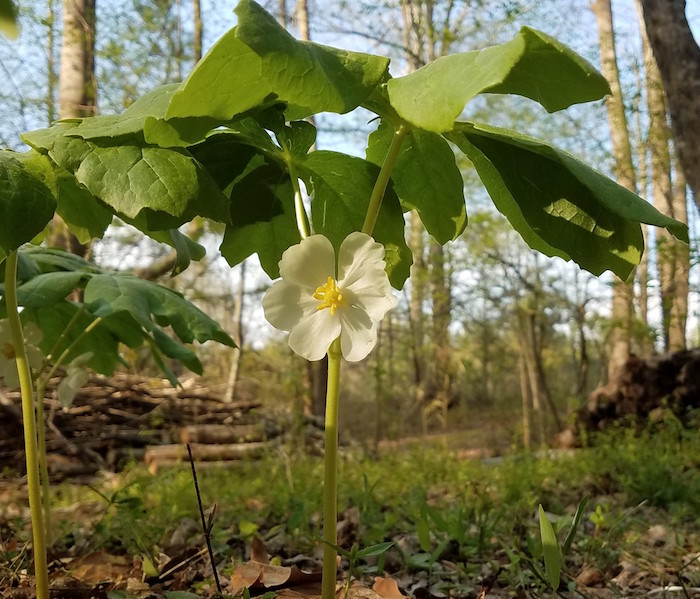
By Jerry Reynolds, Head of Outreach
For more information about our upcoming activities, conservation news and ground-breaking research, follow @NaturalSciences on Instagram, Twitter and Facebook. Join the conversation with #visitNCMNS.
